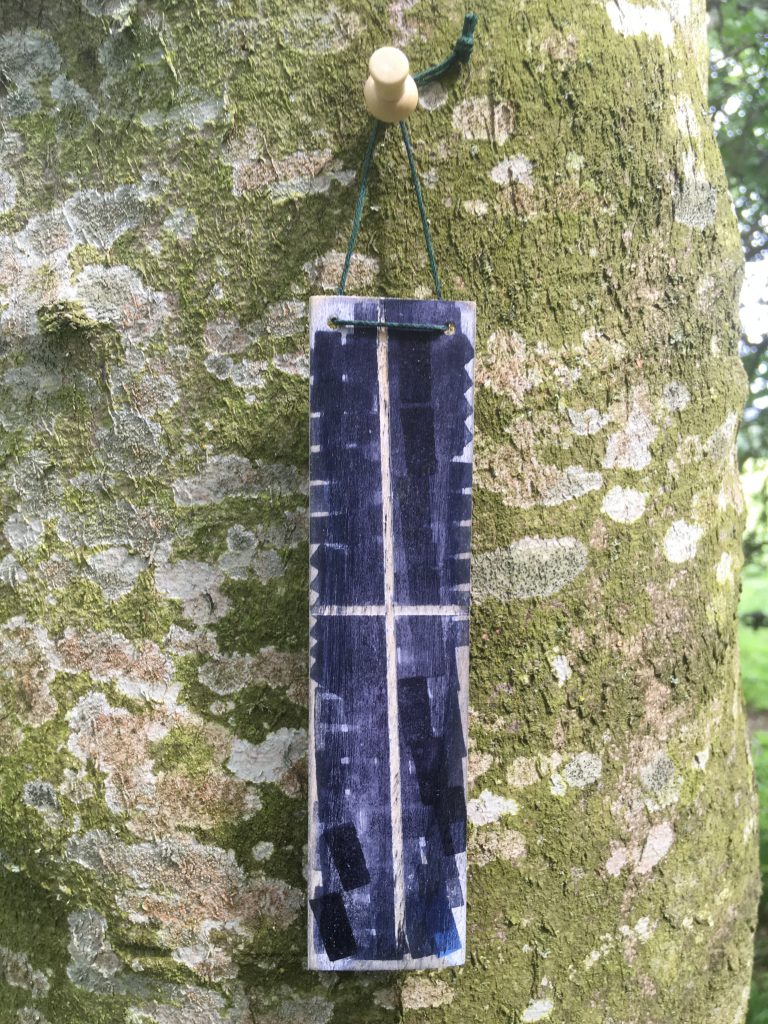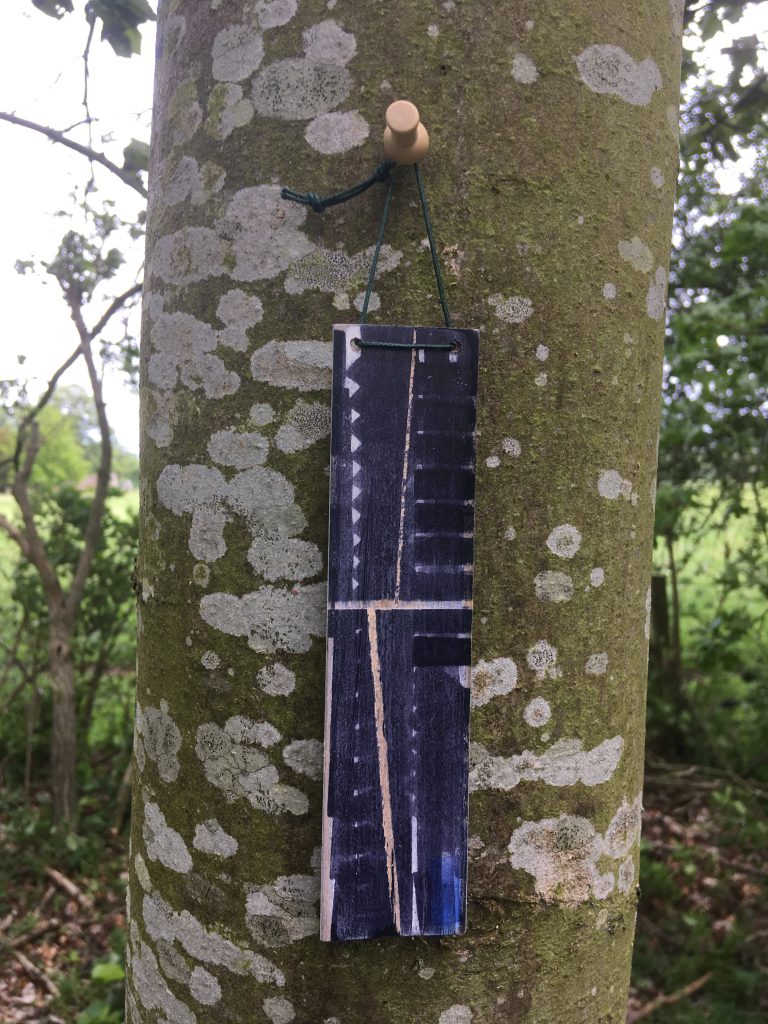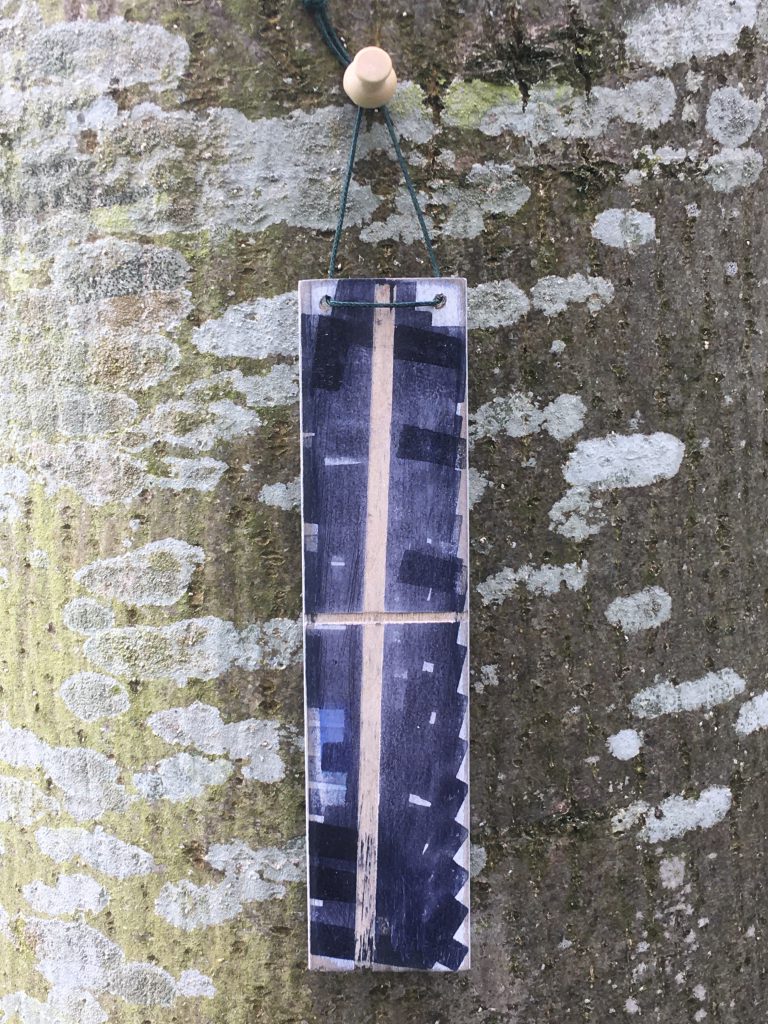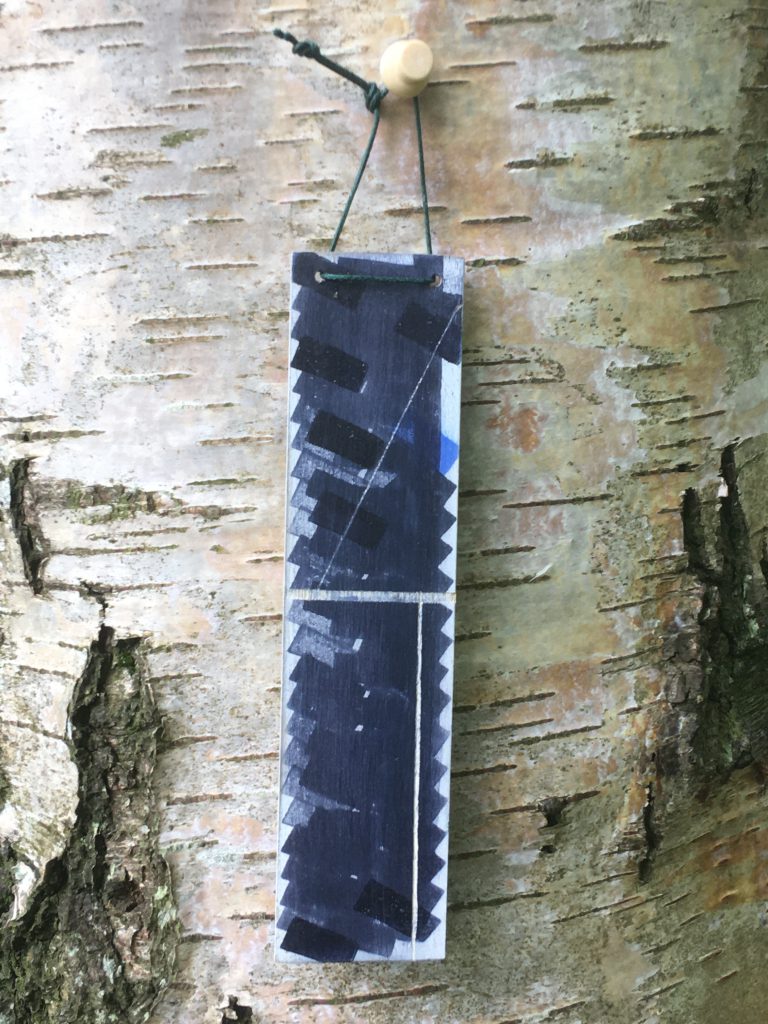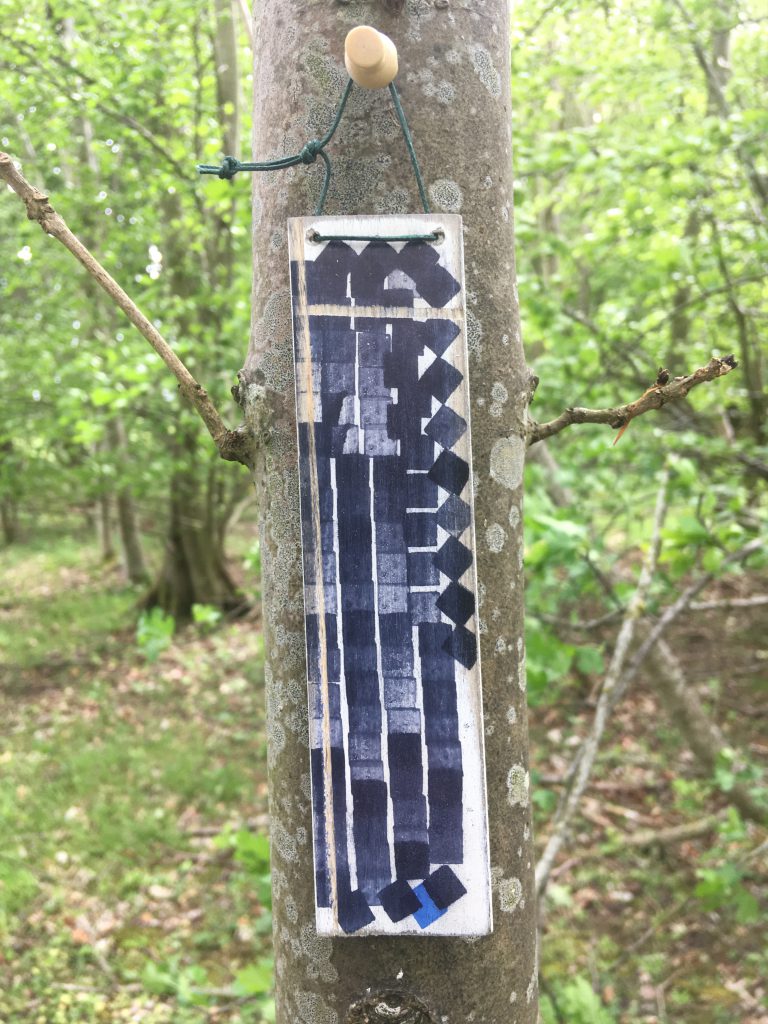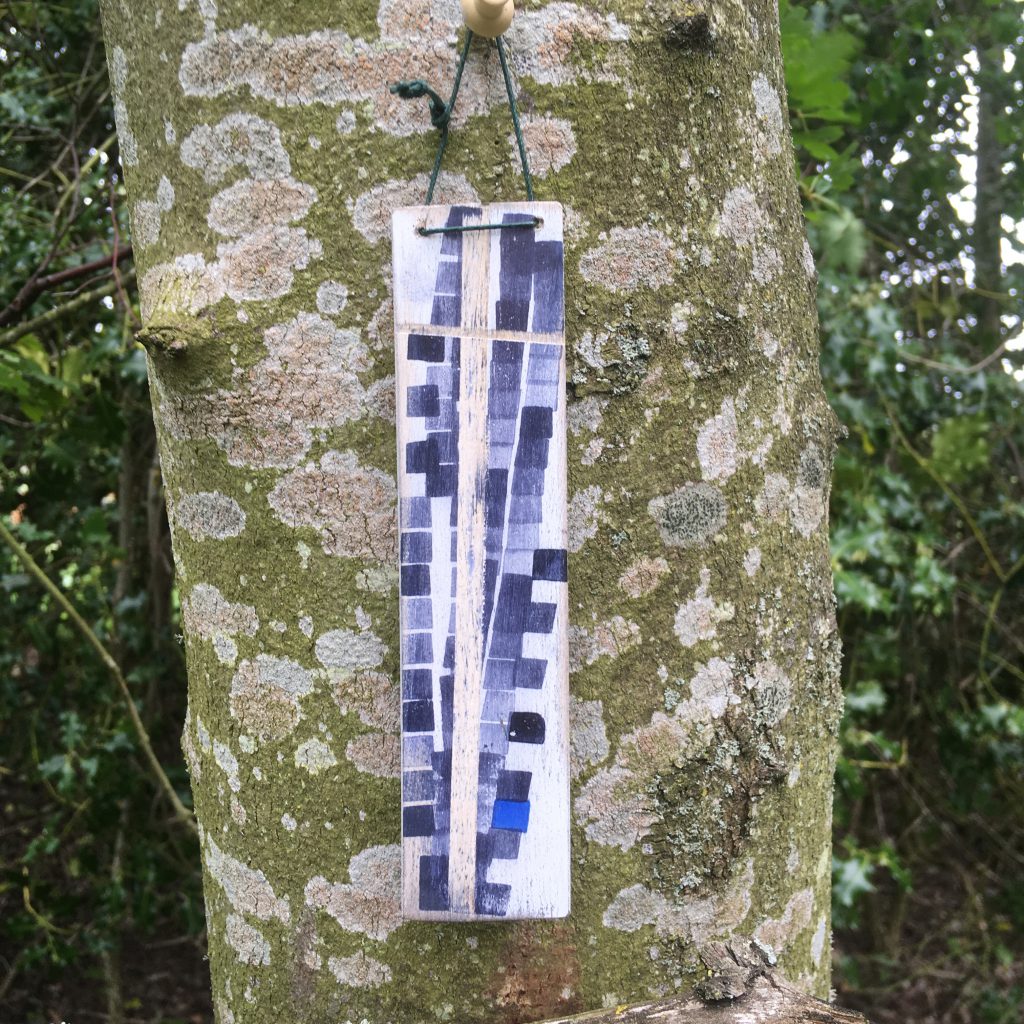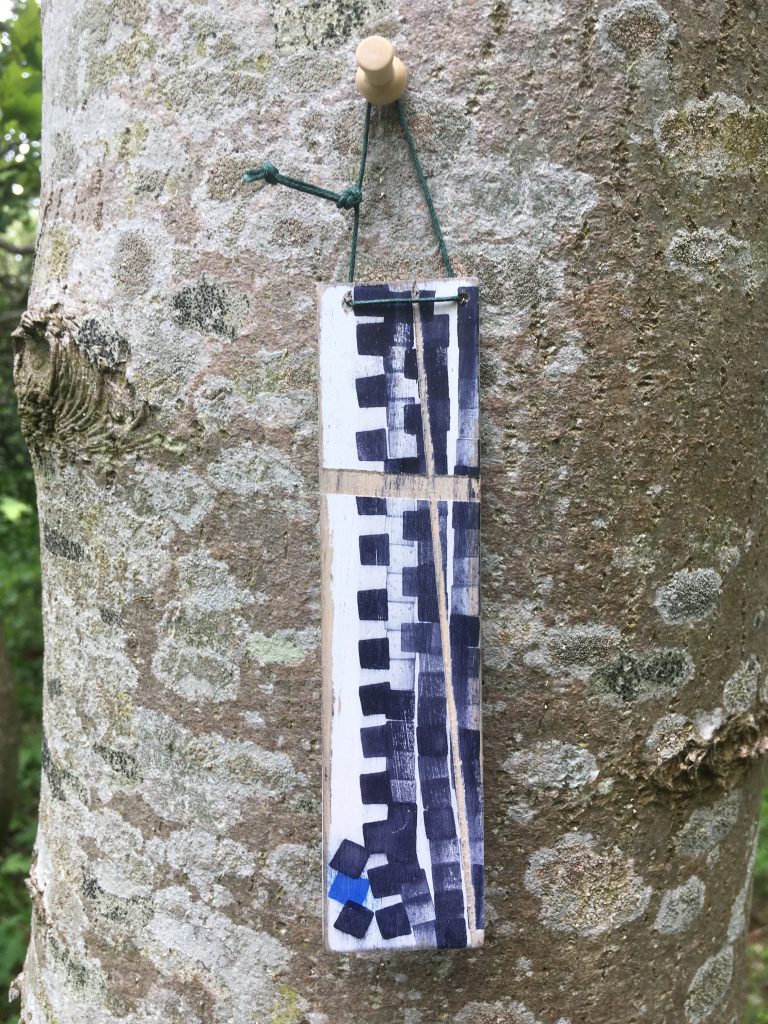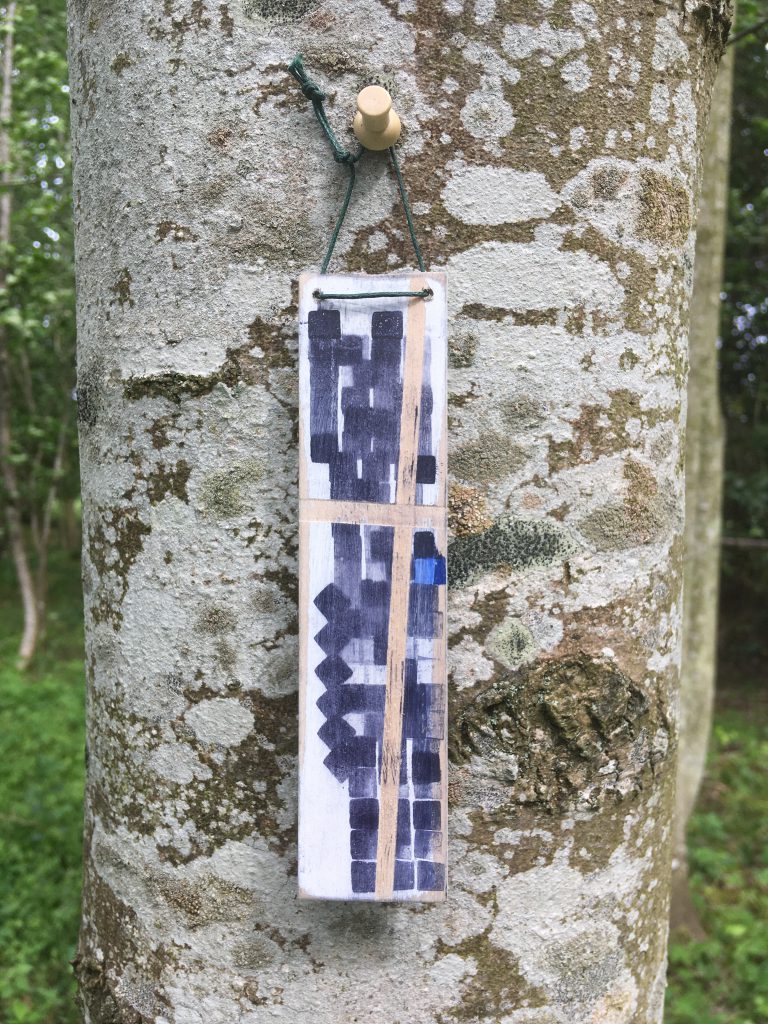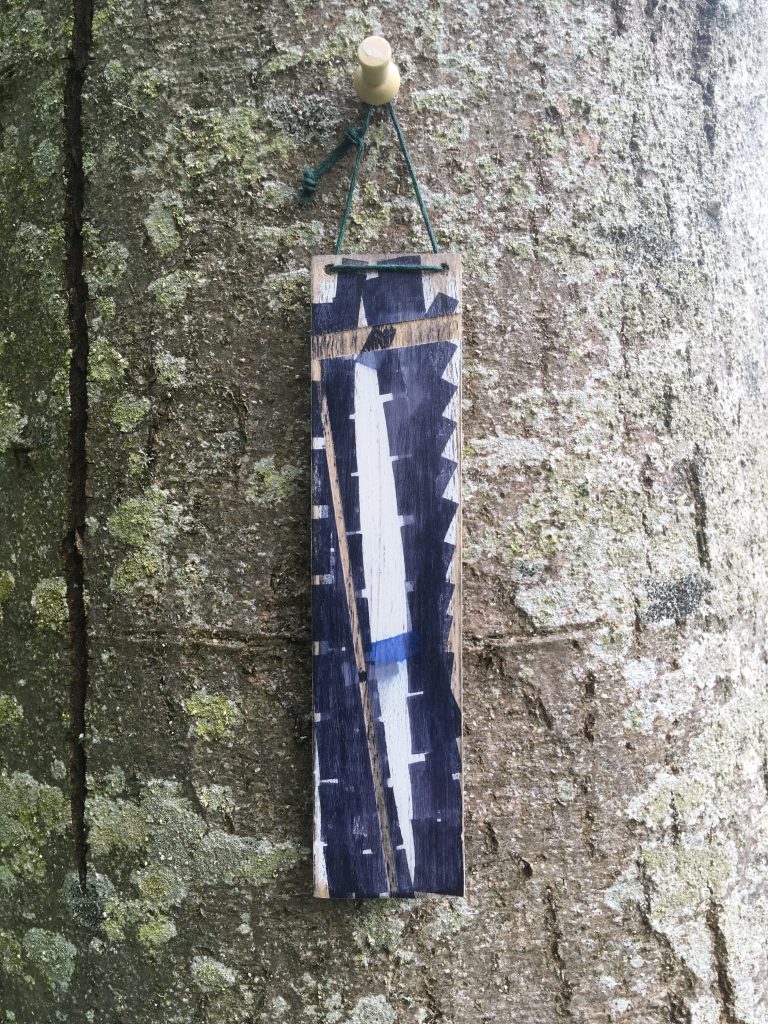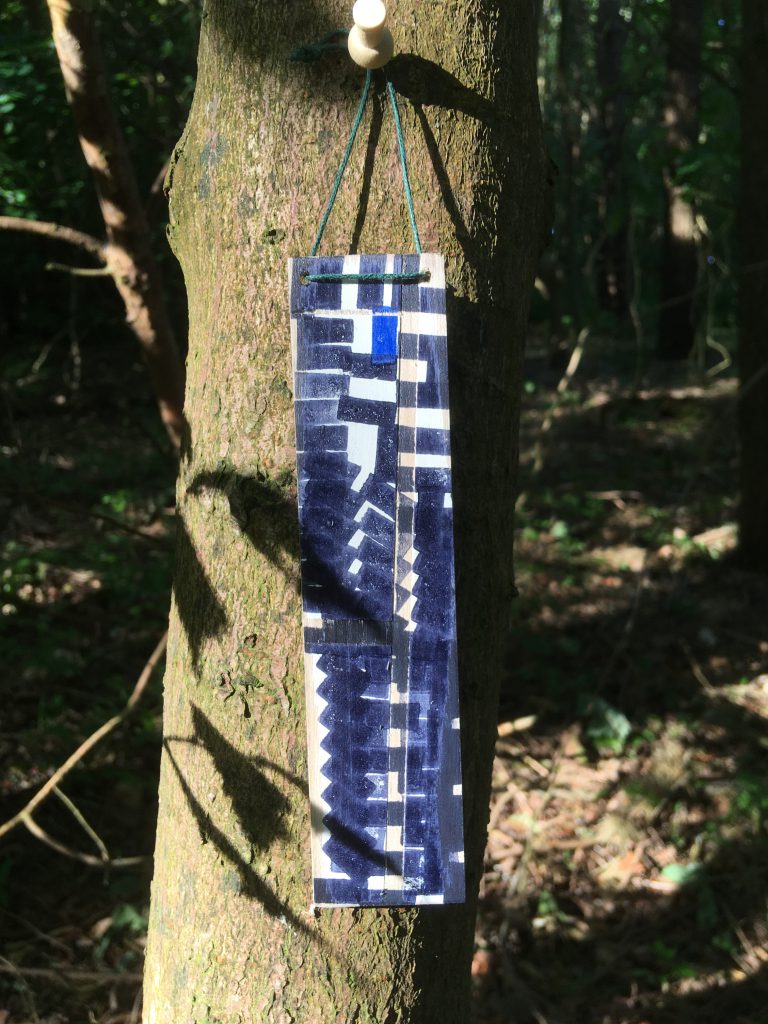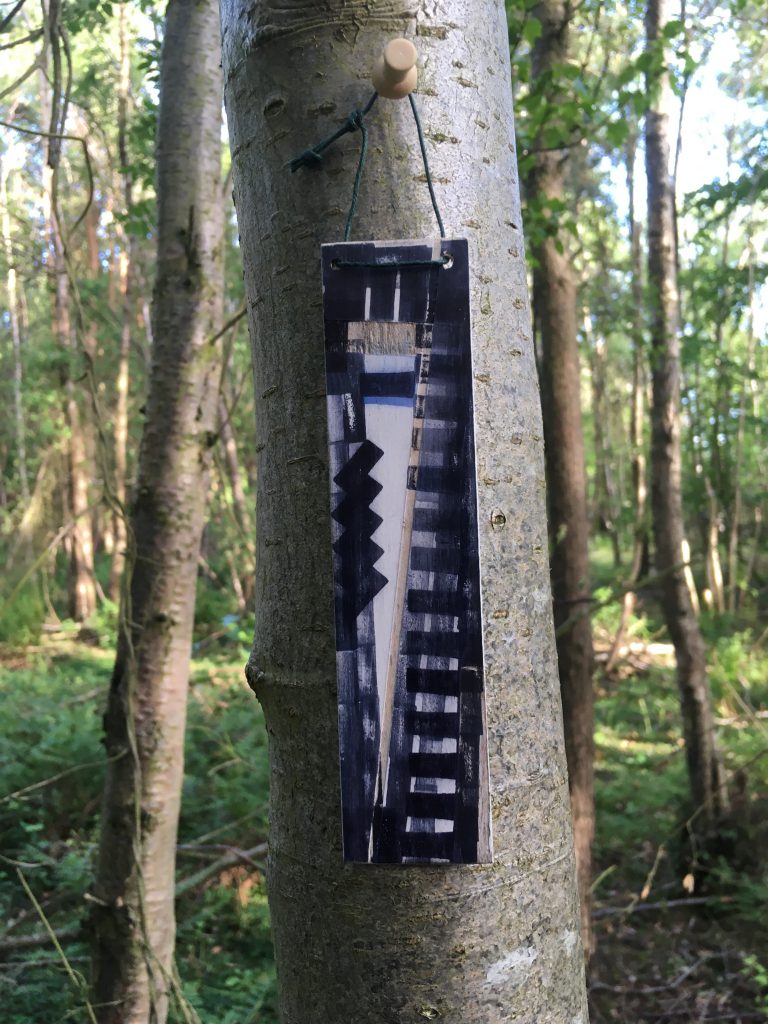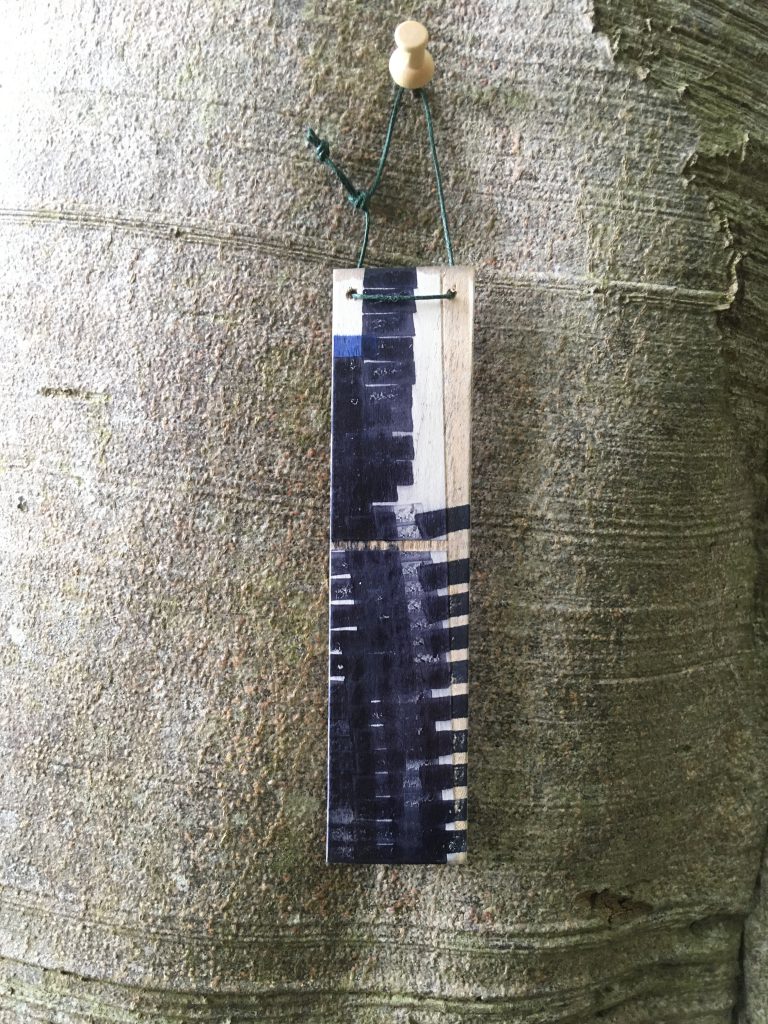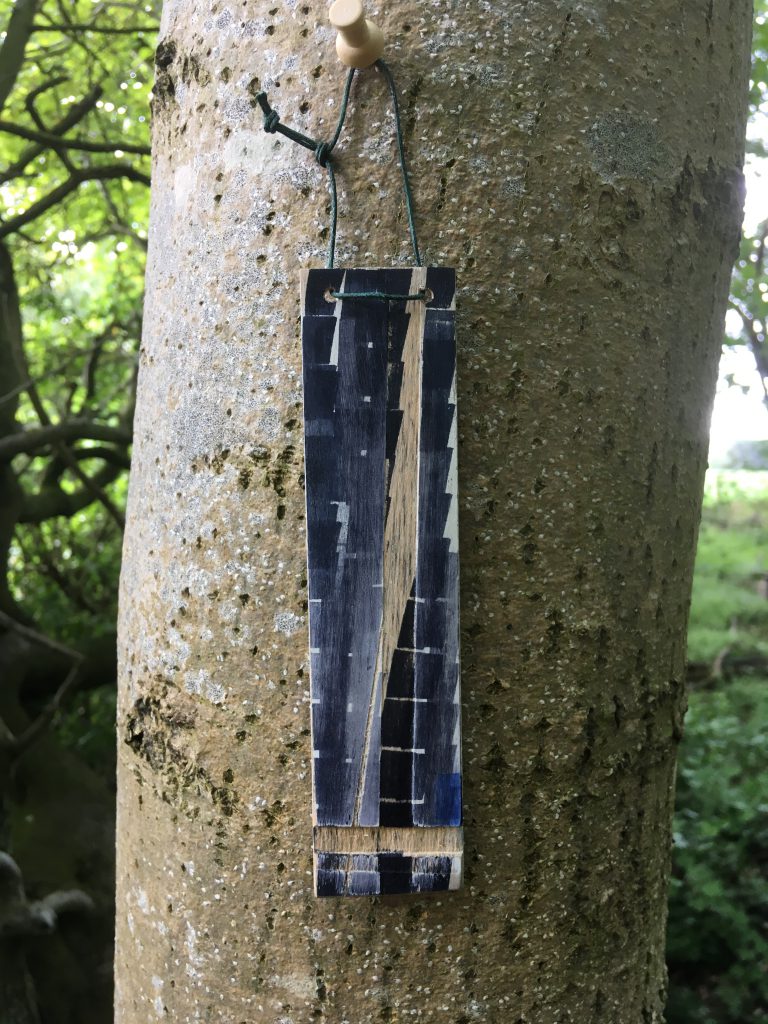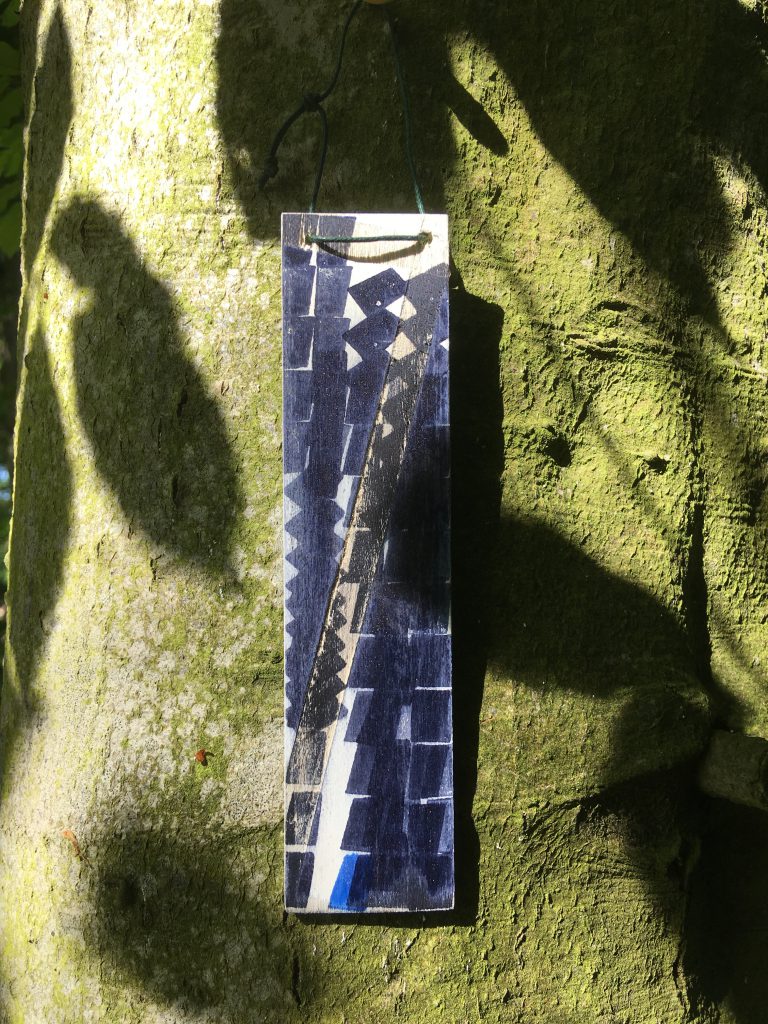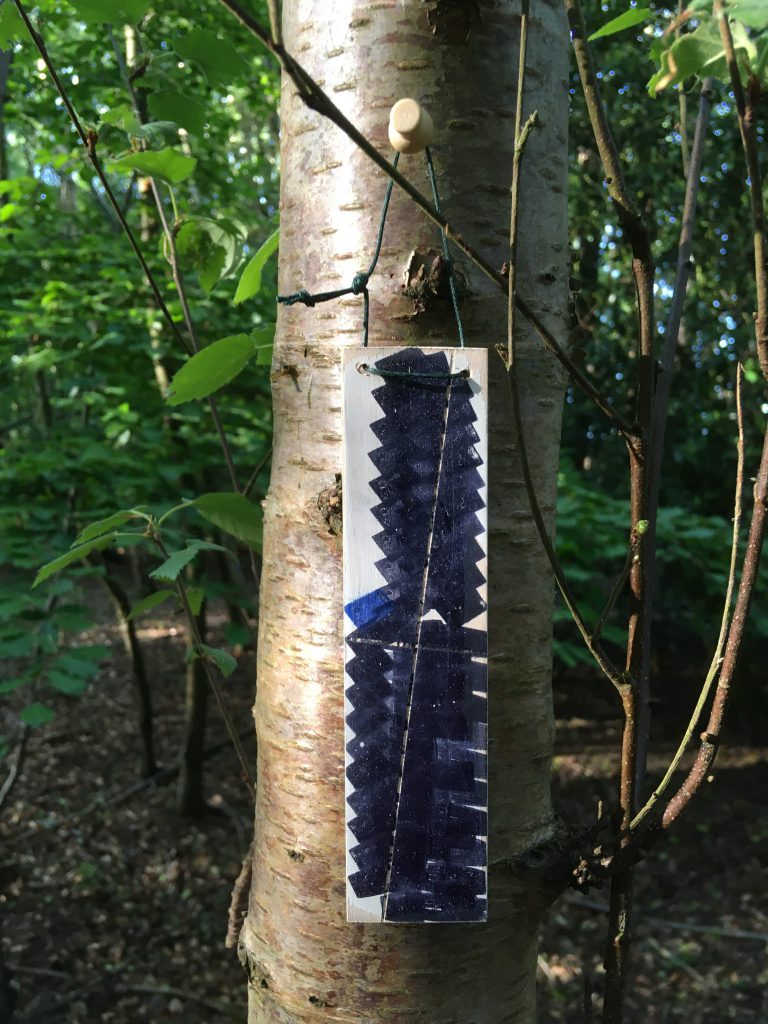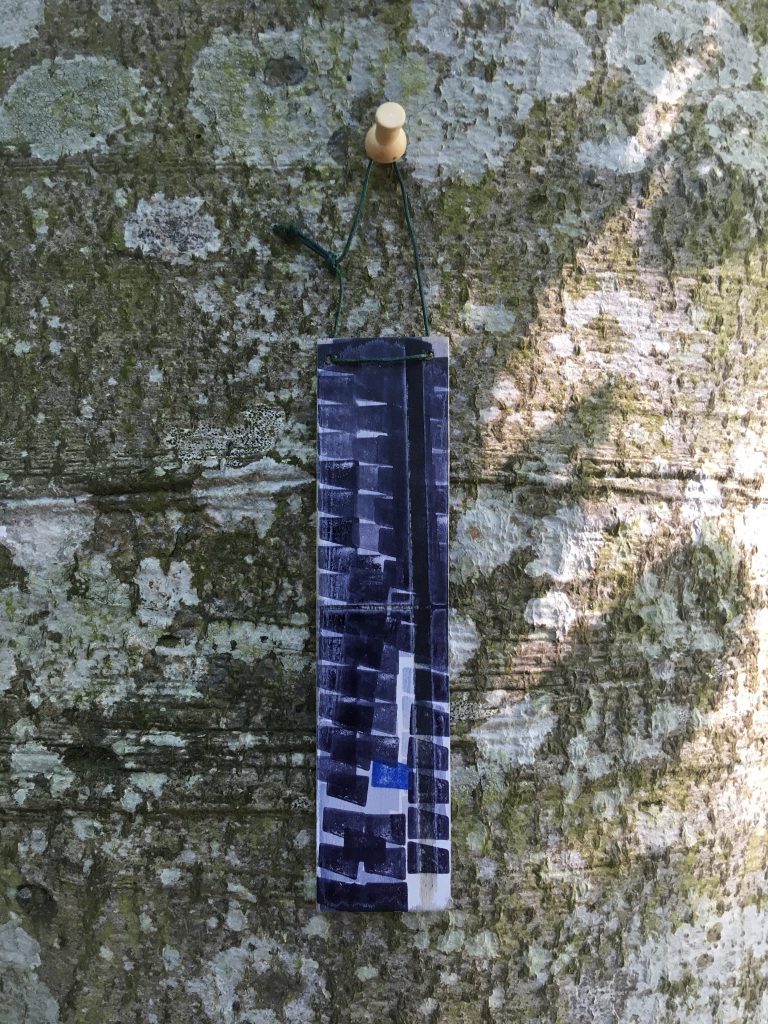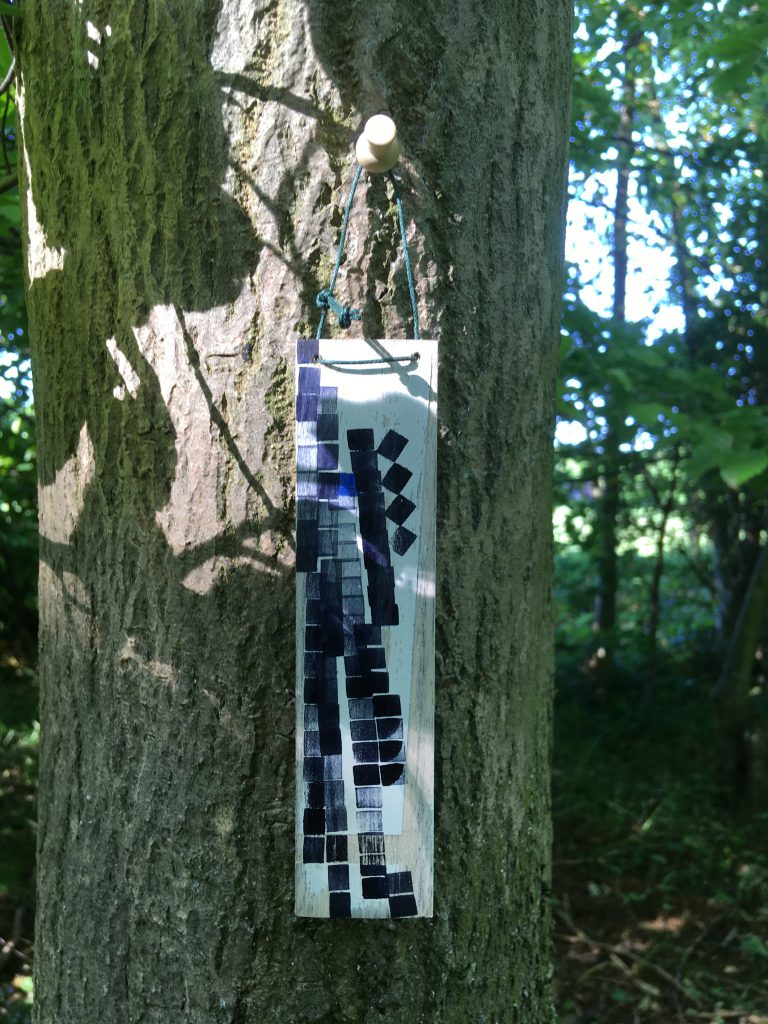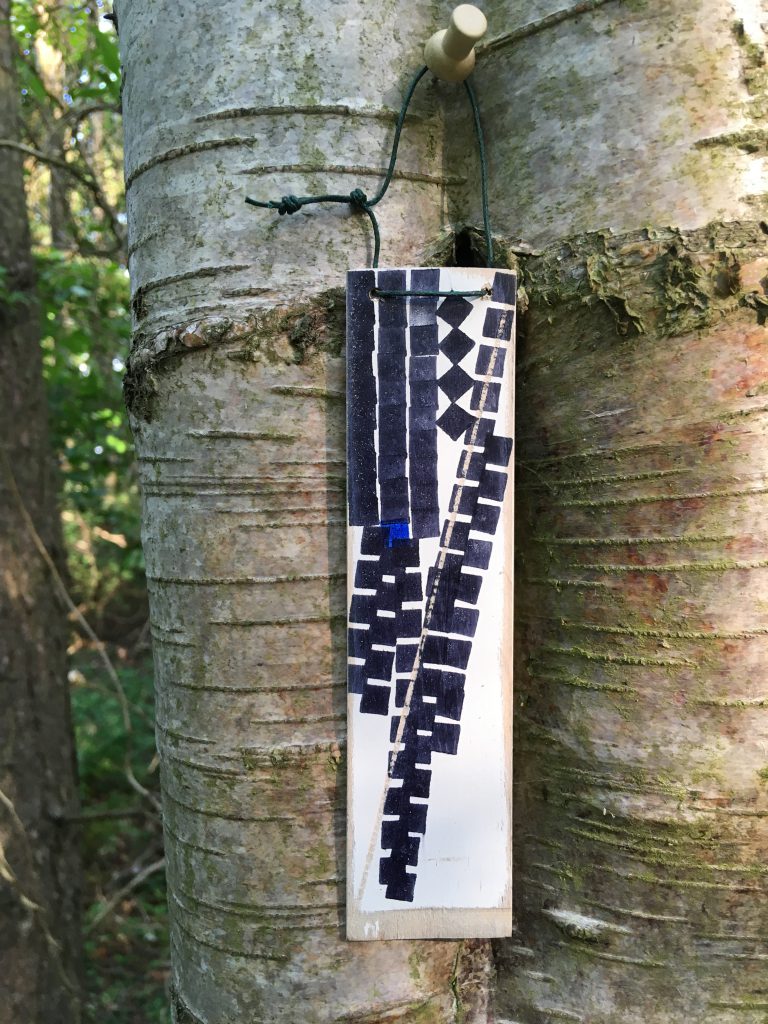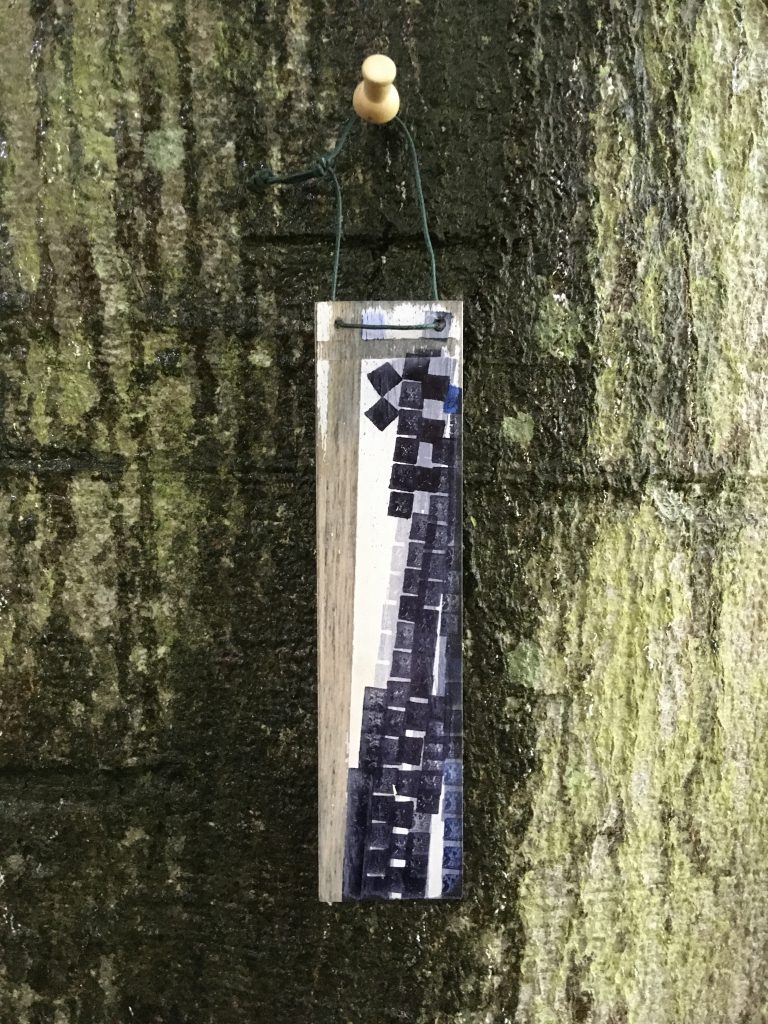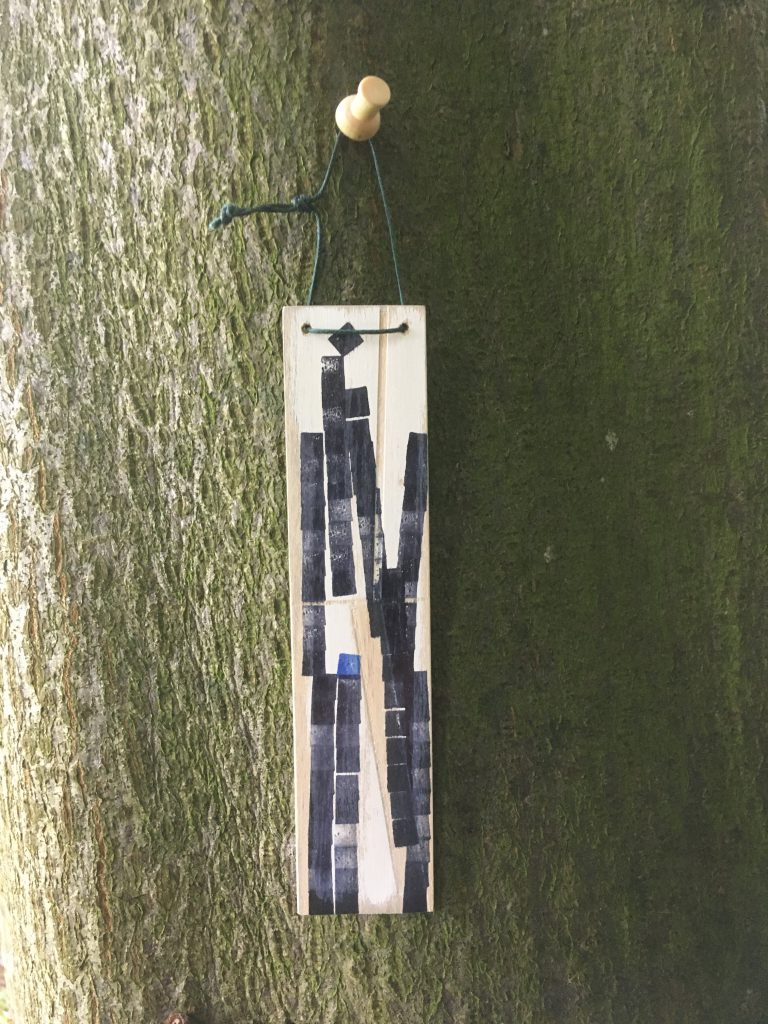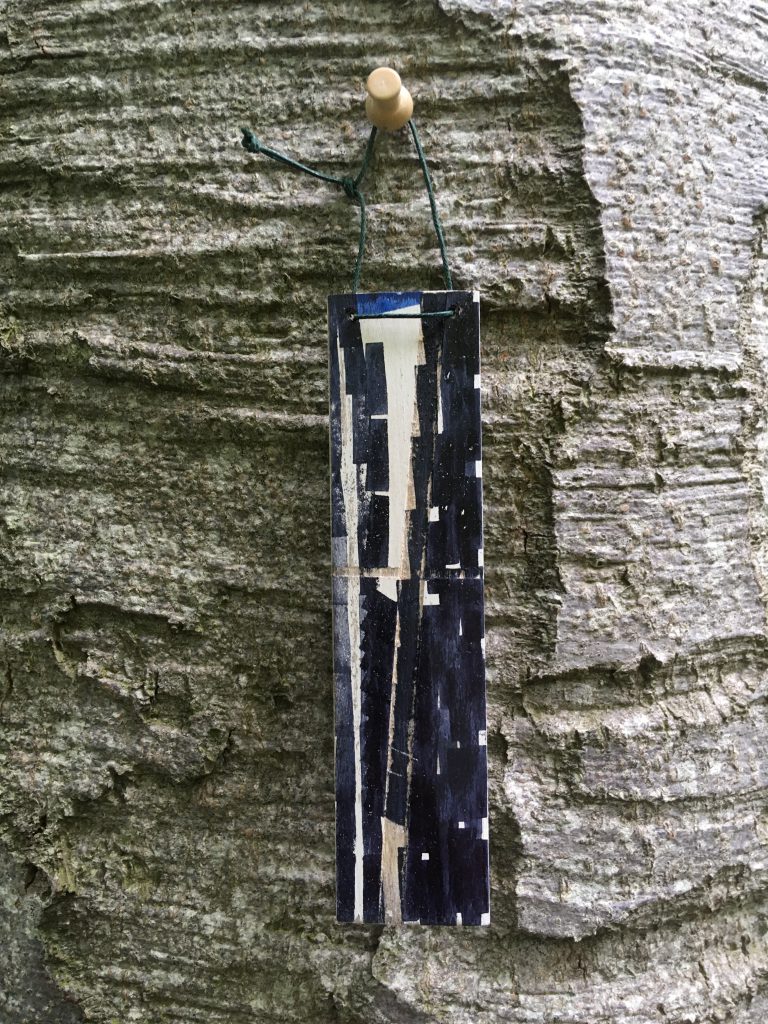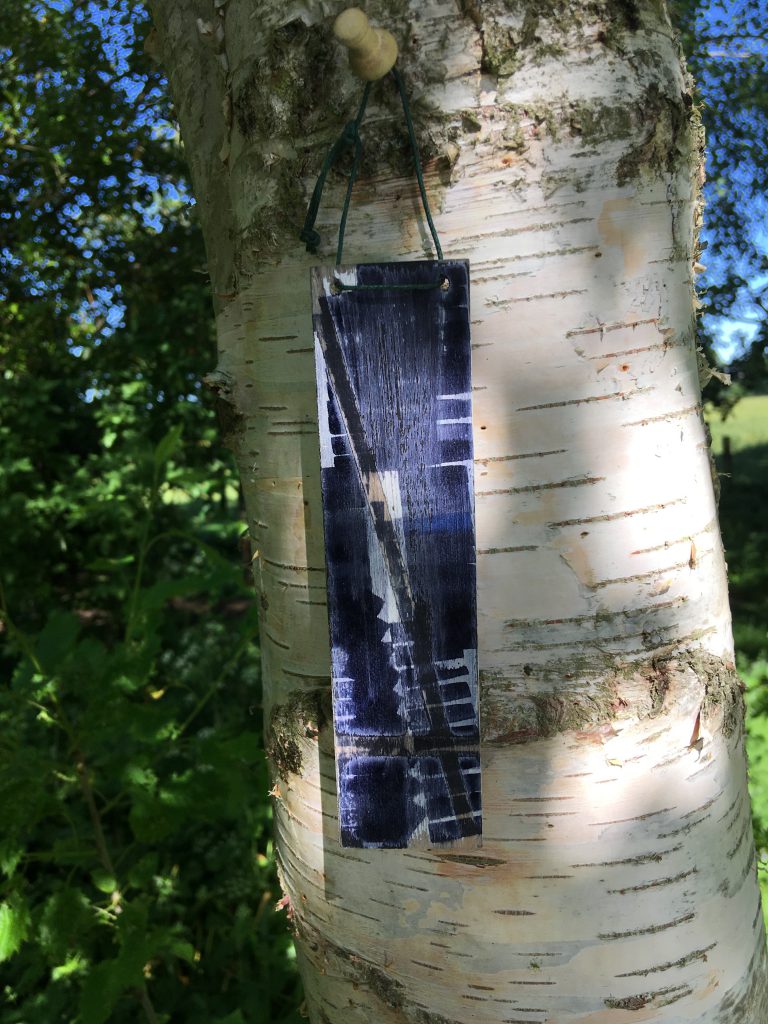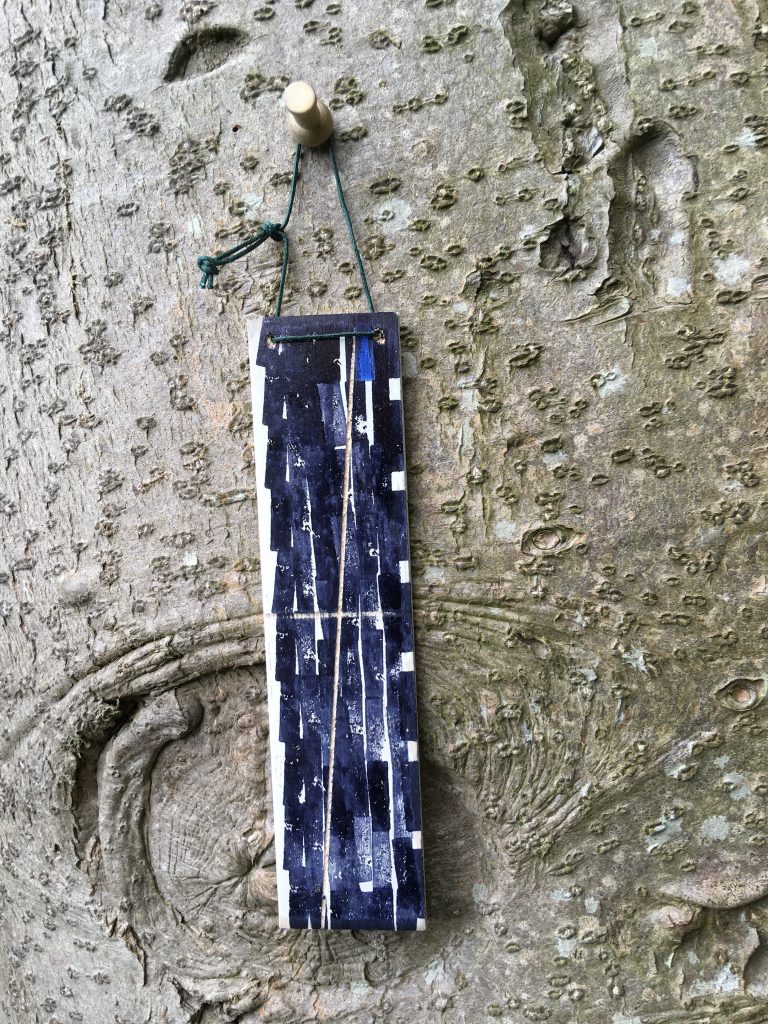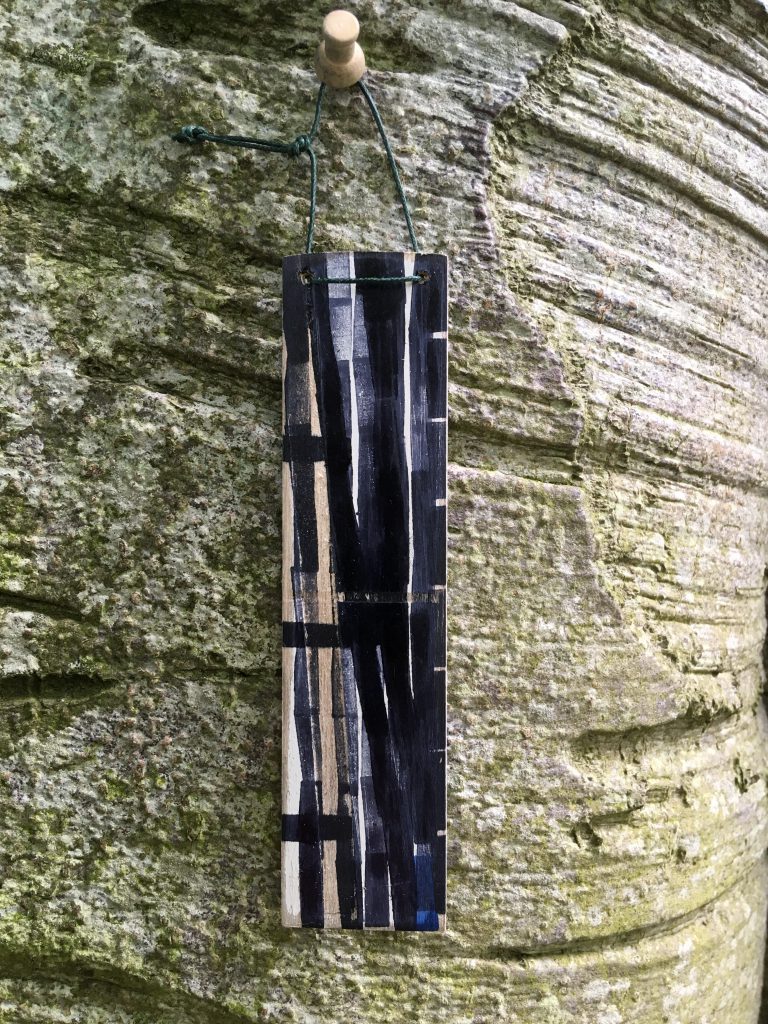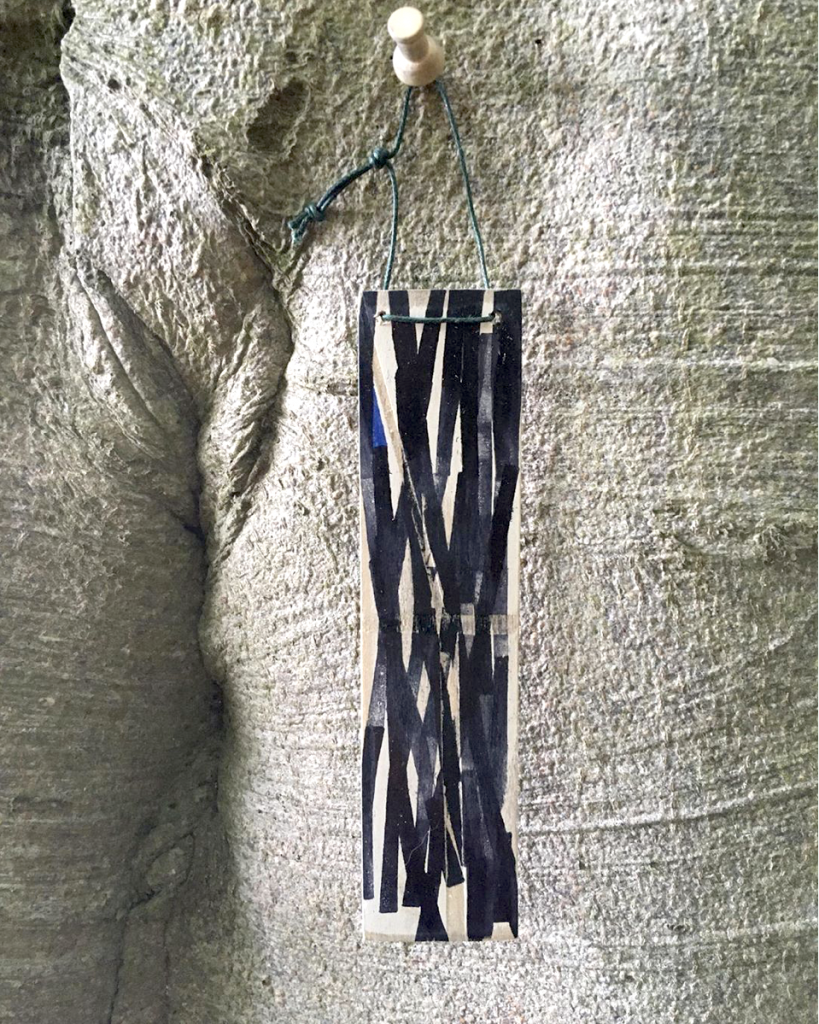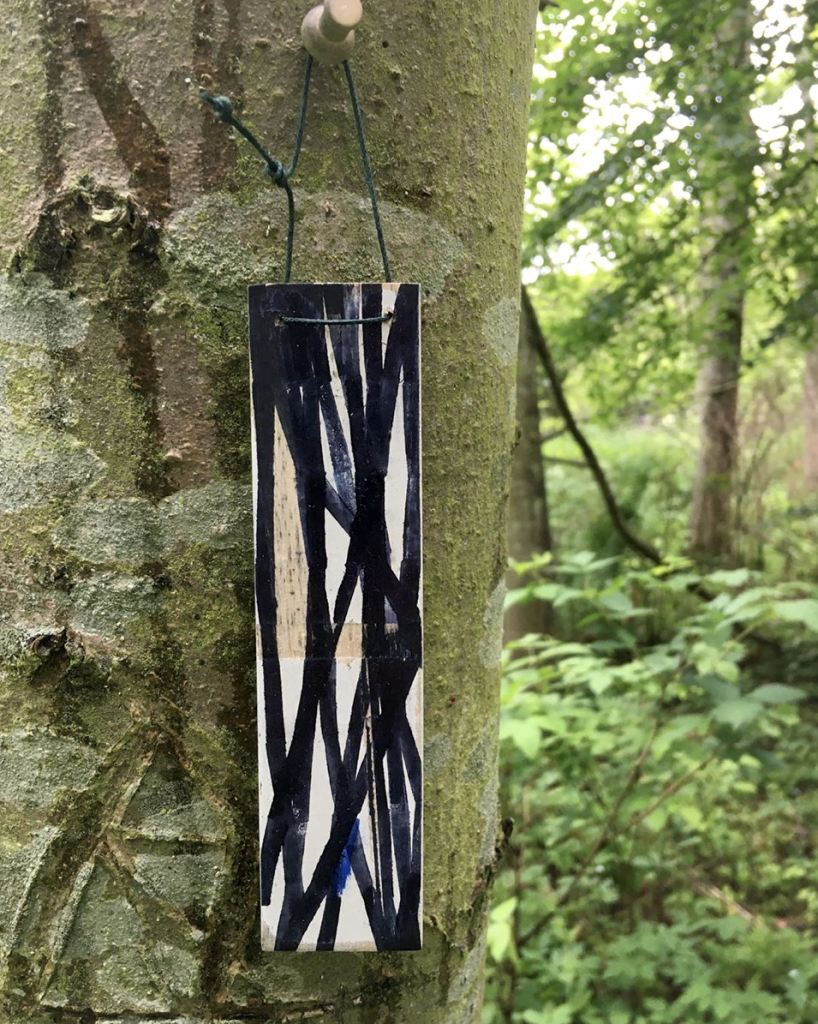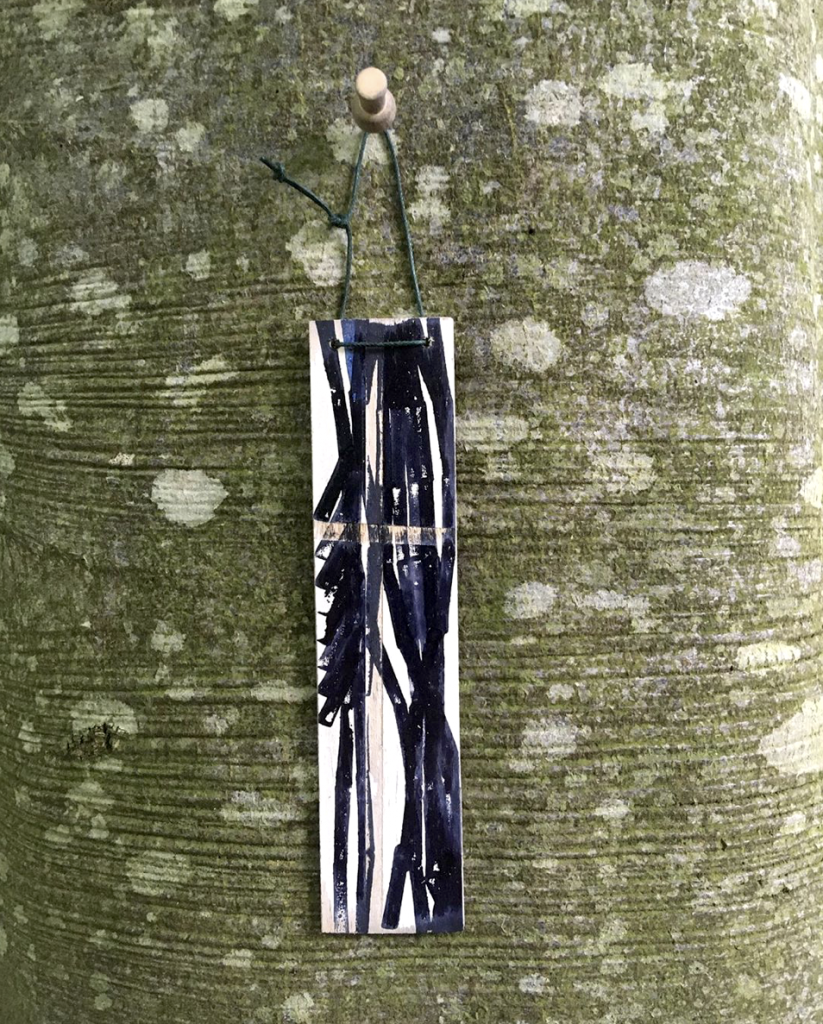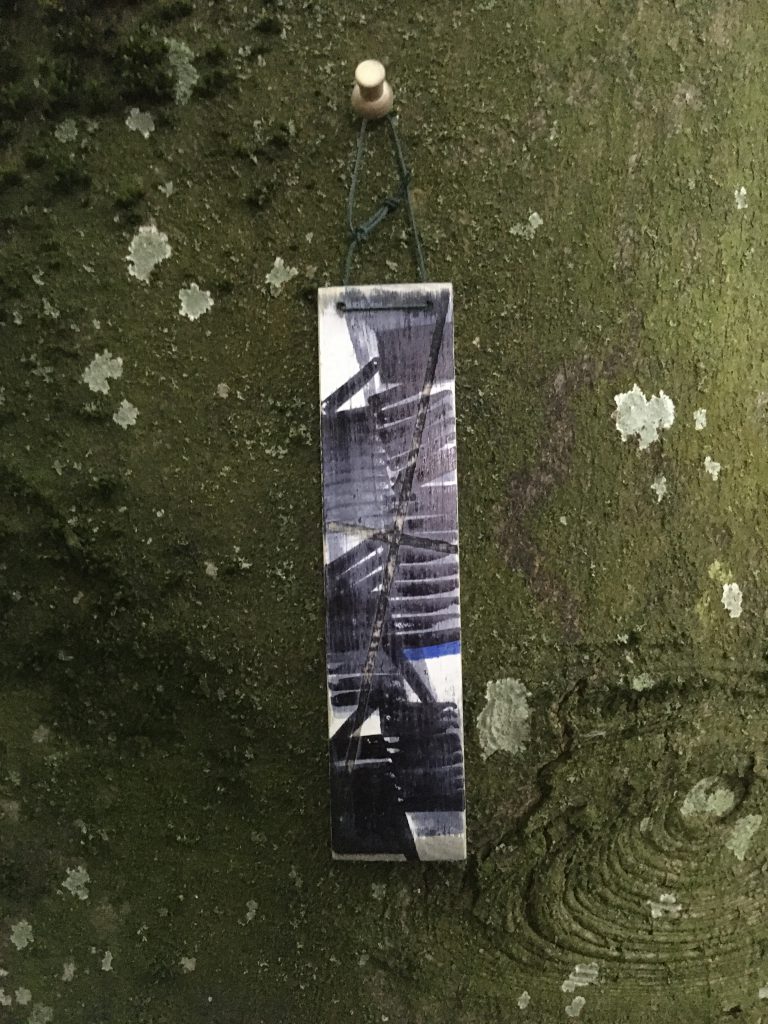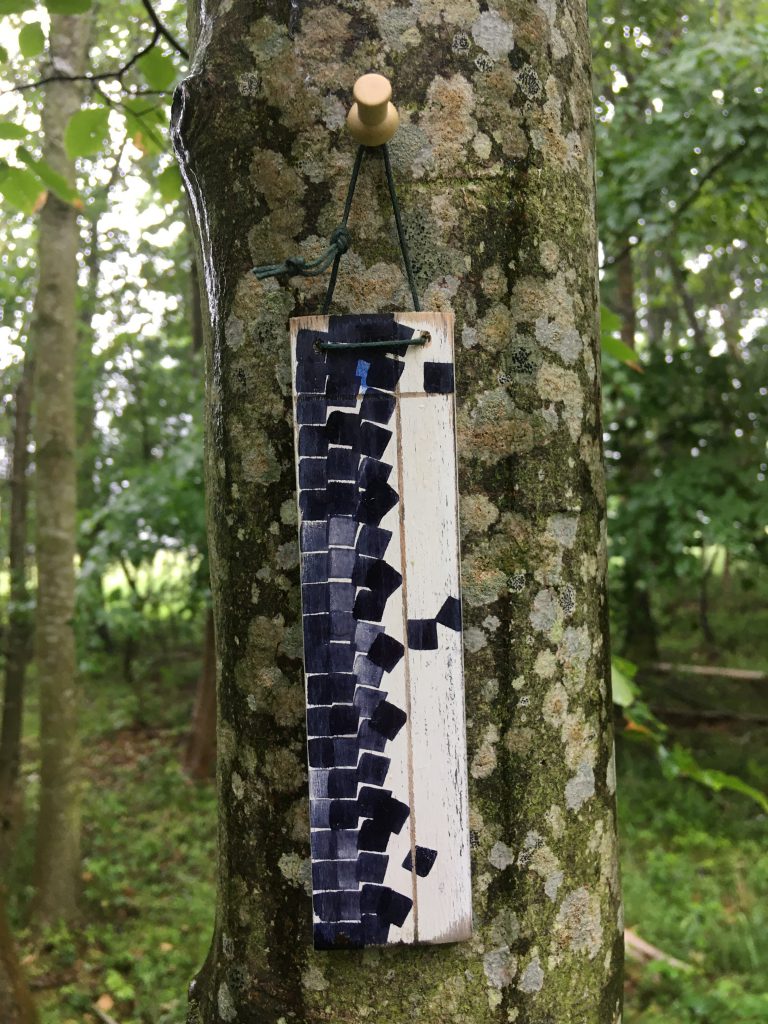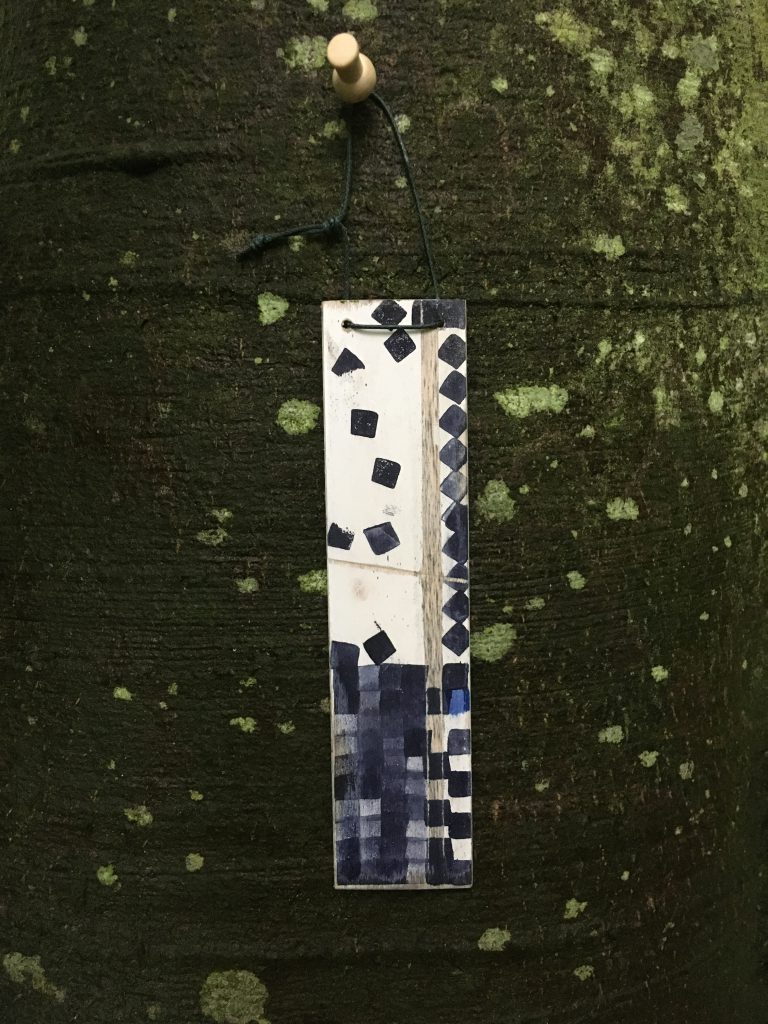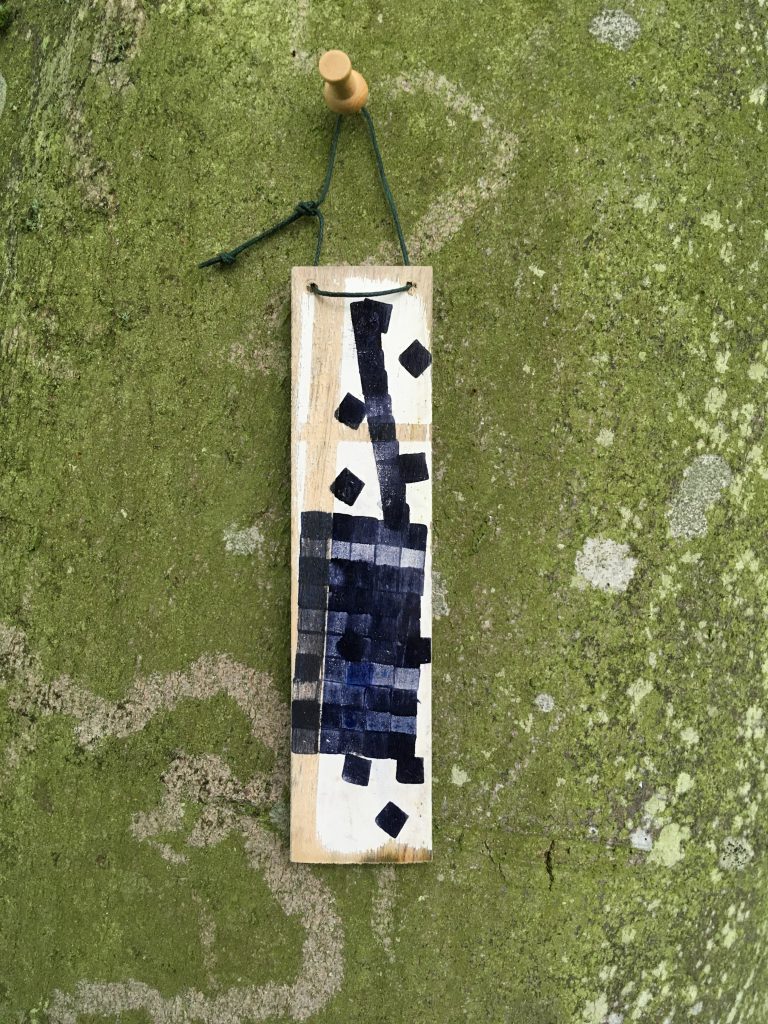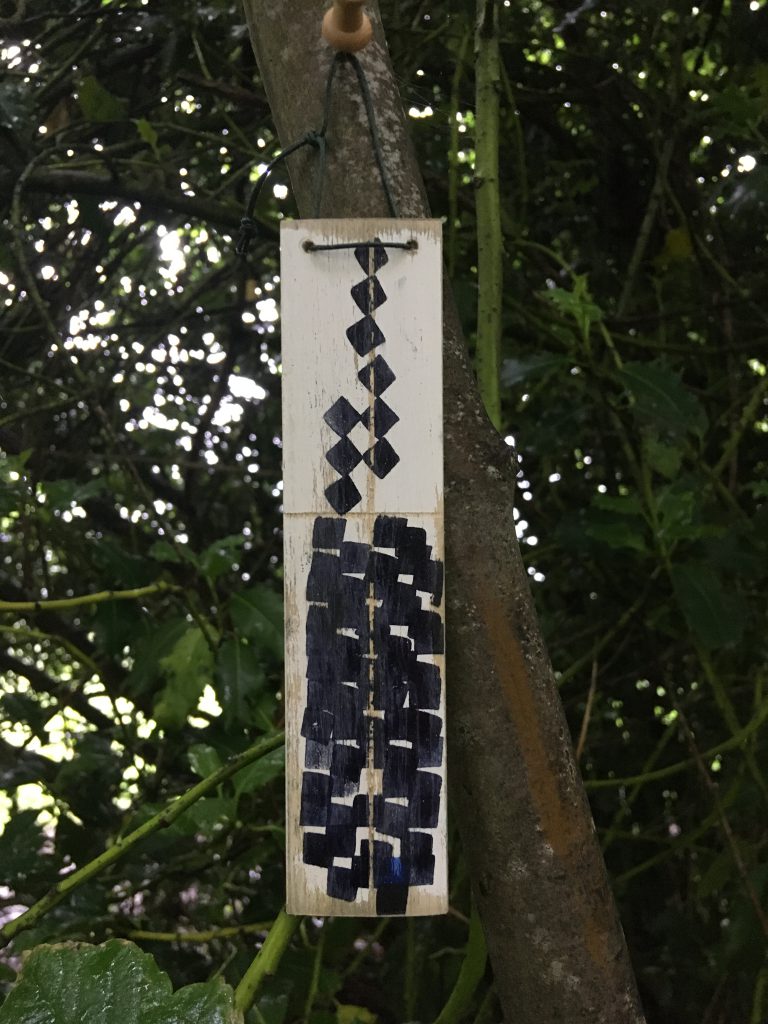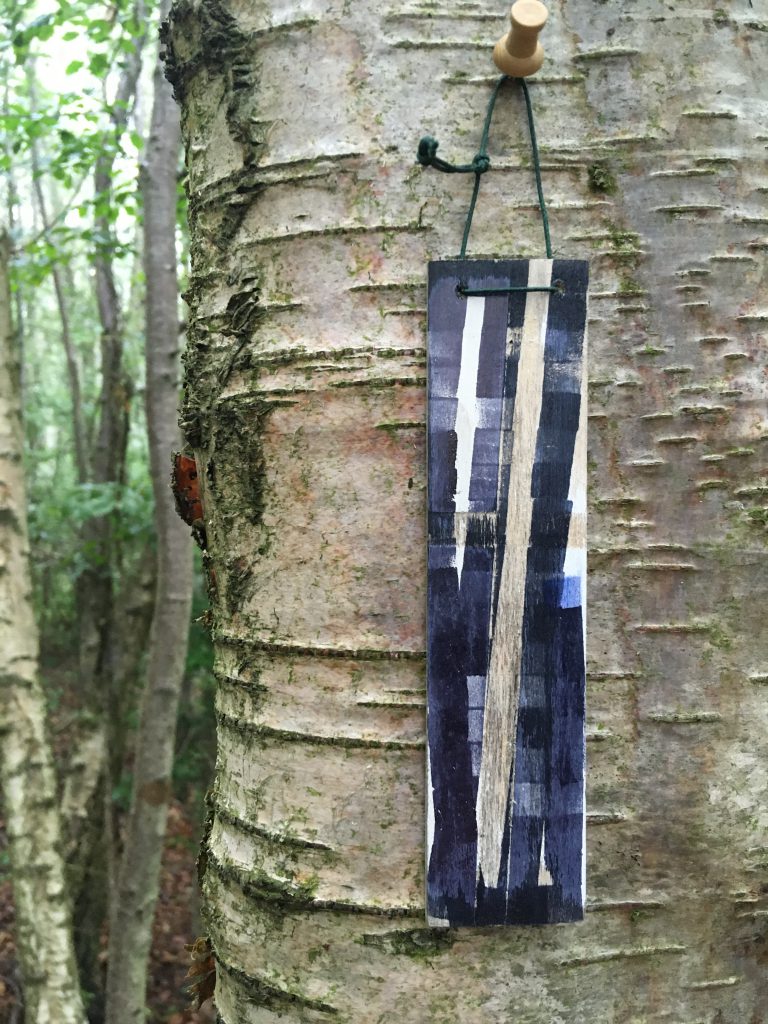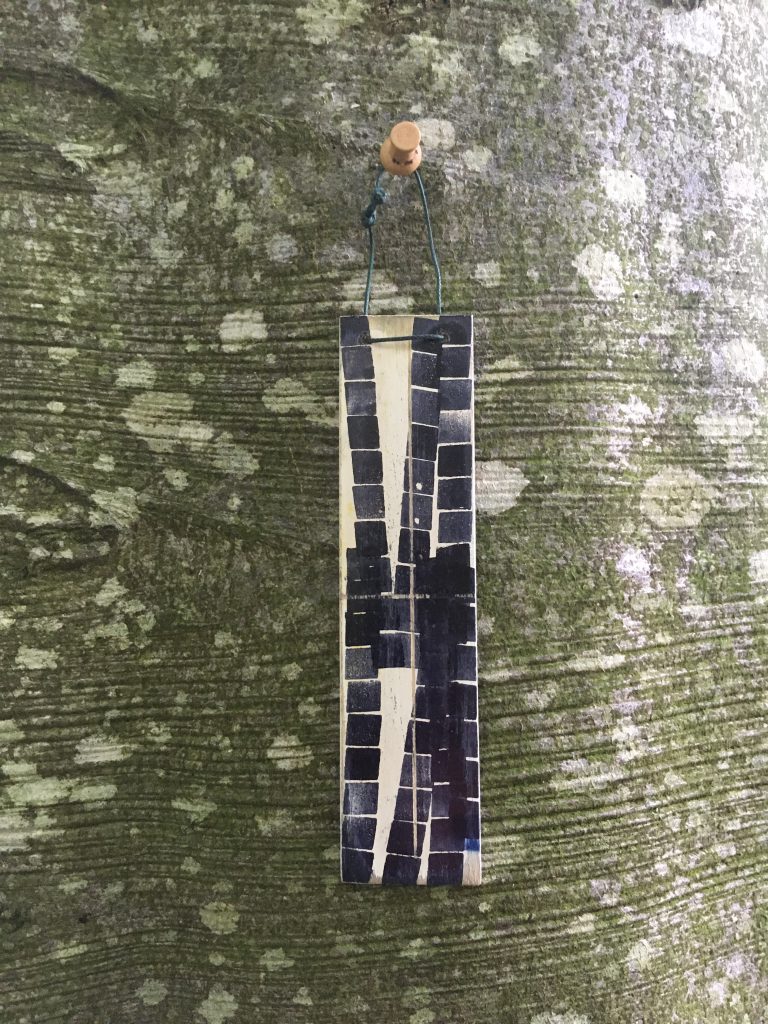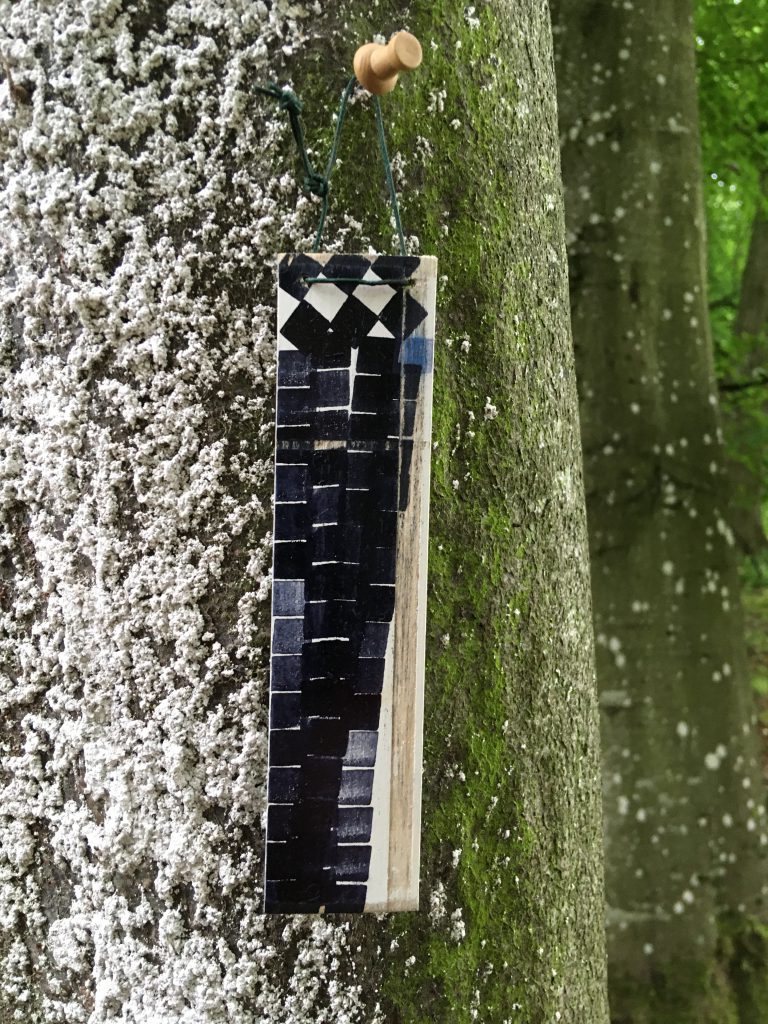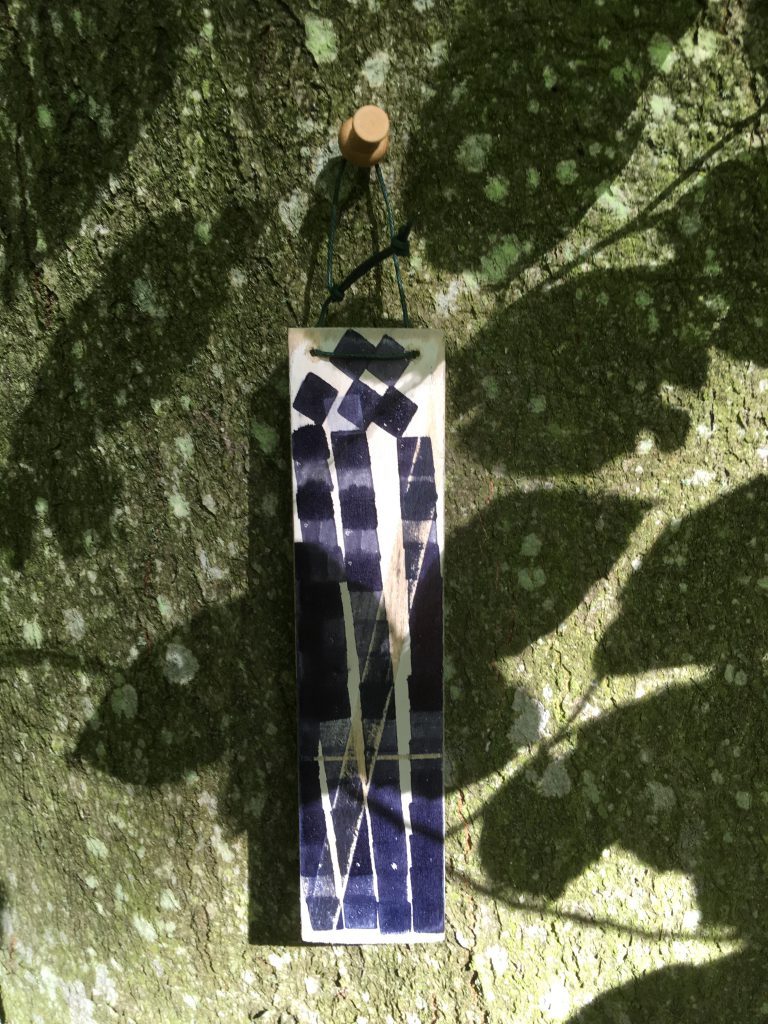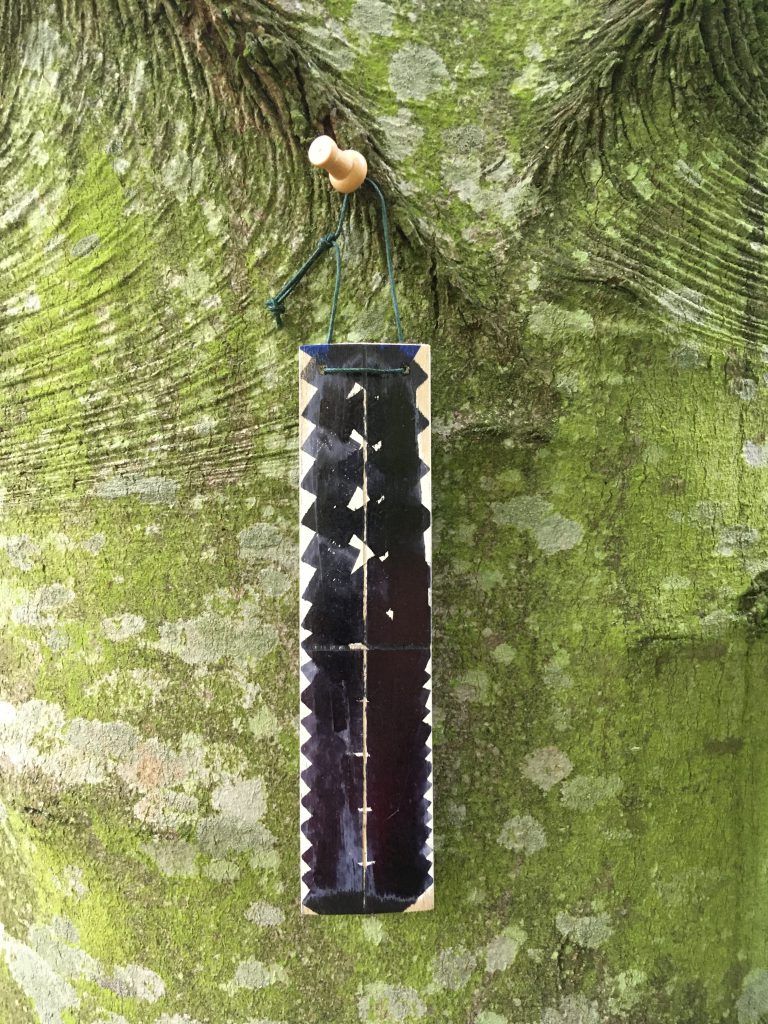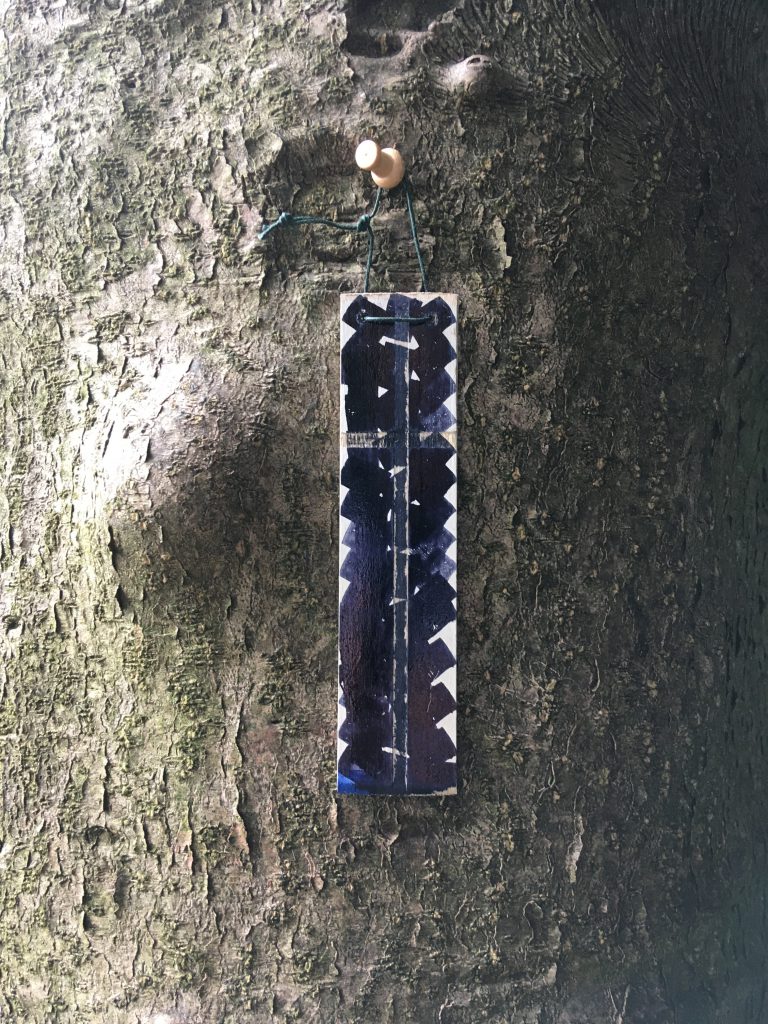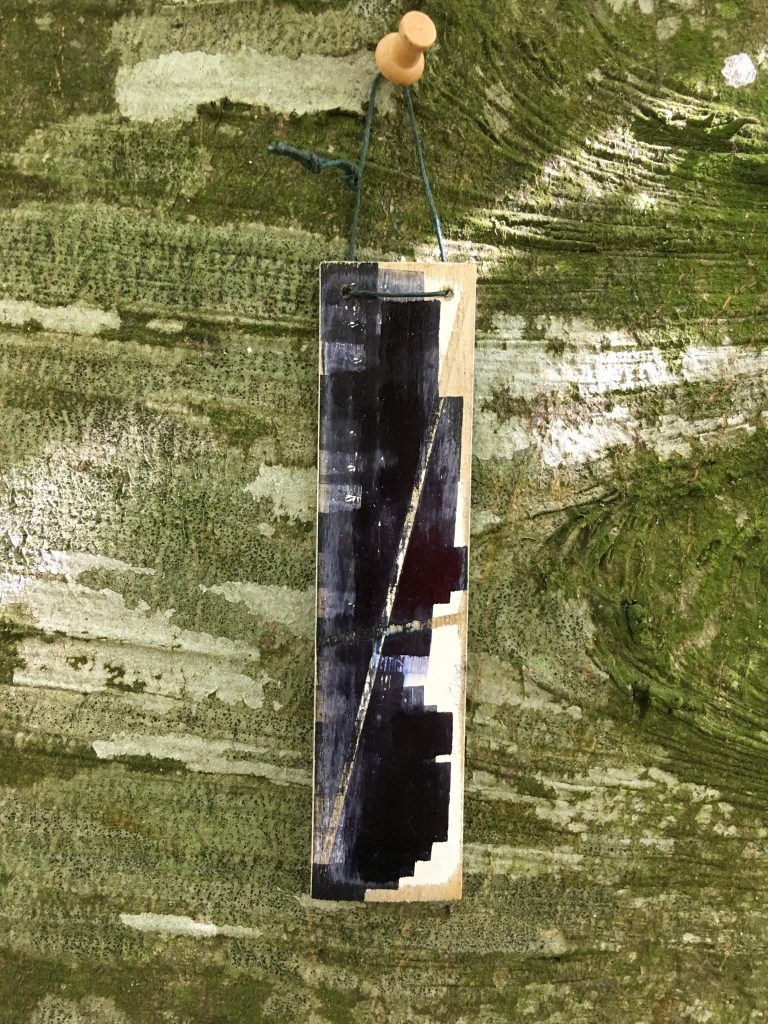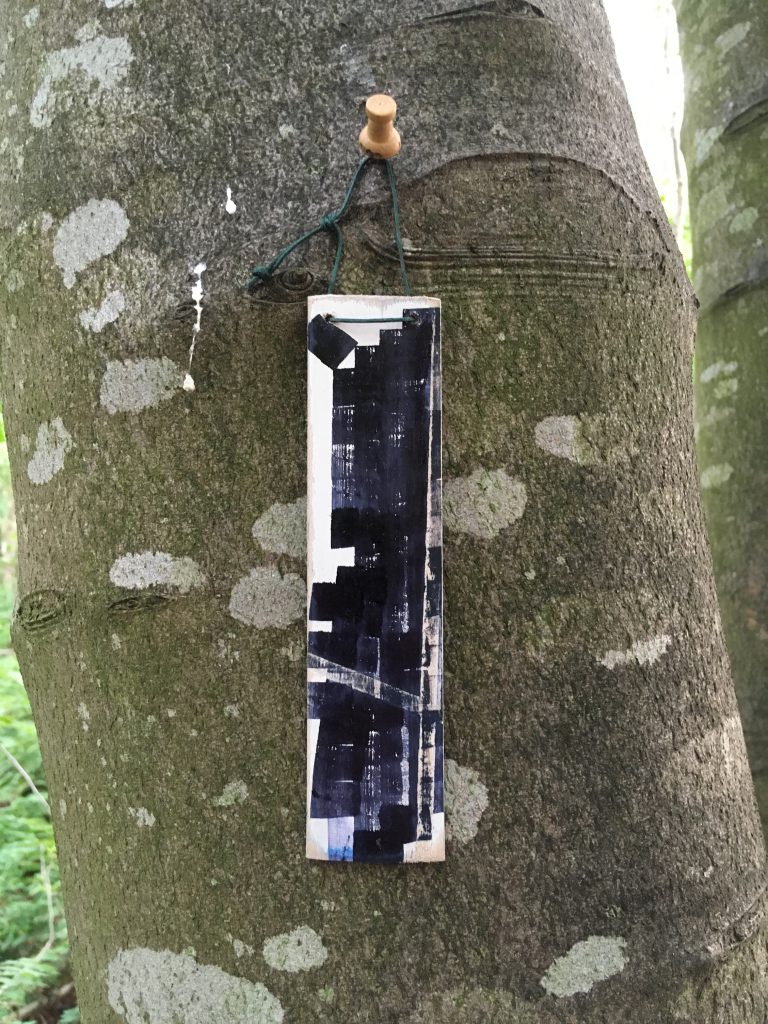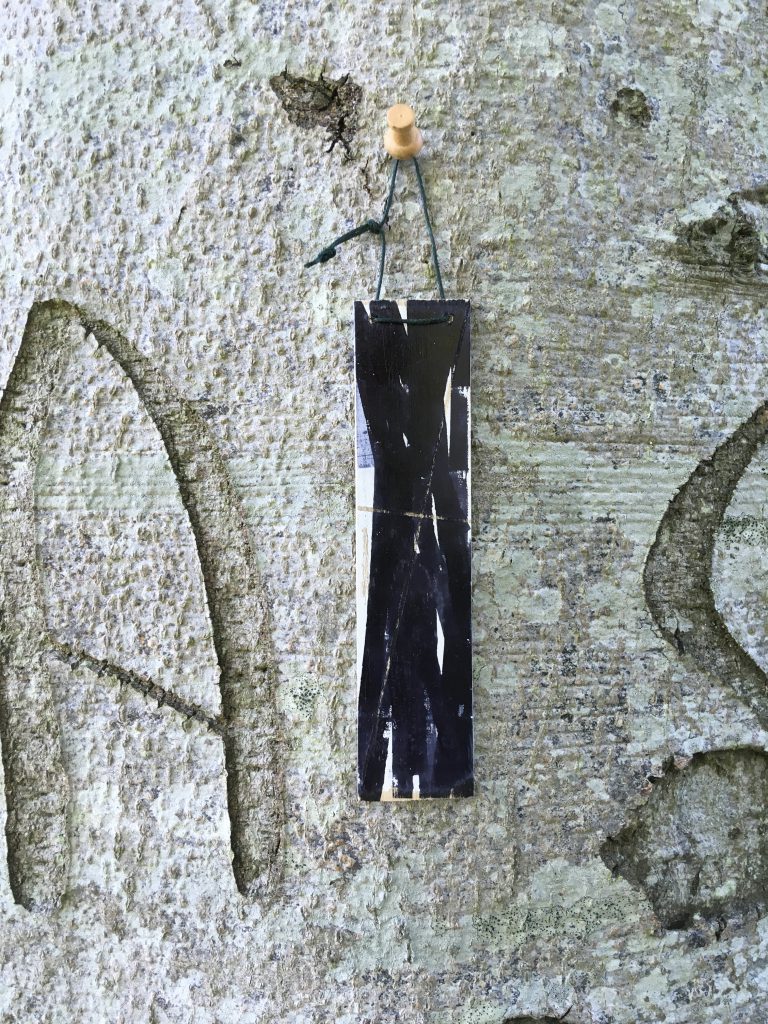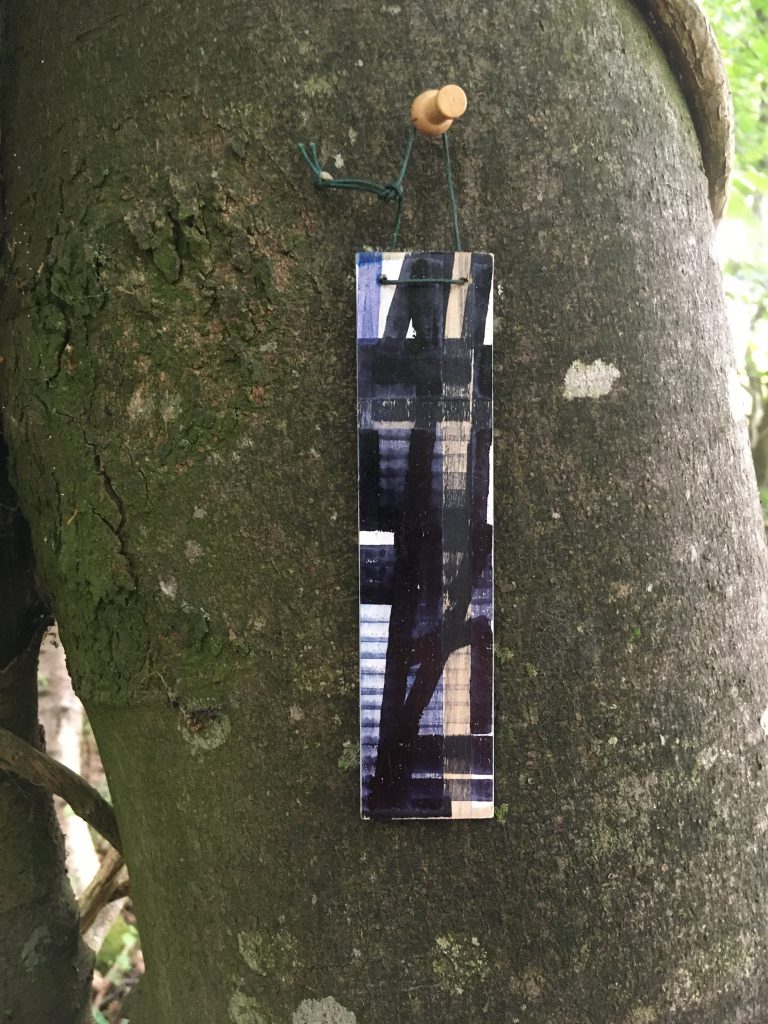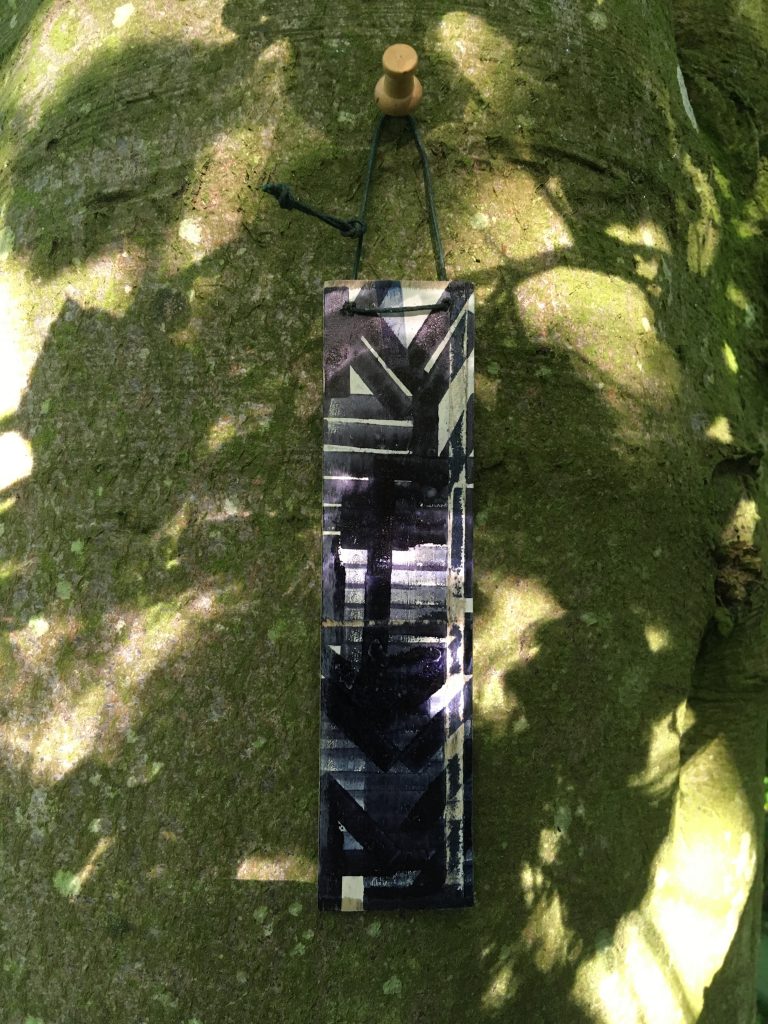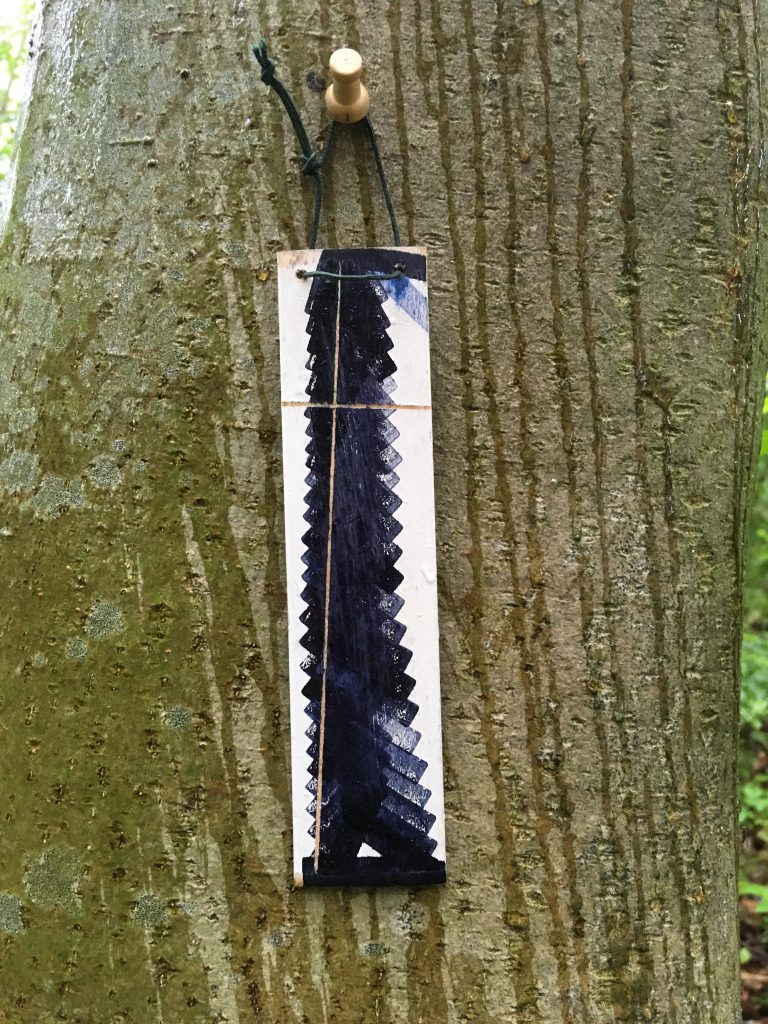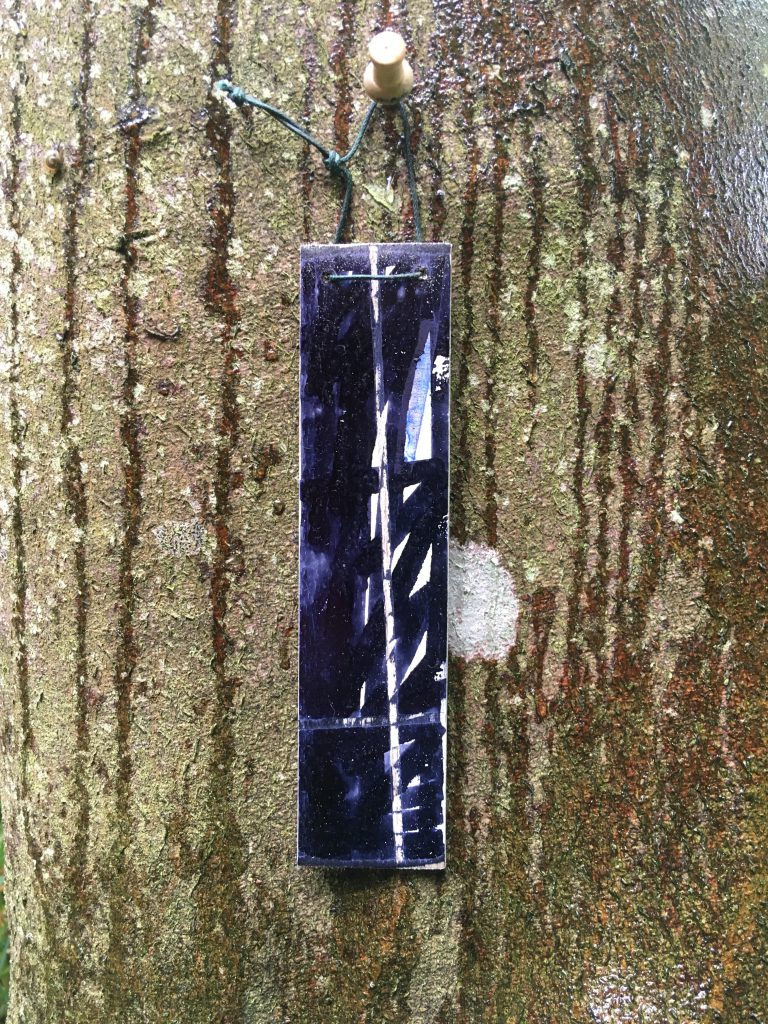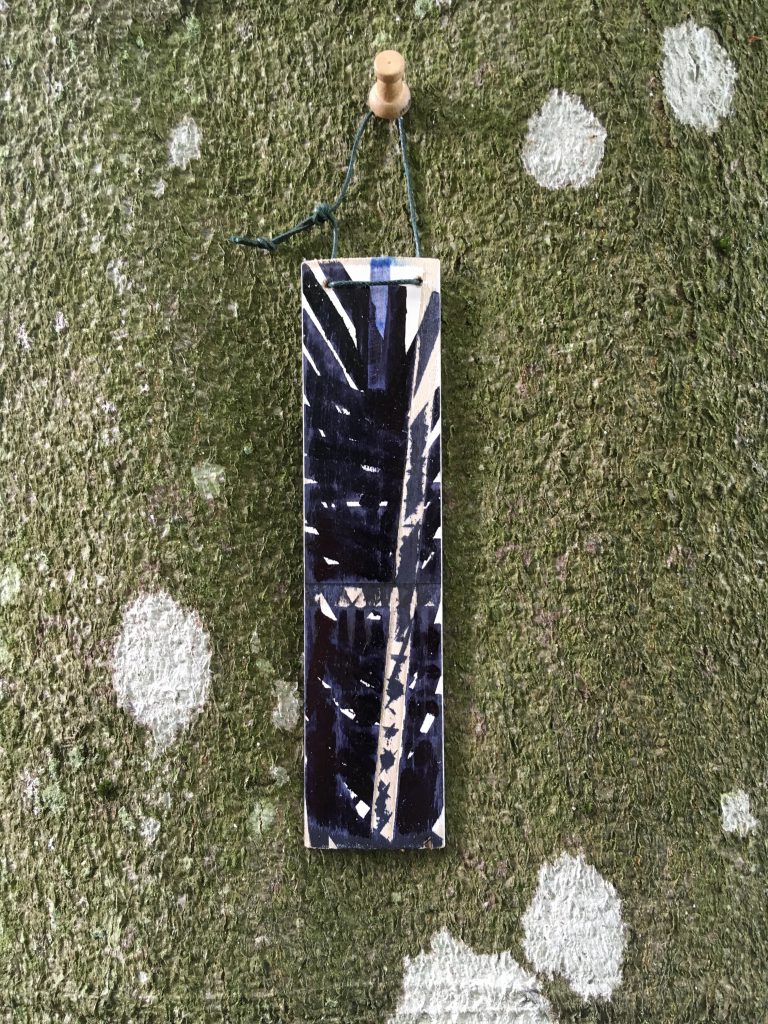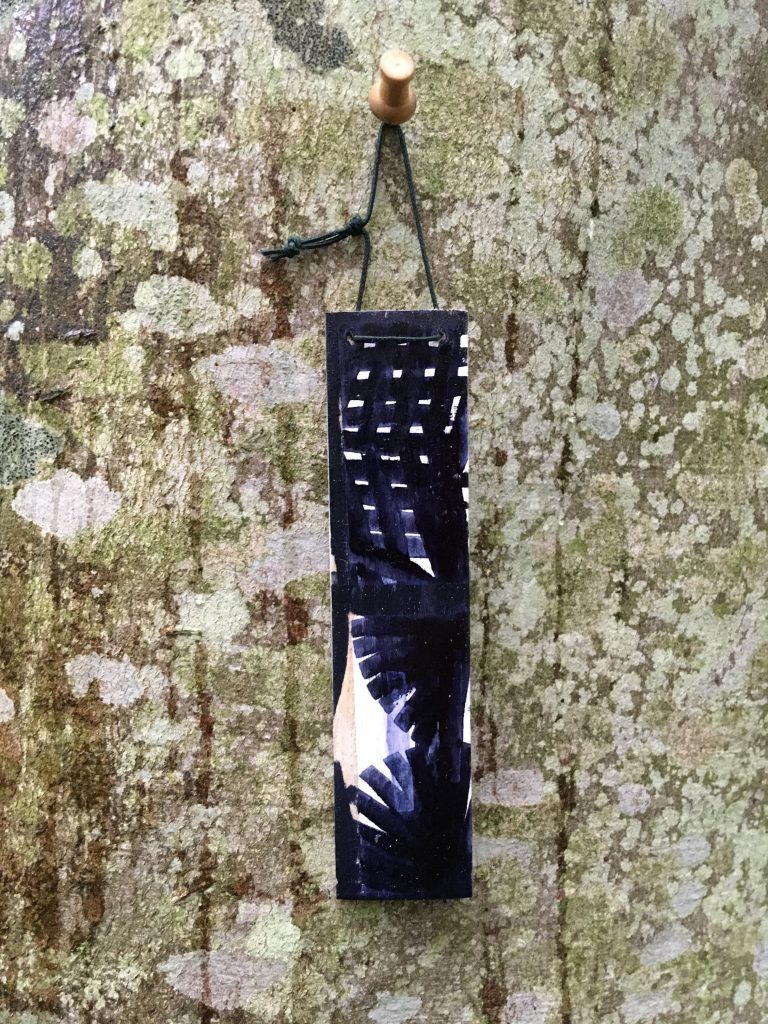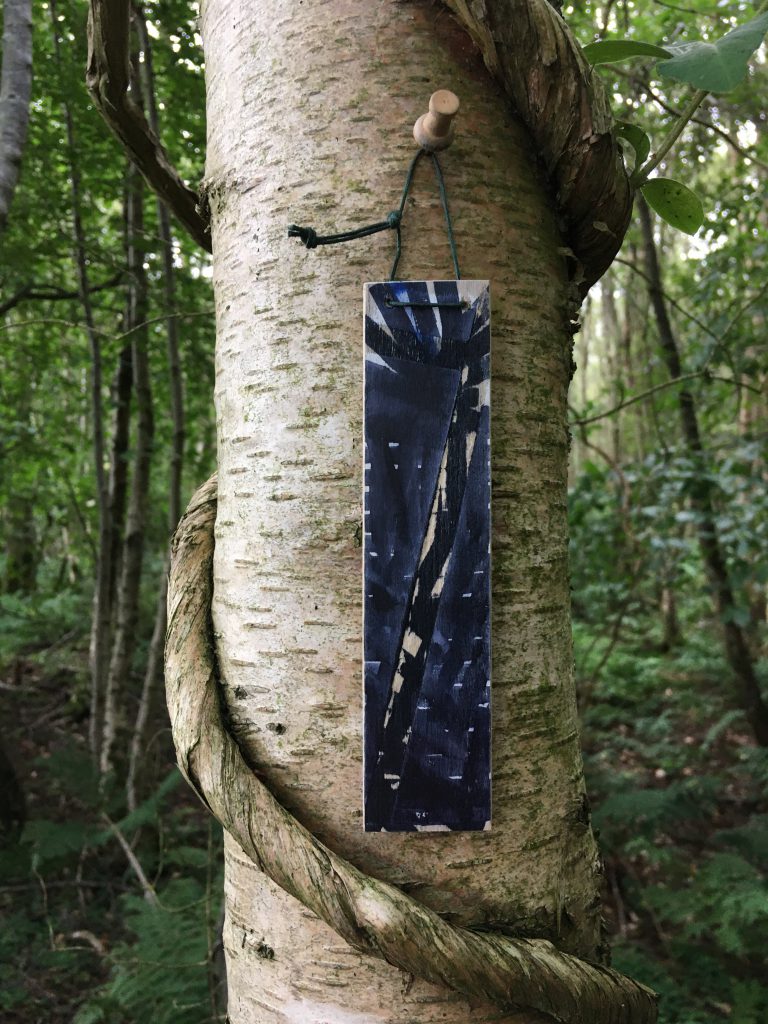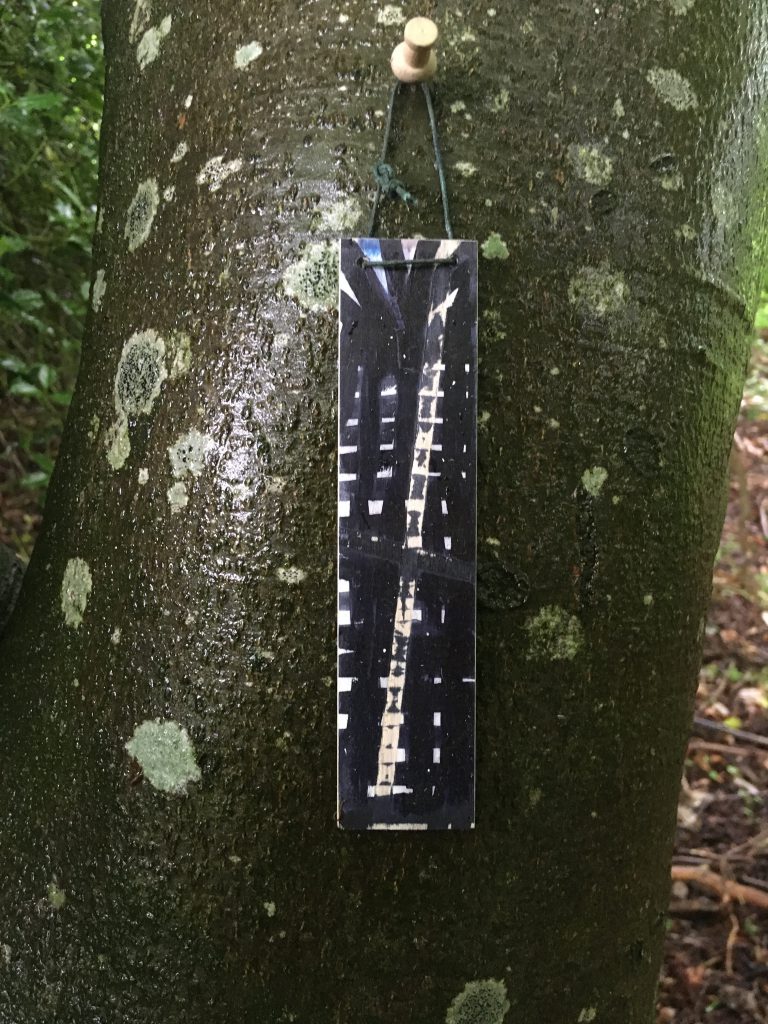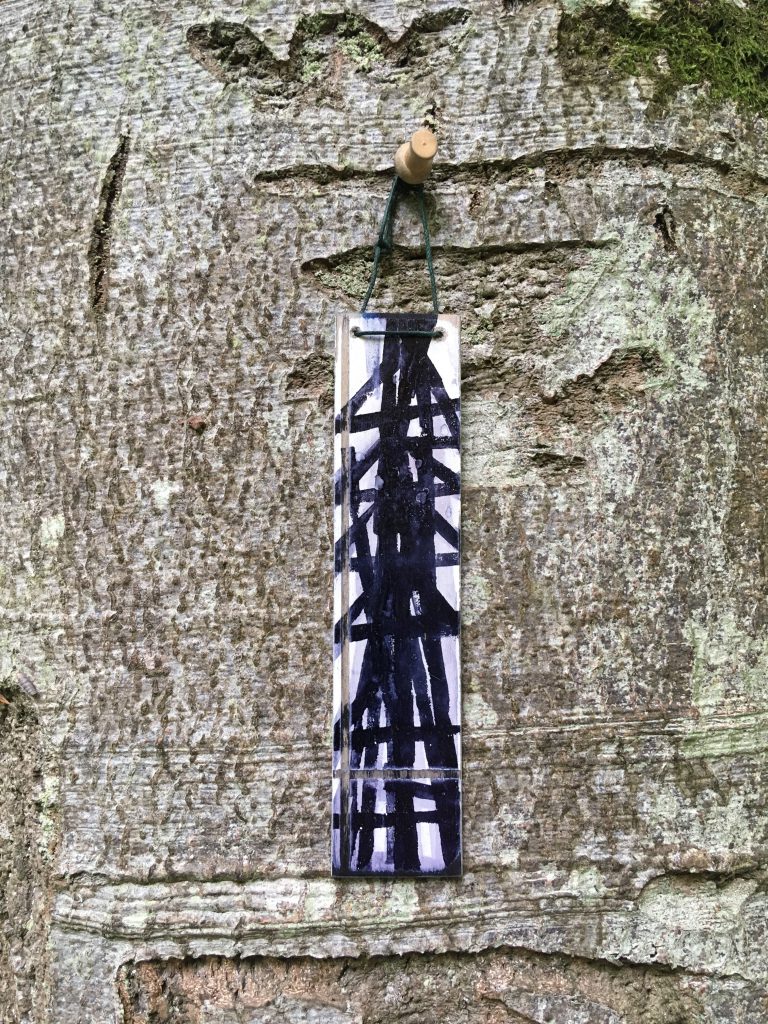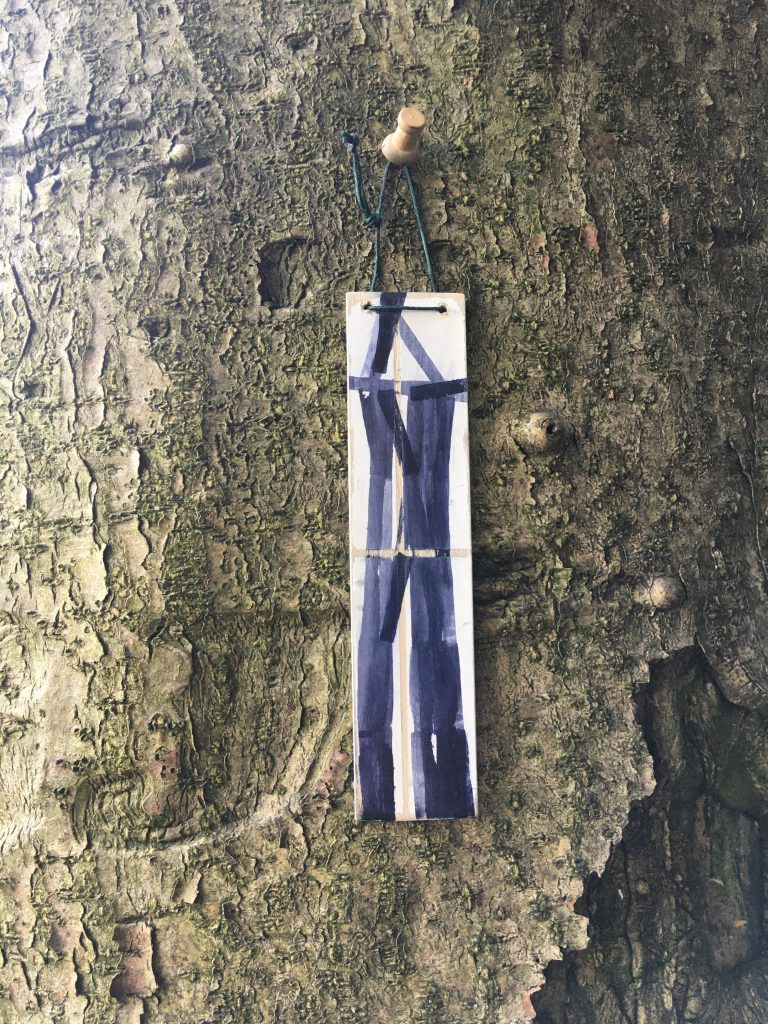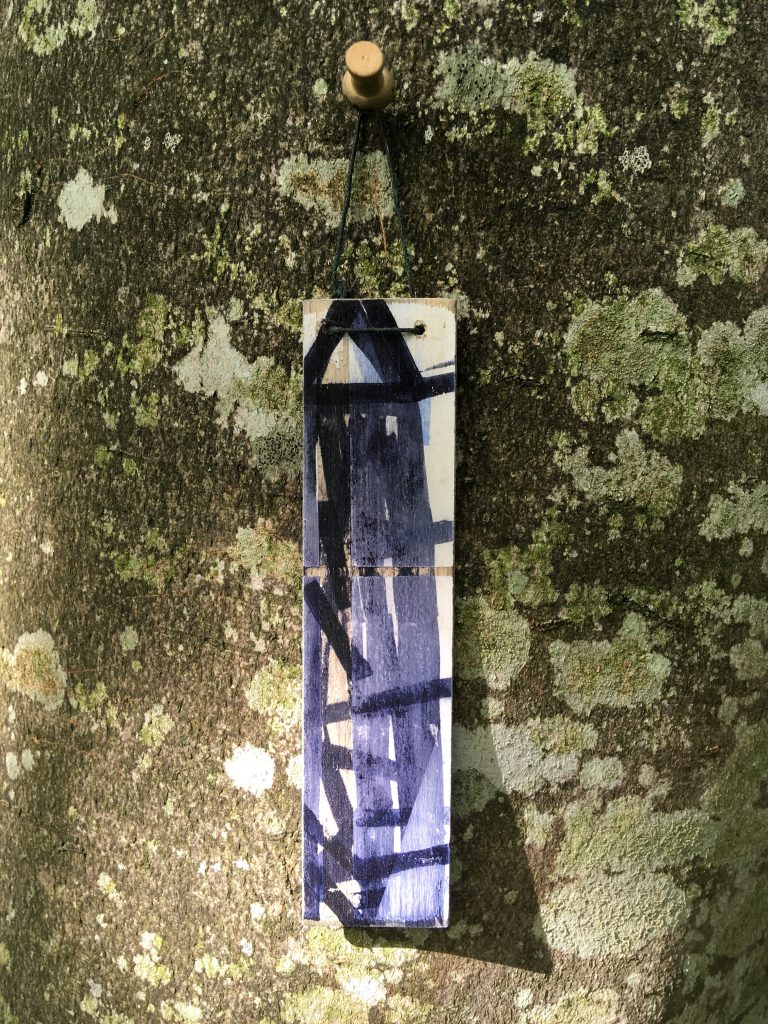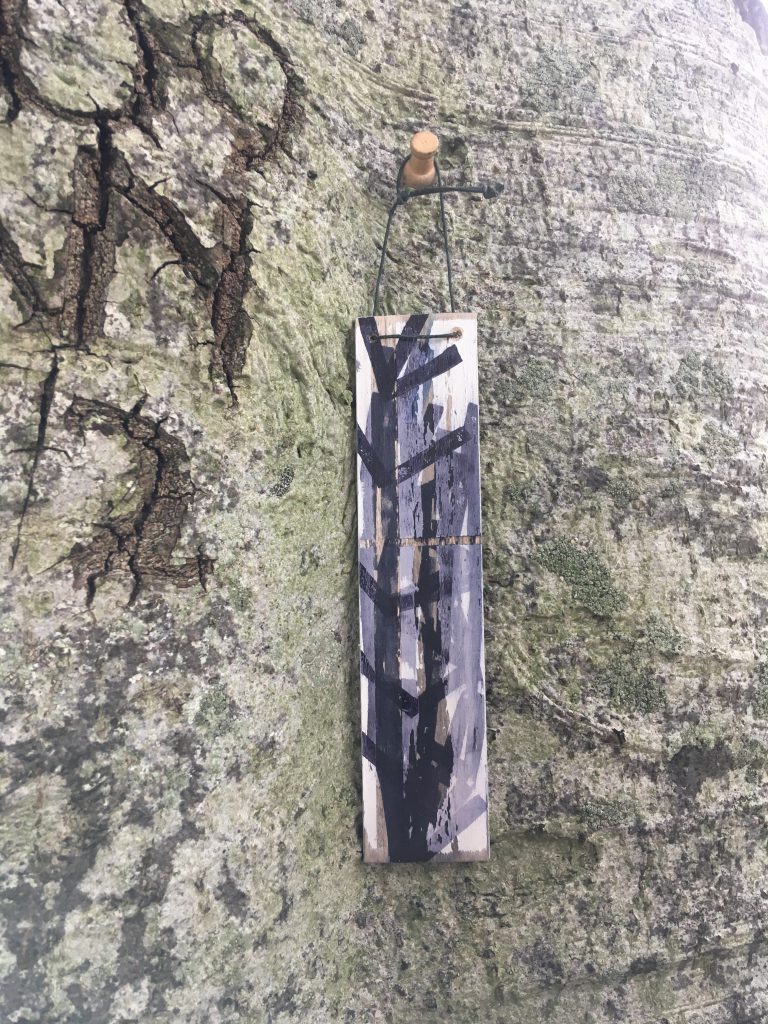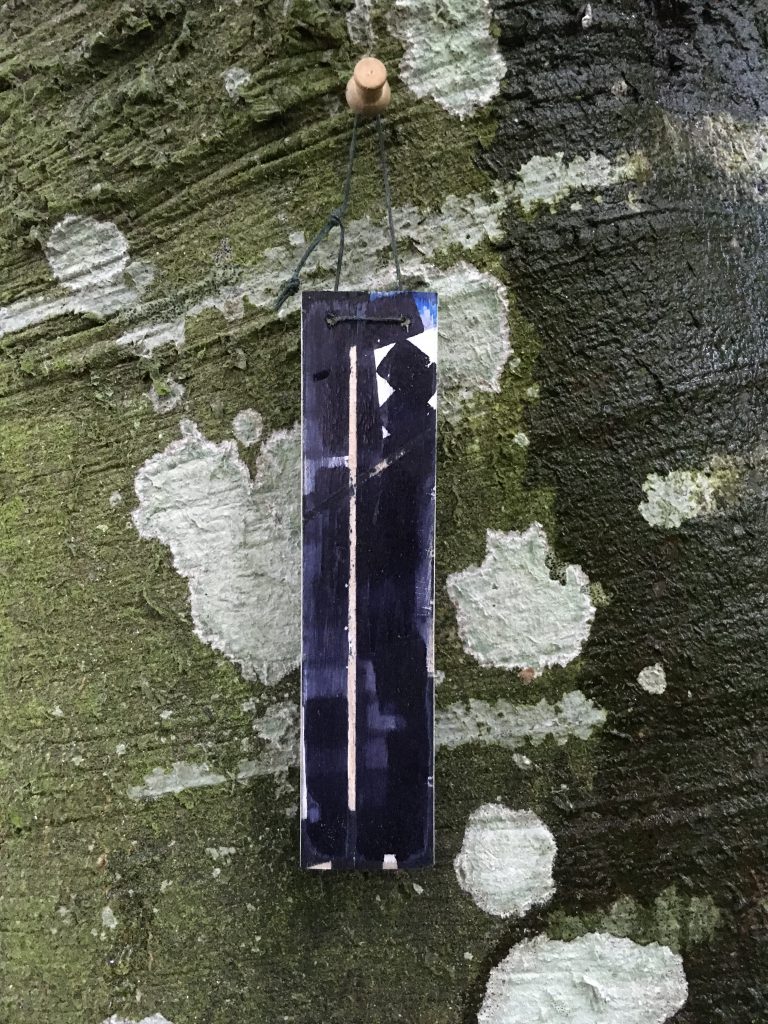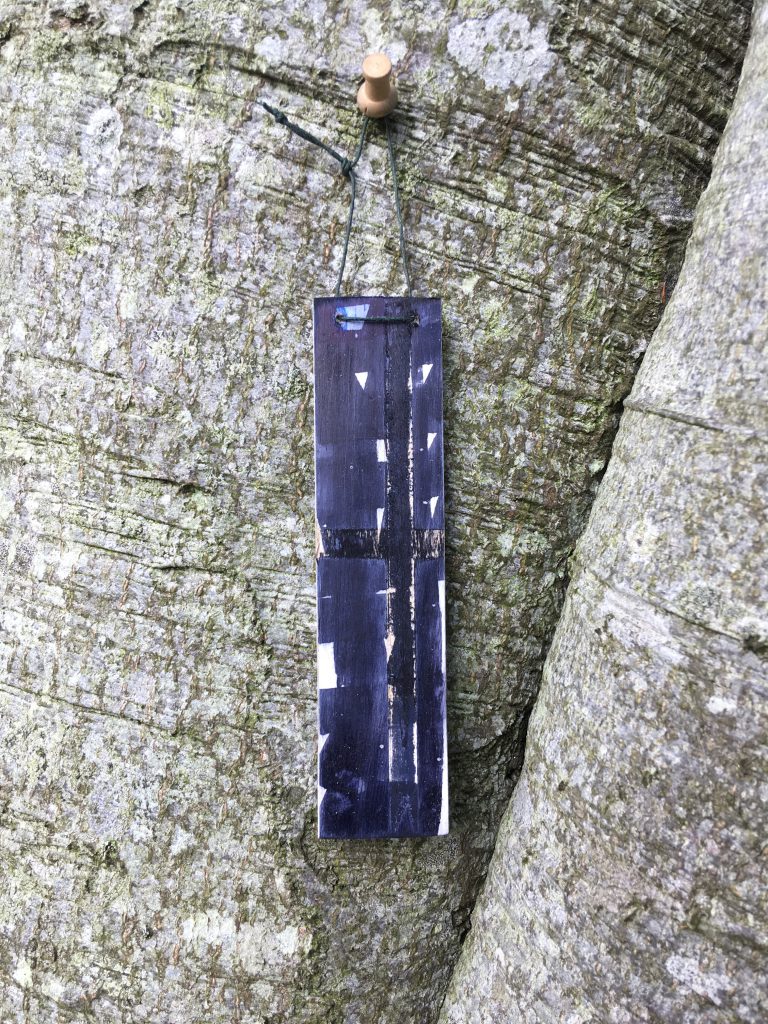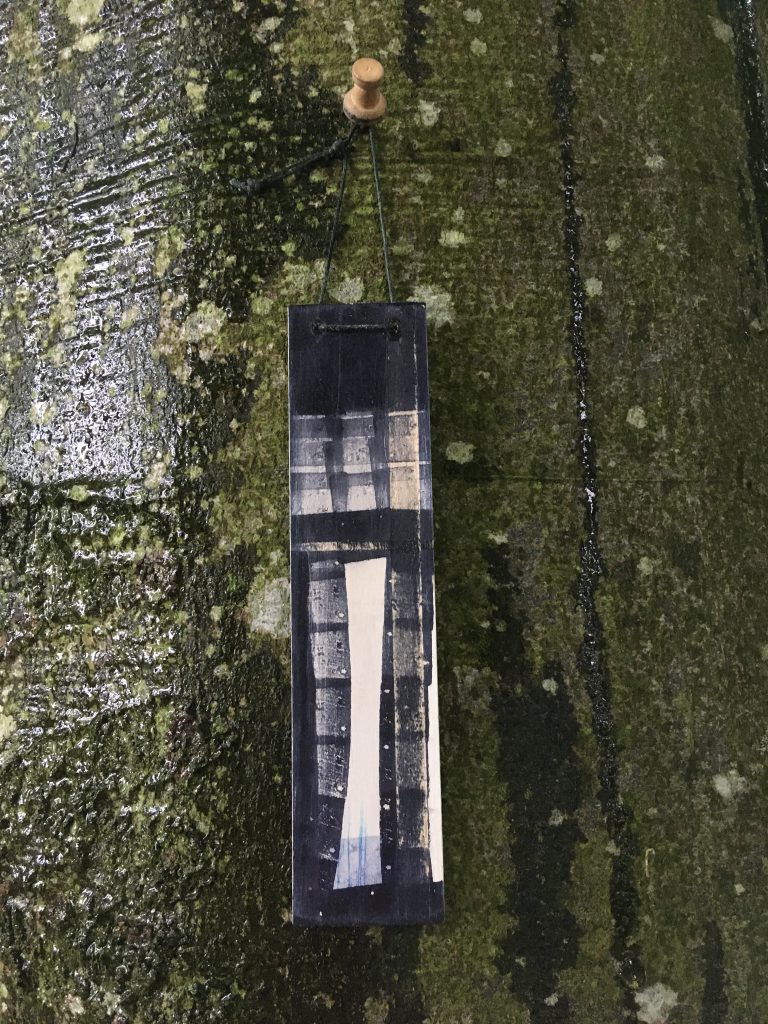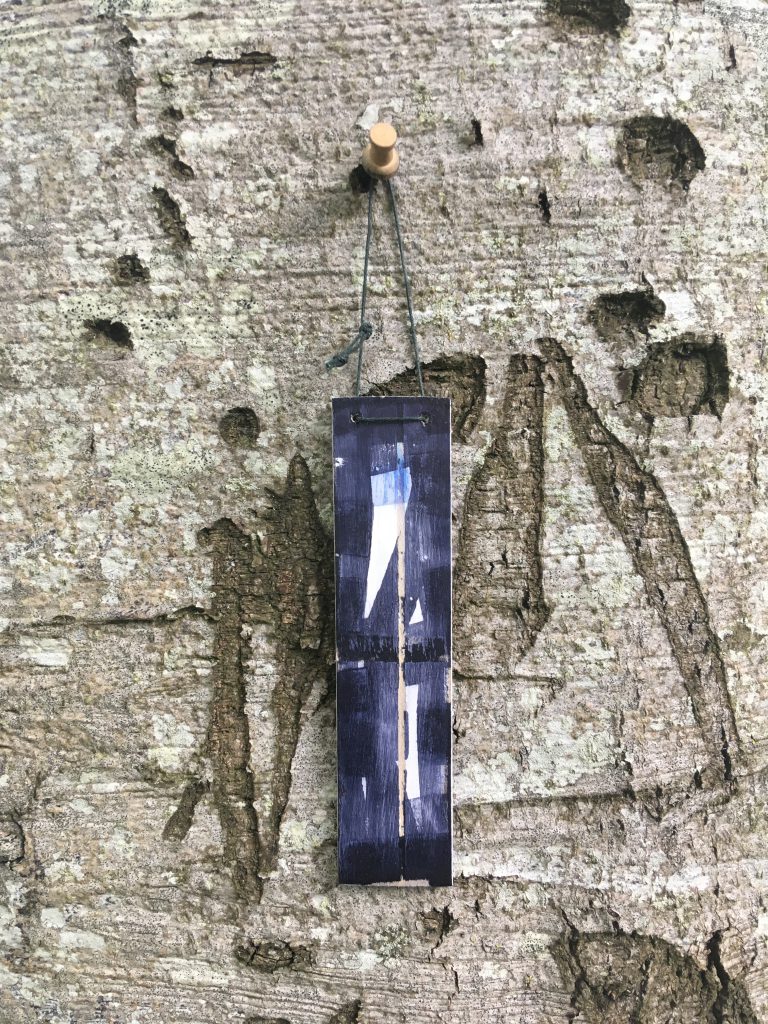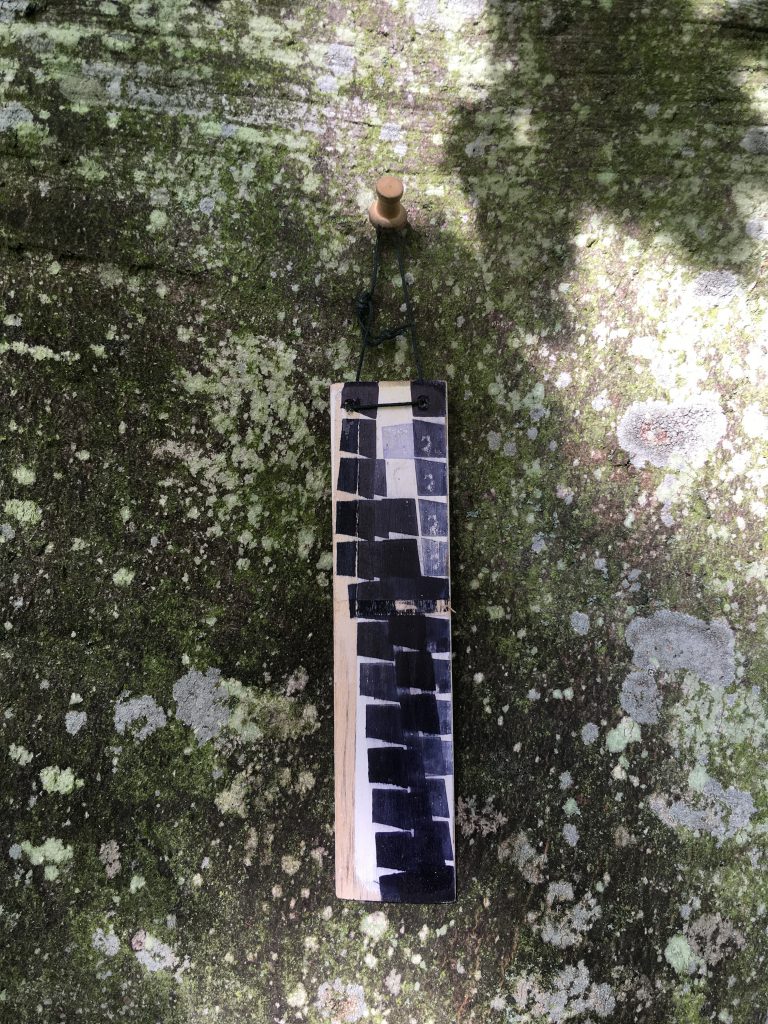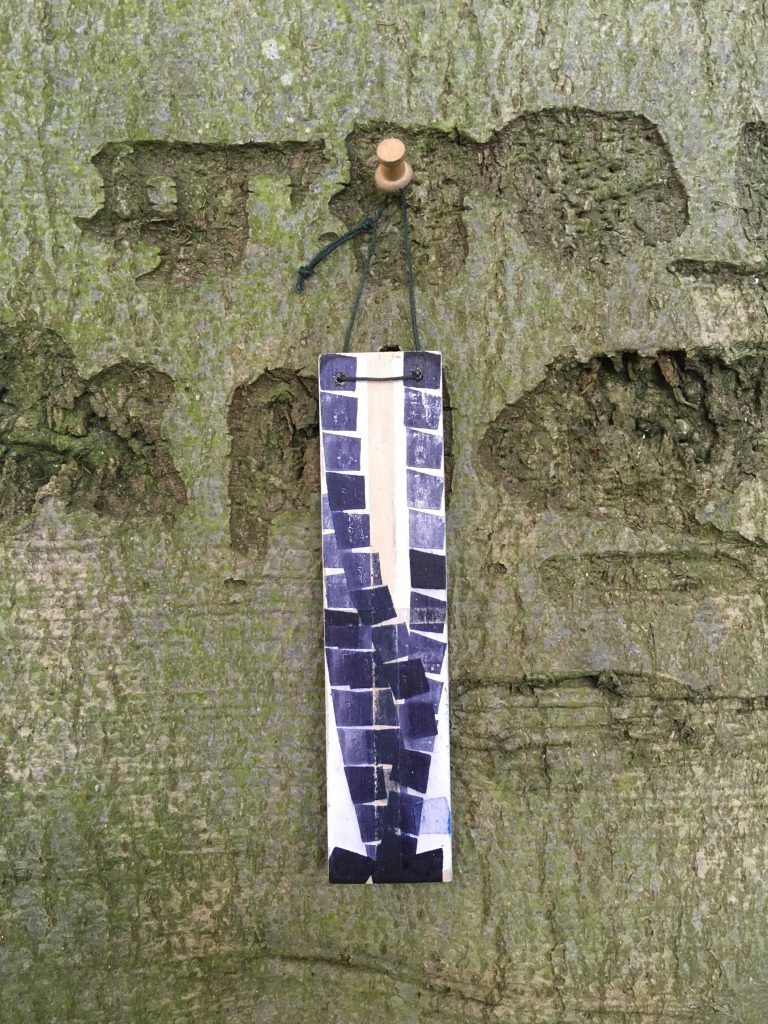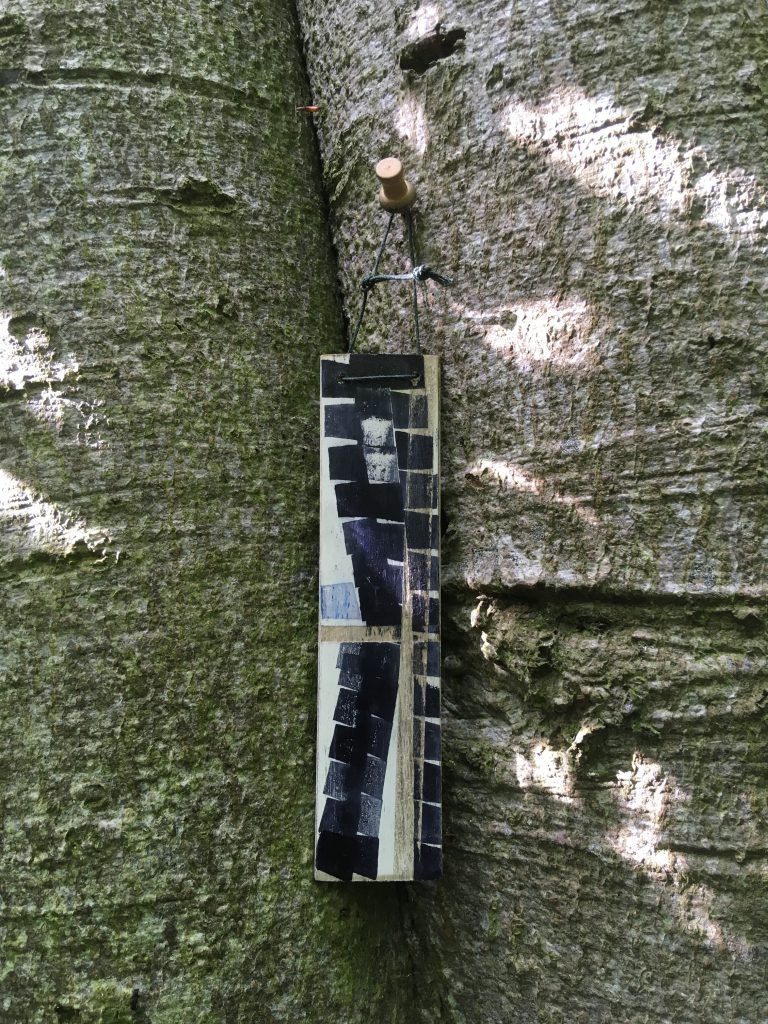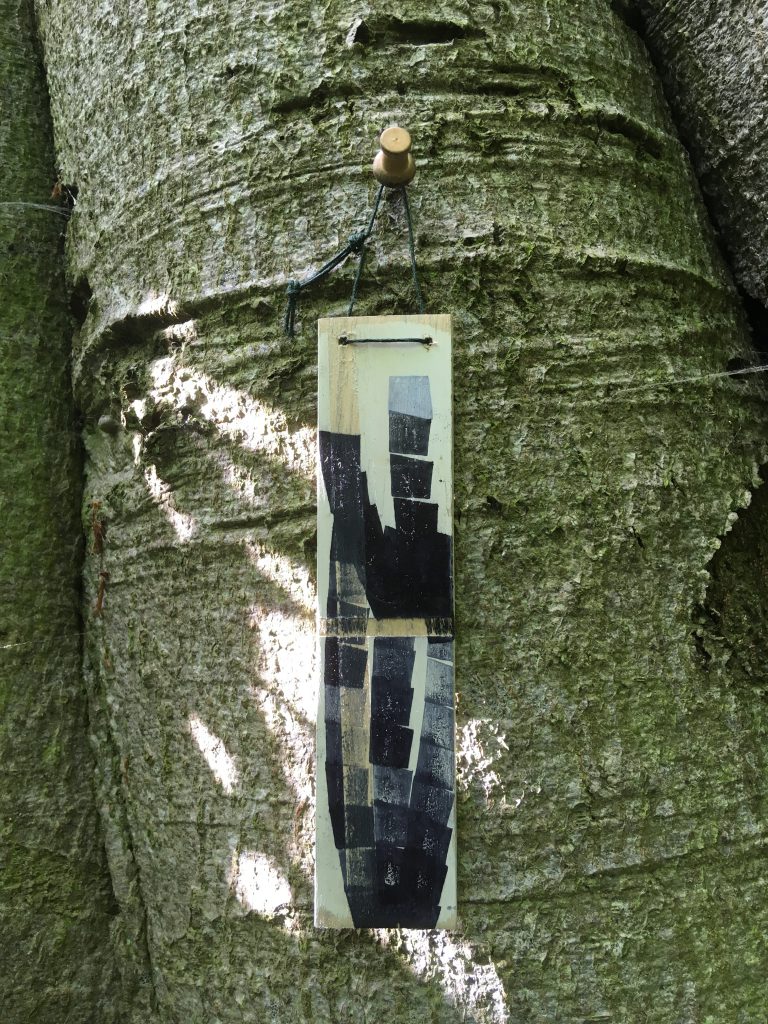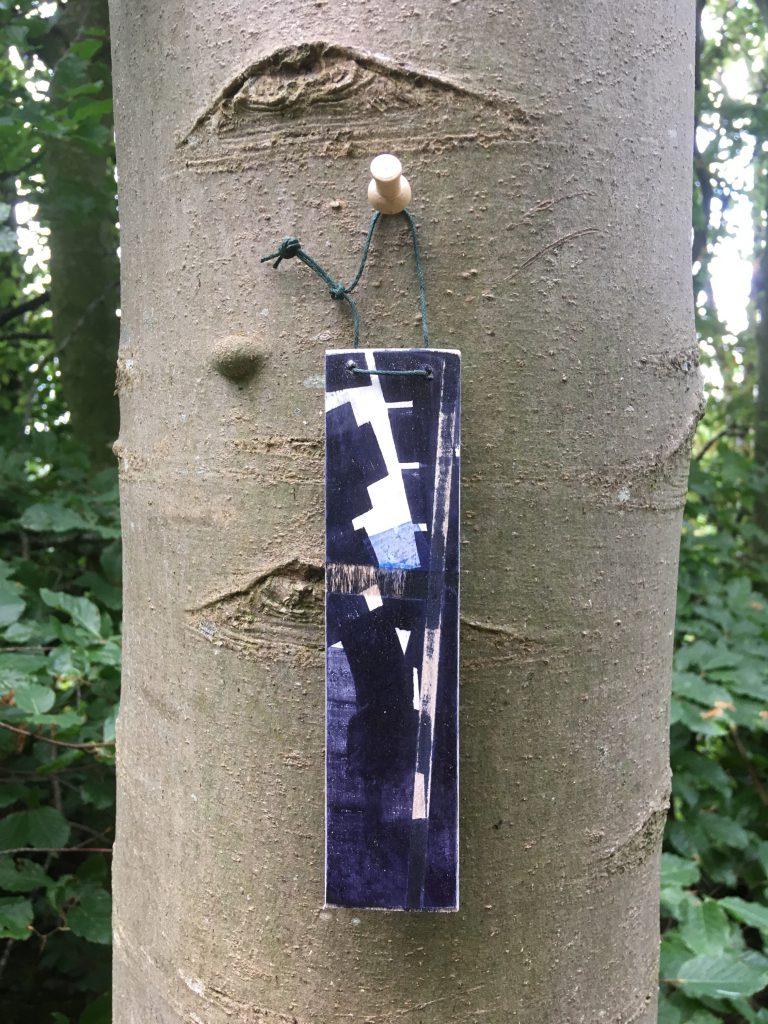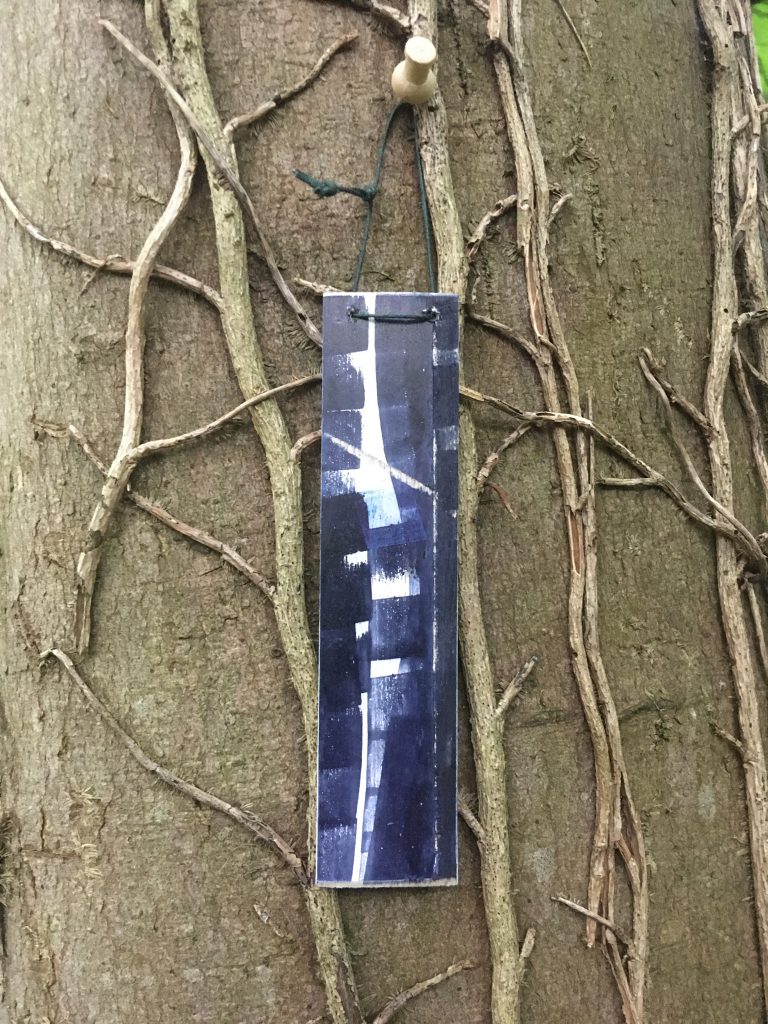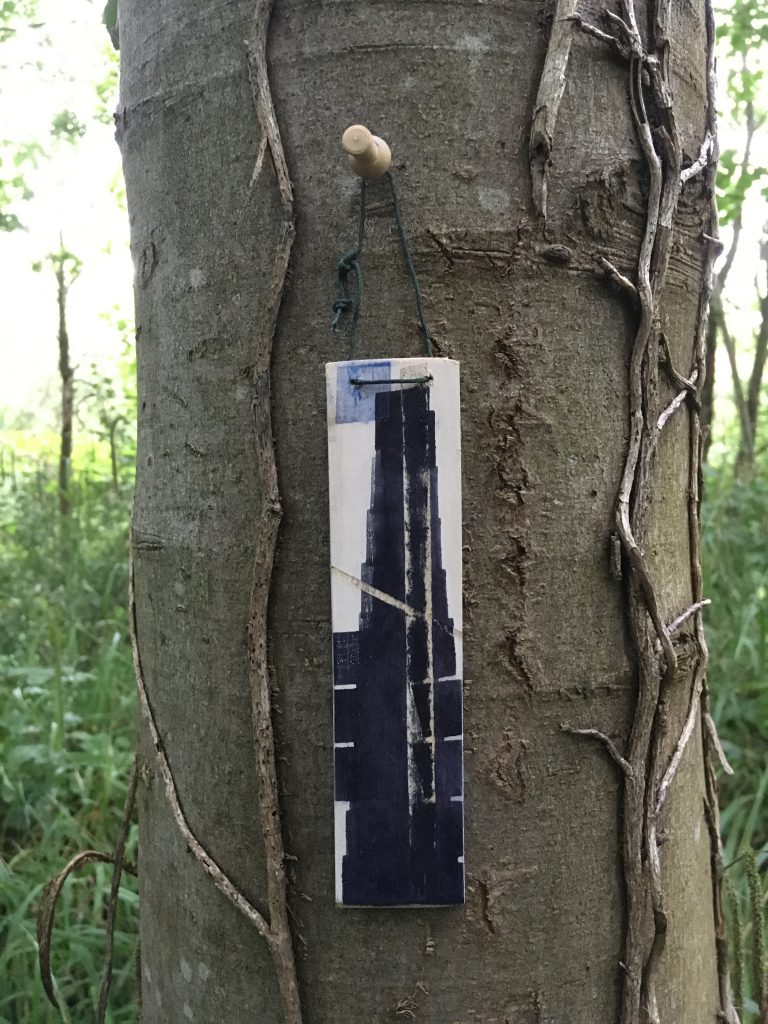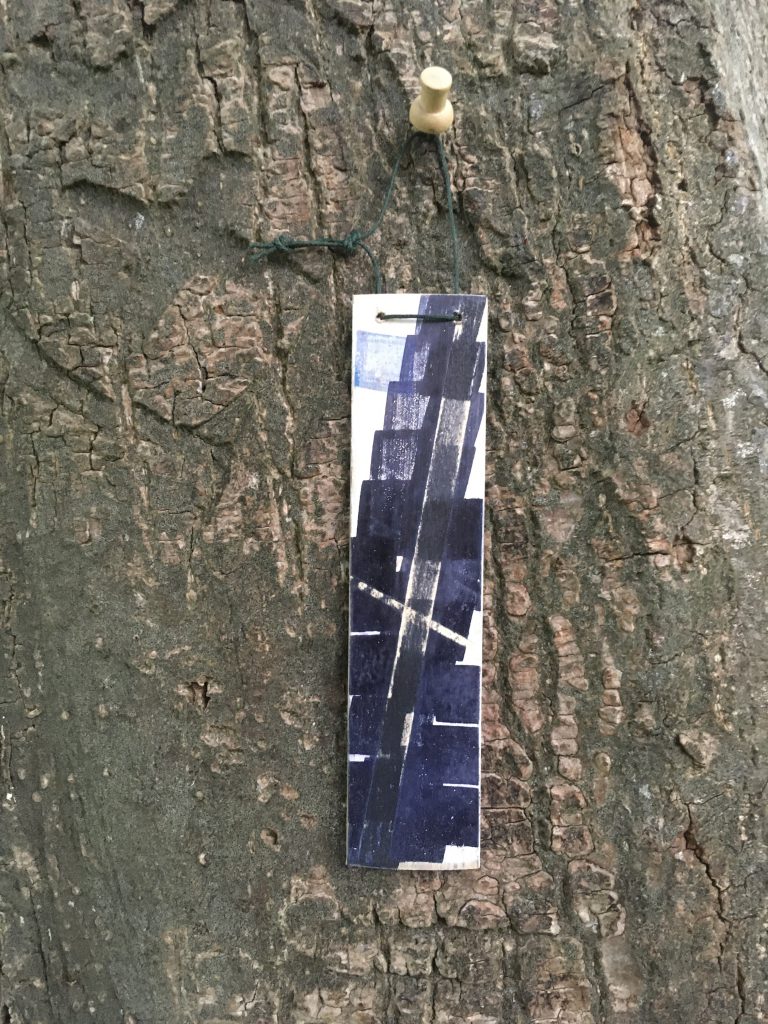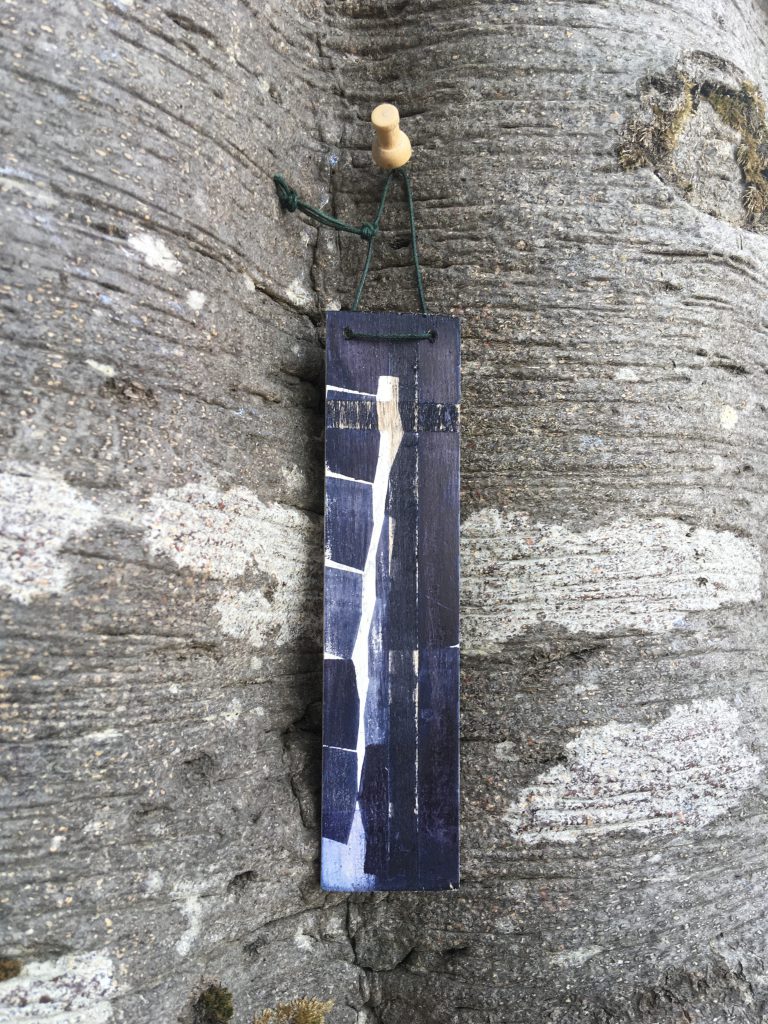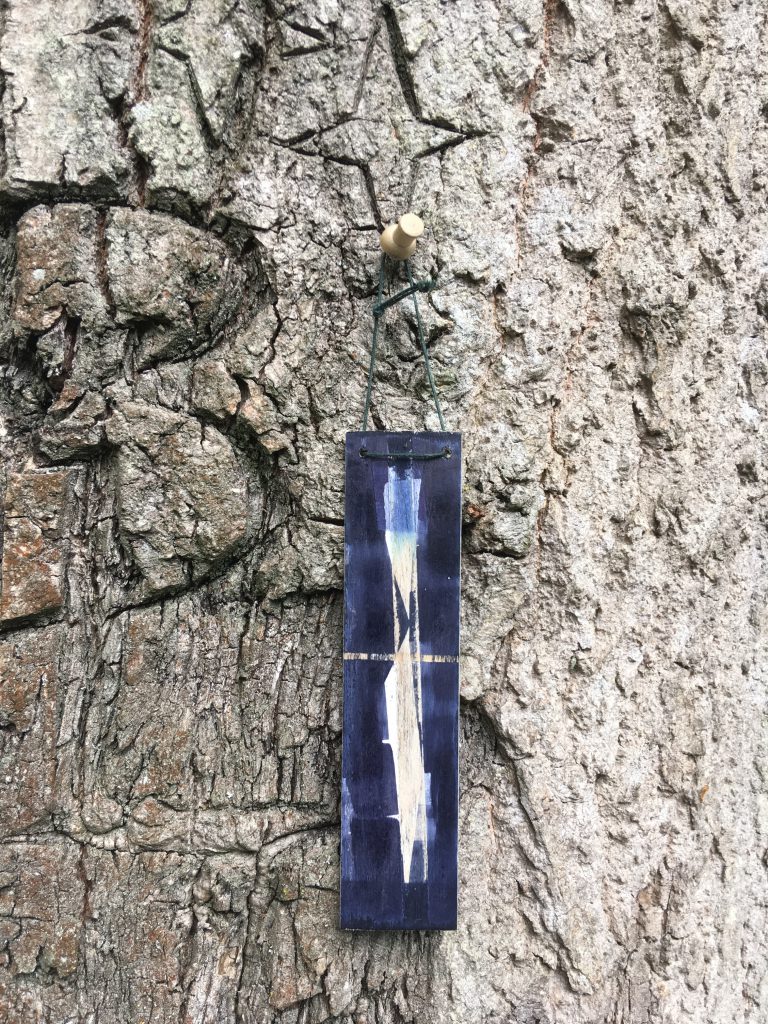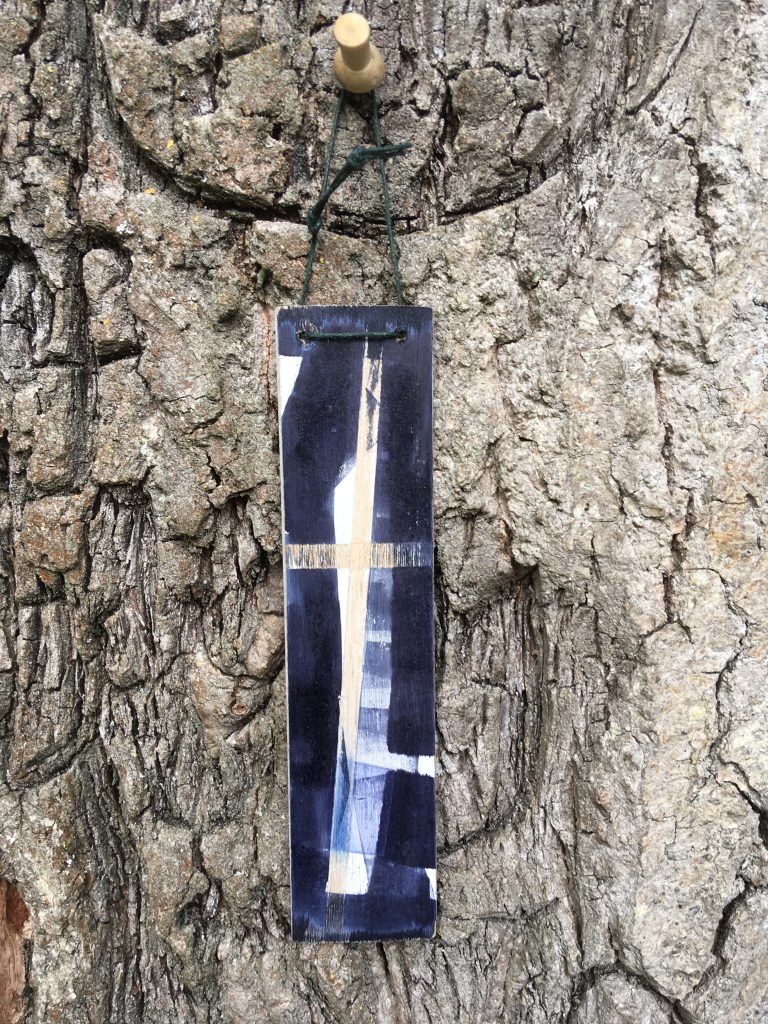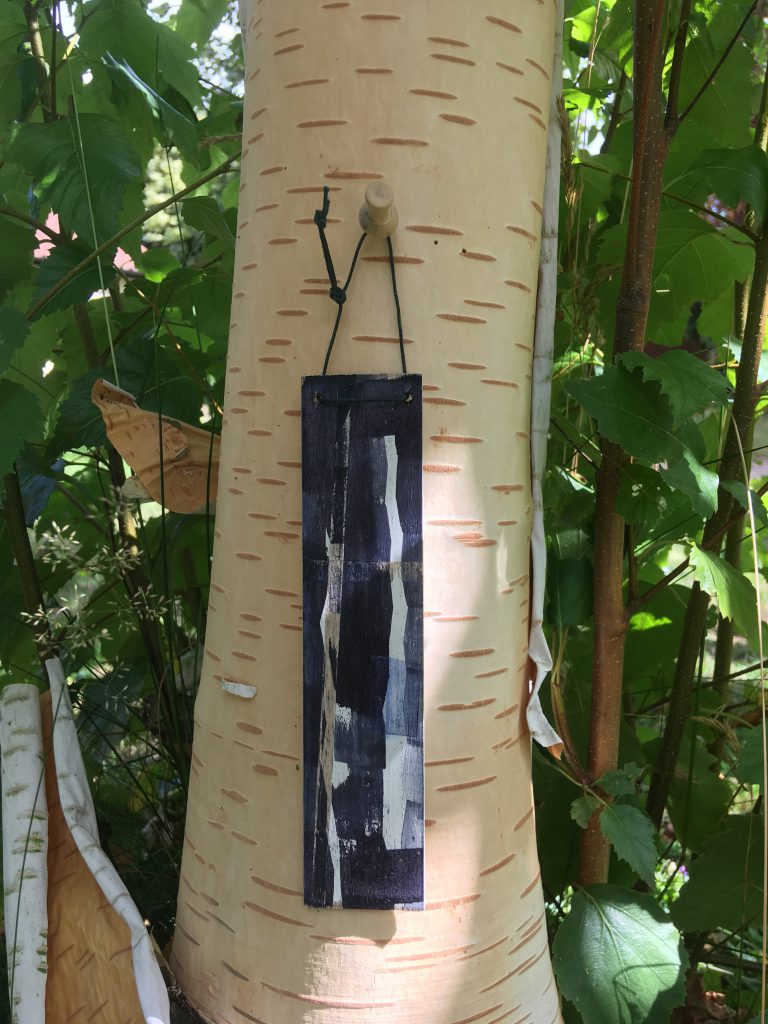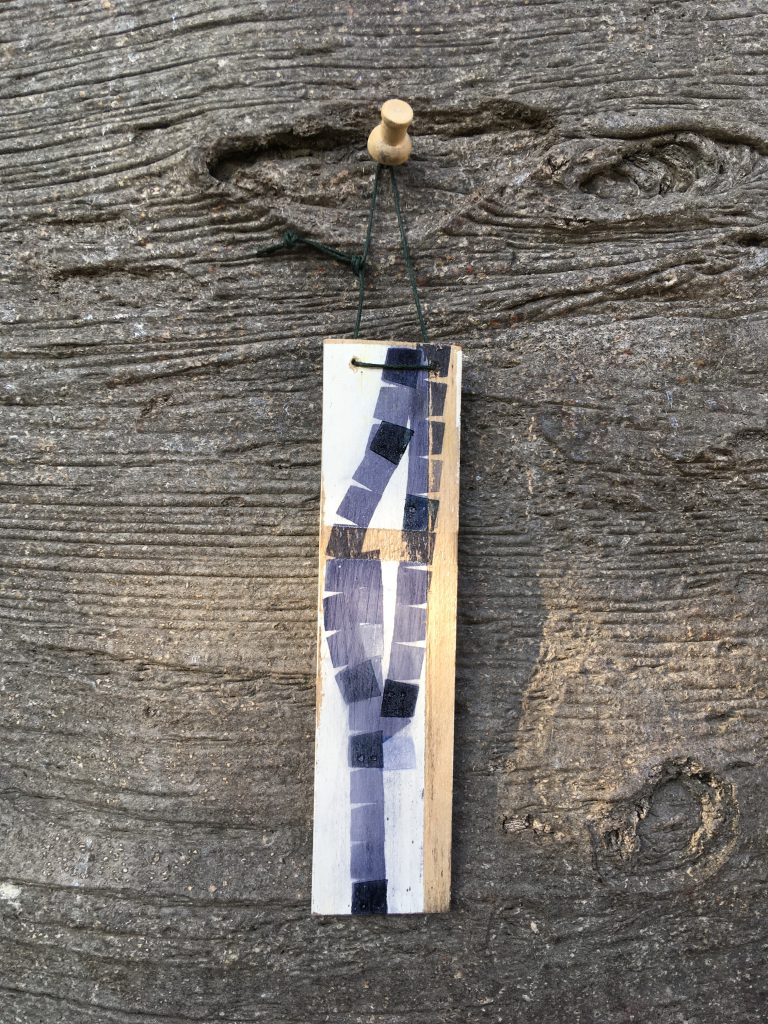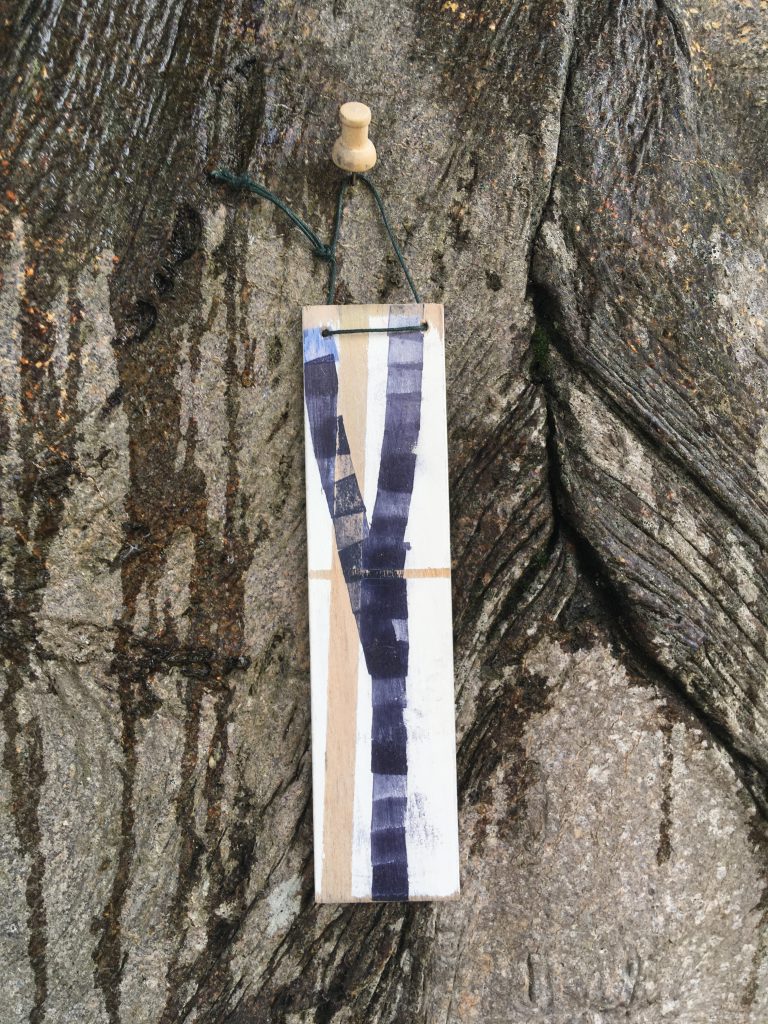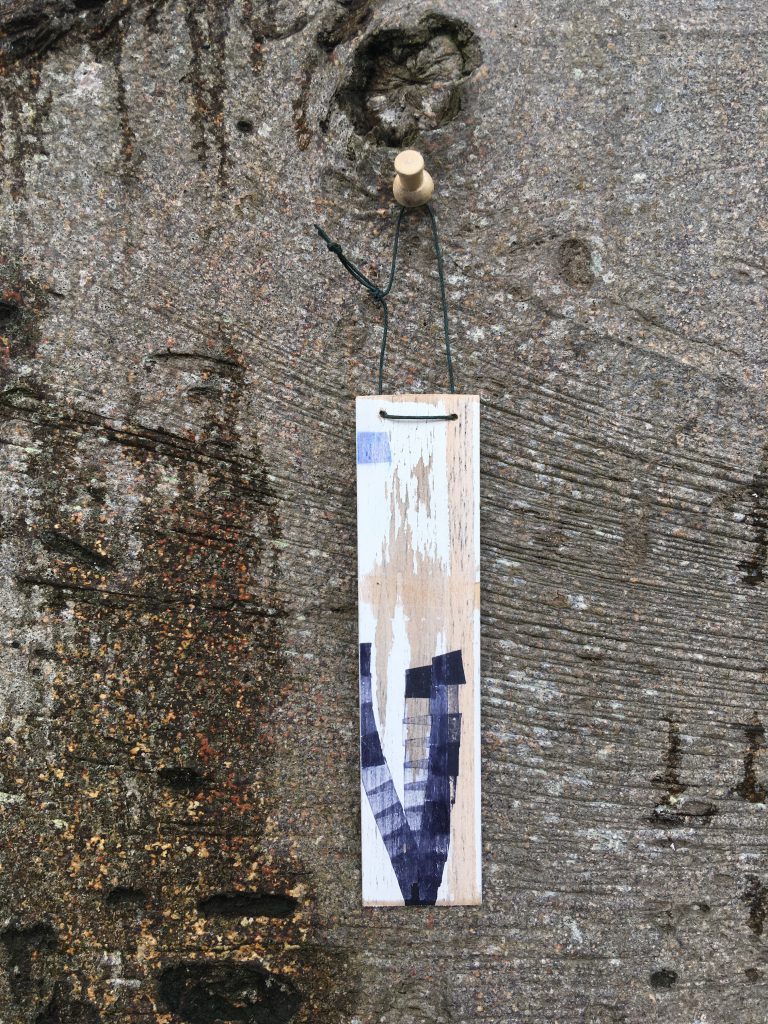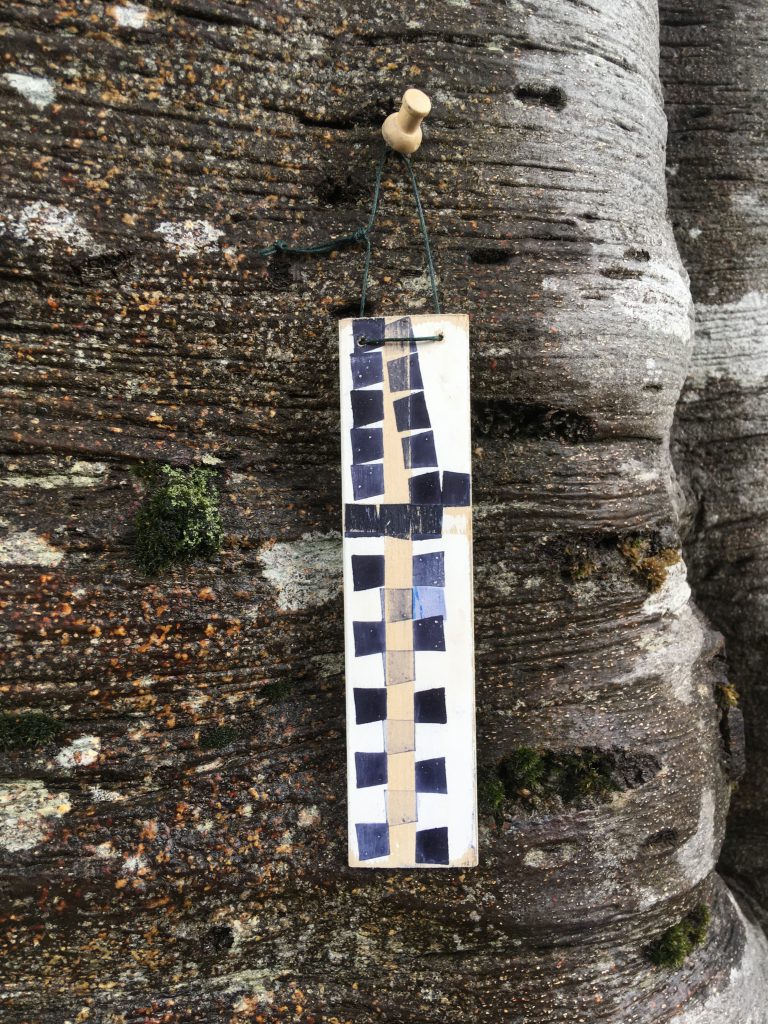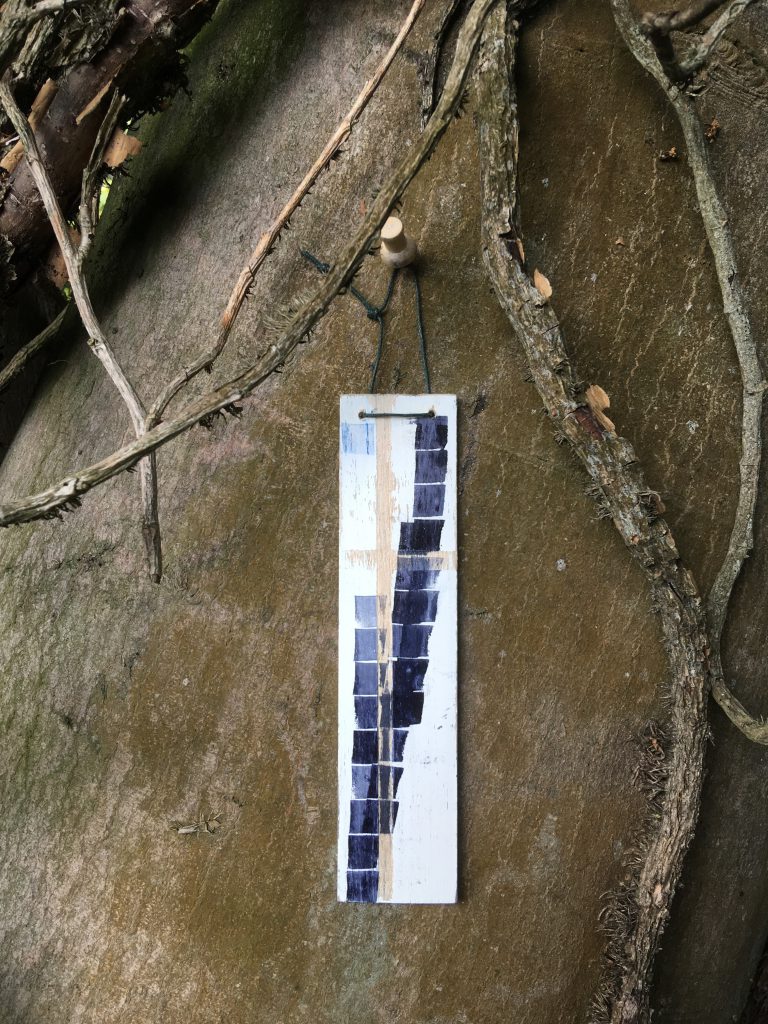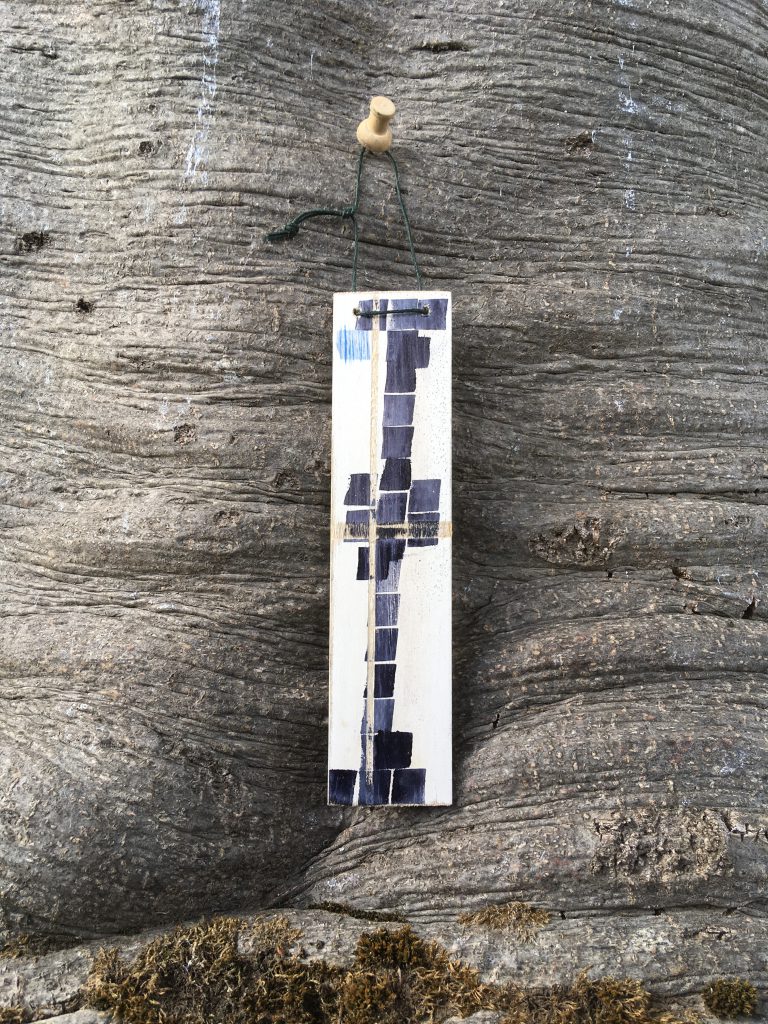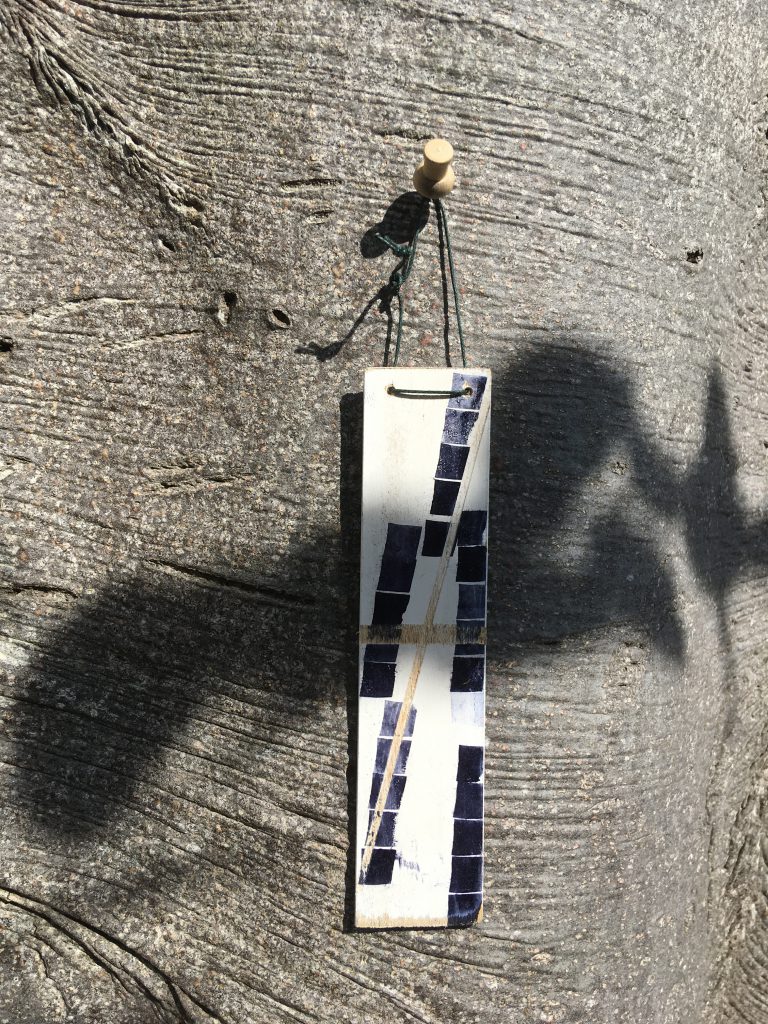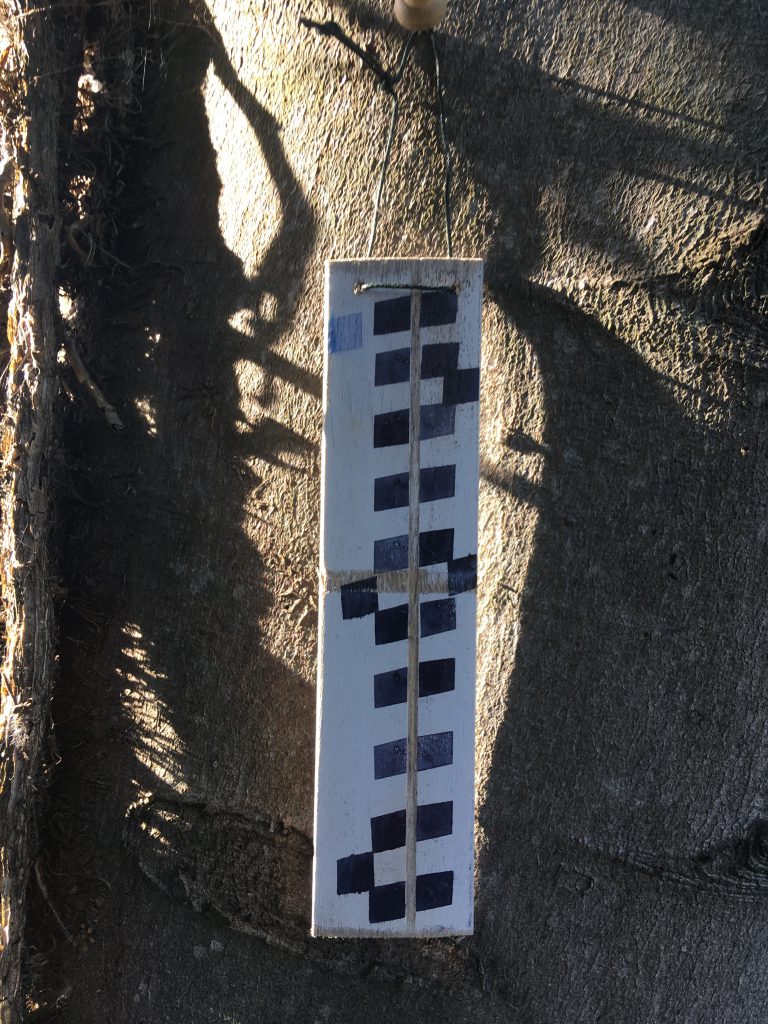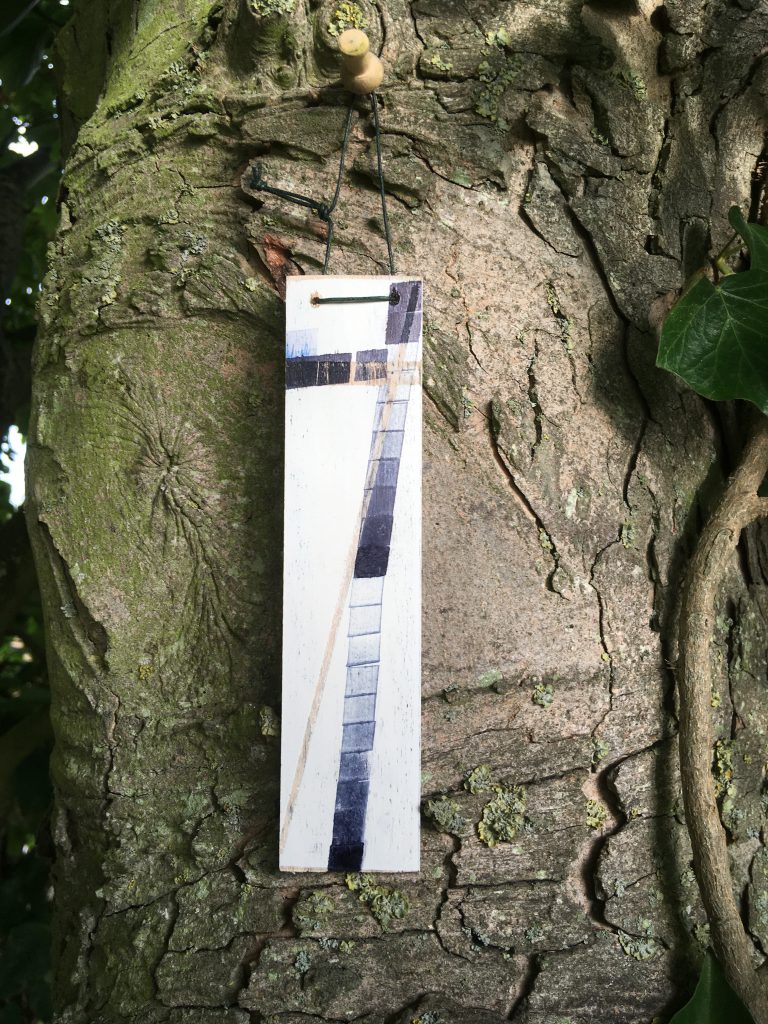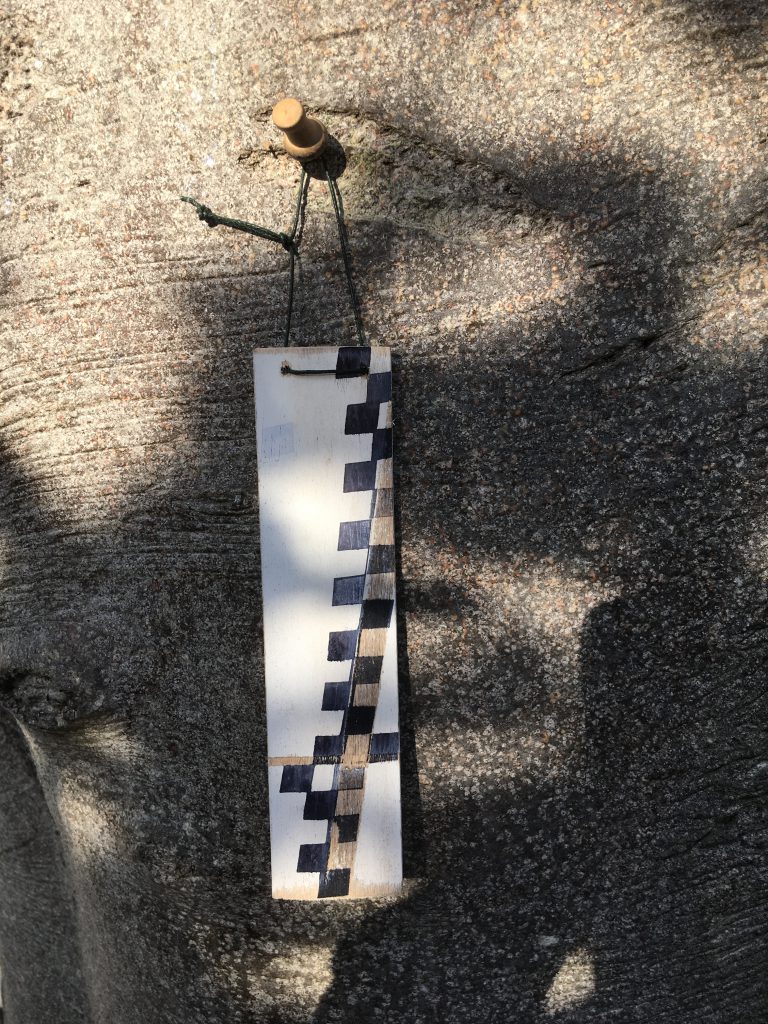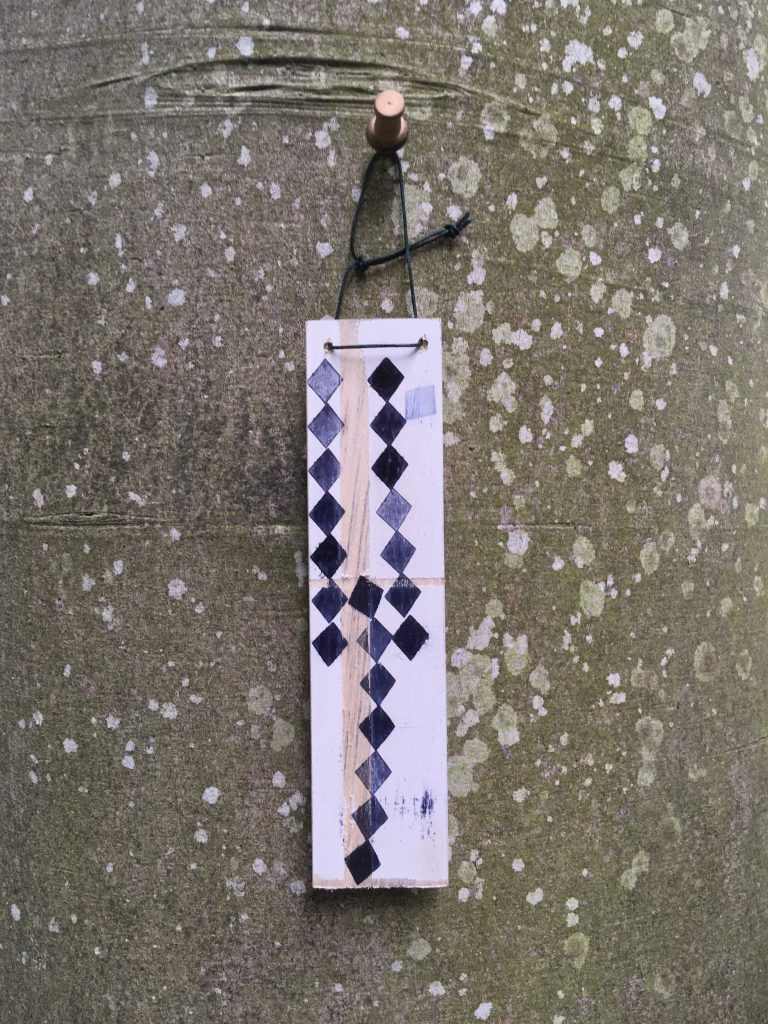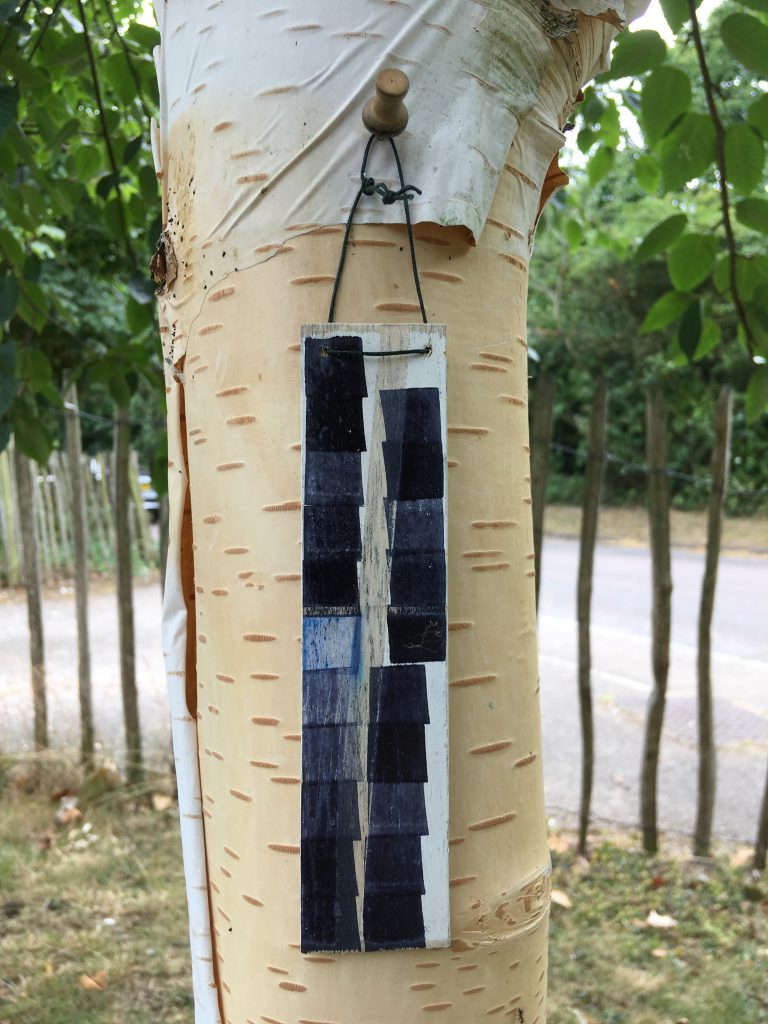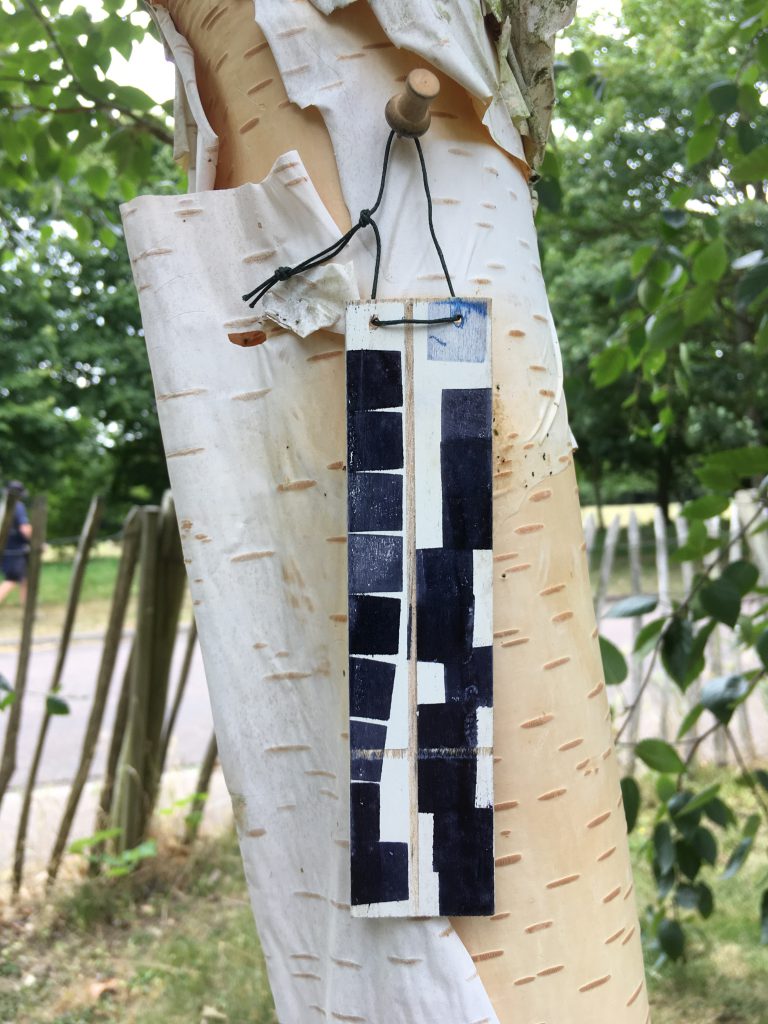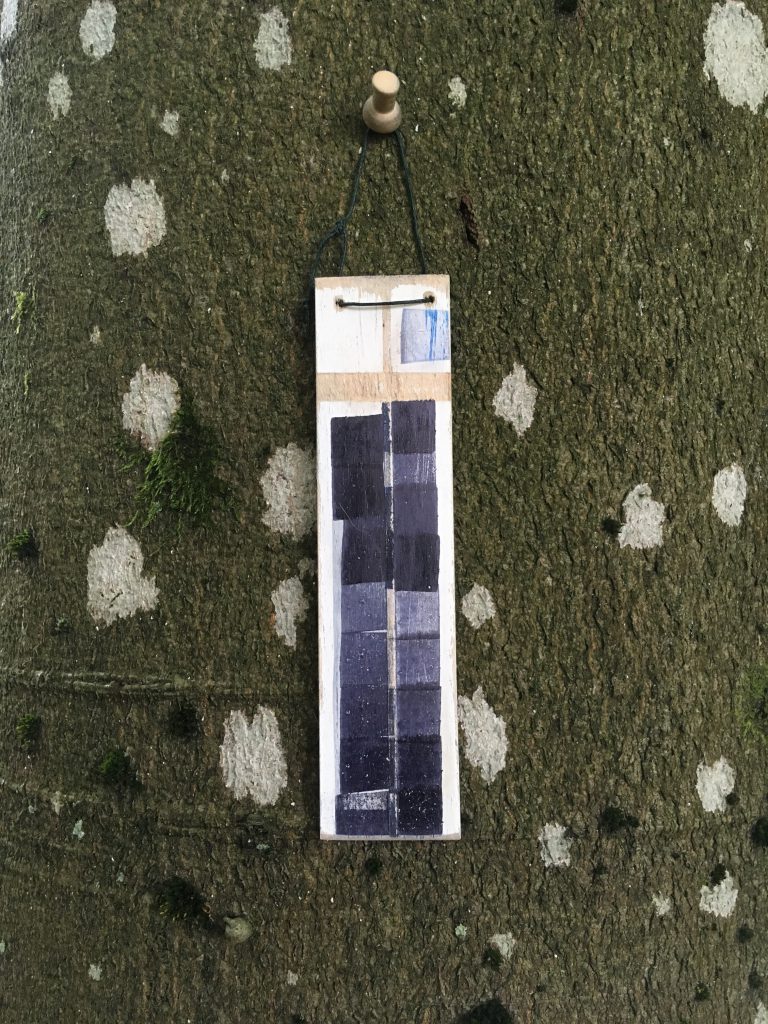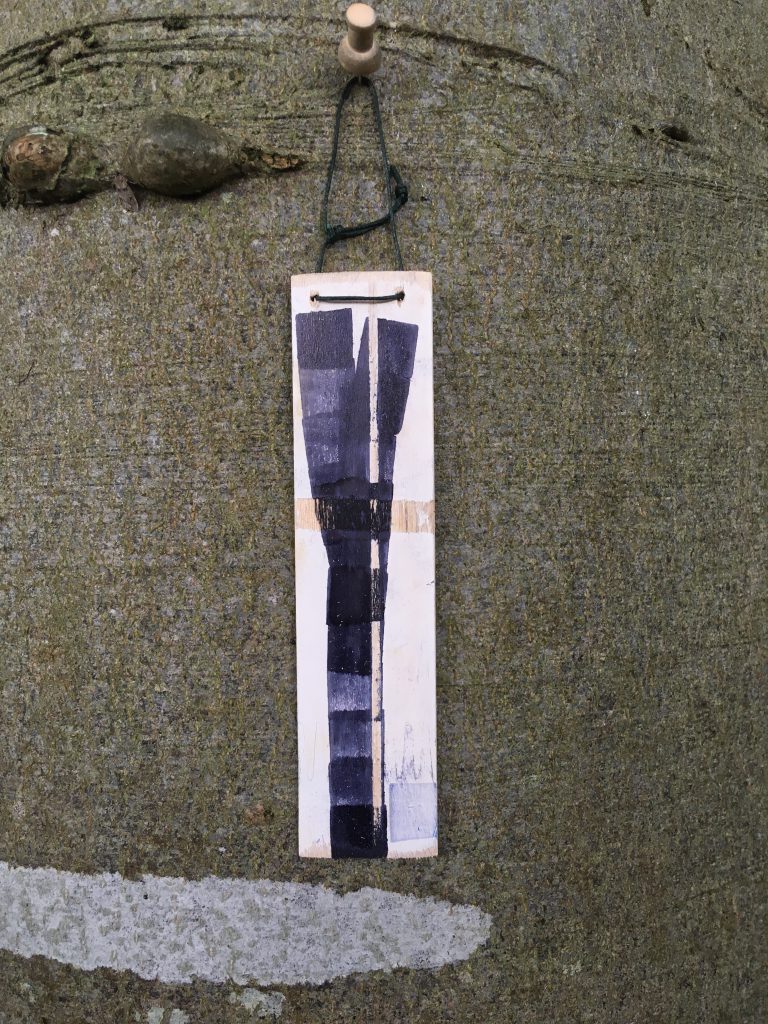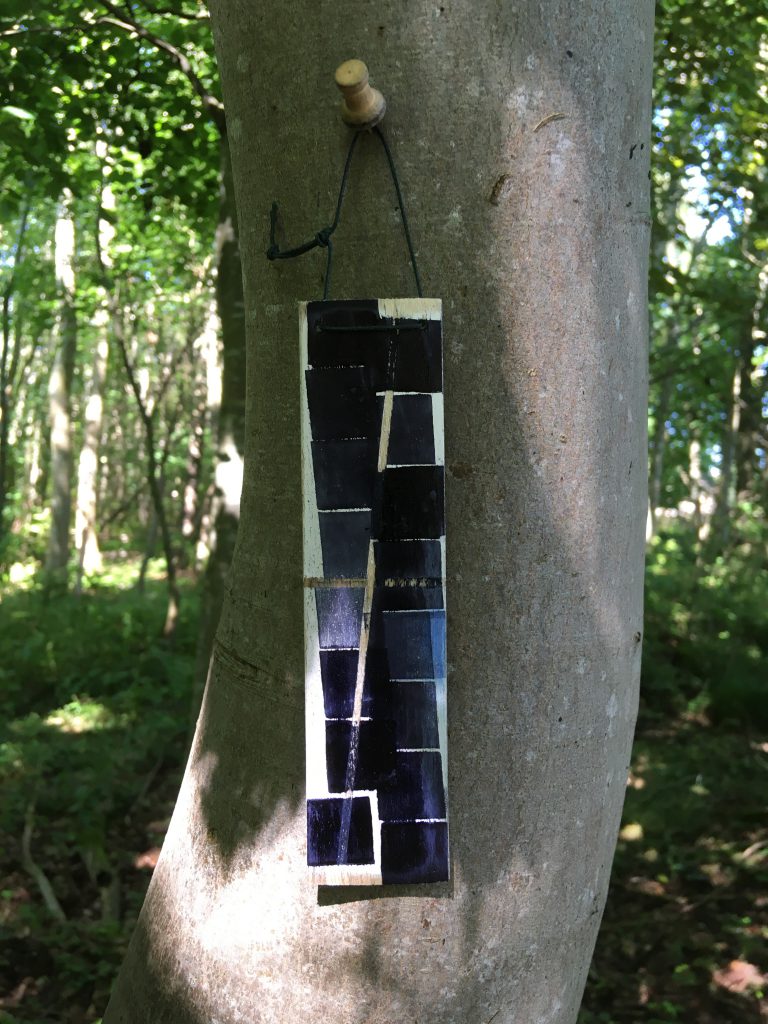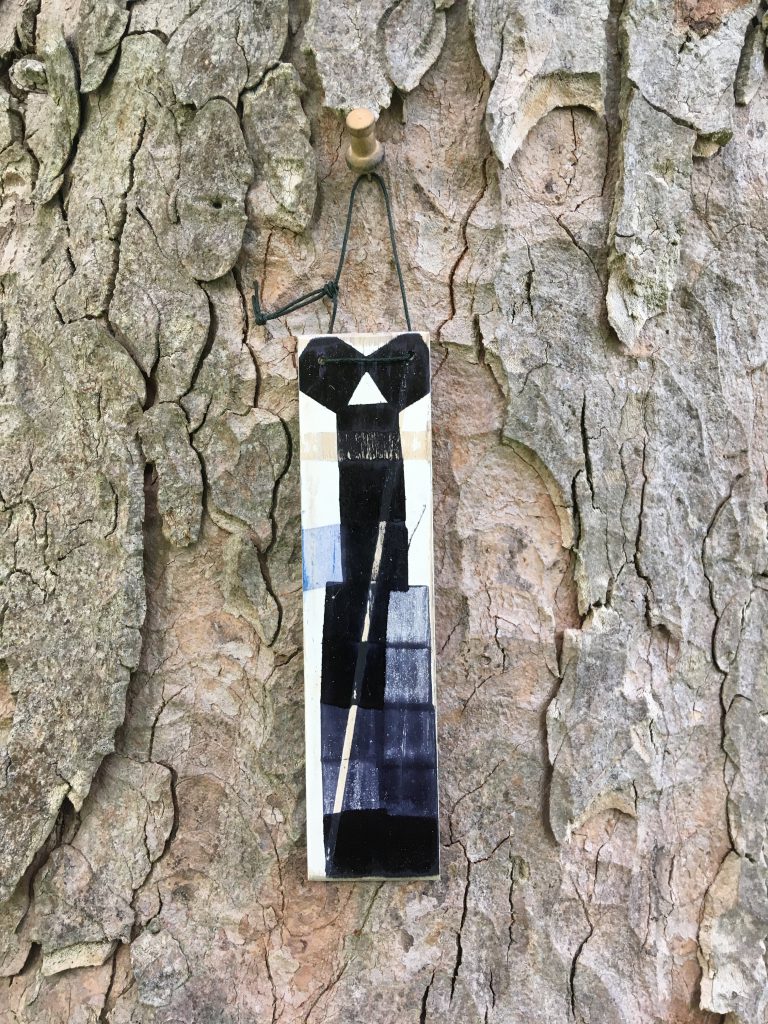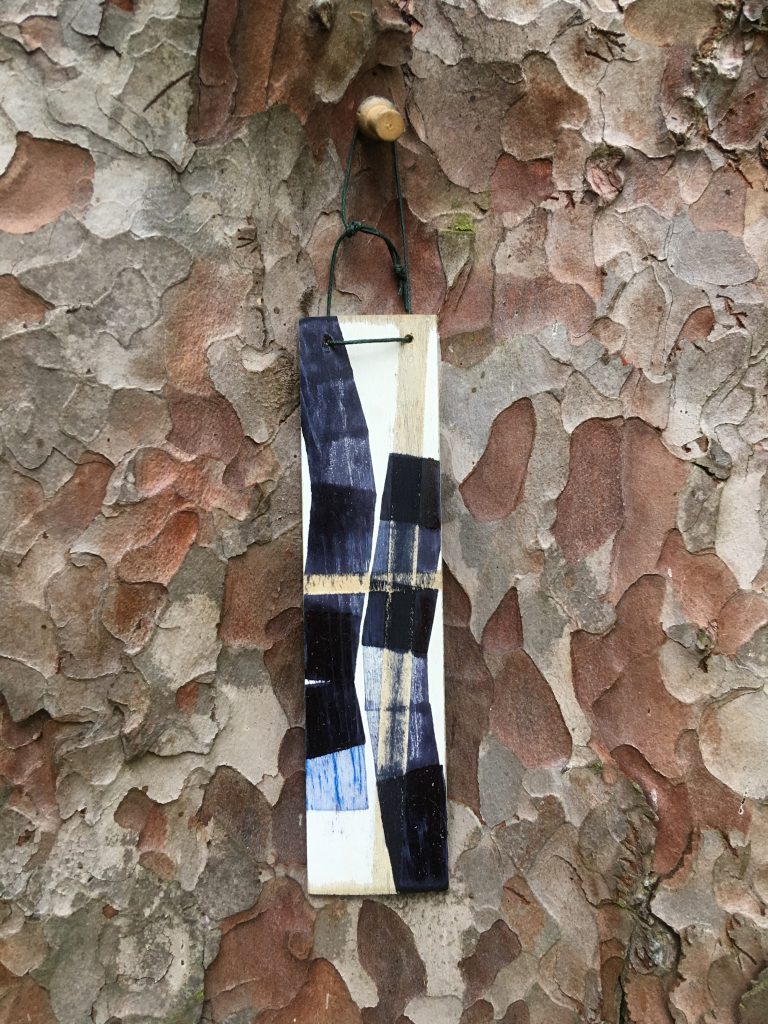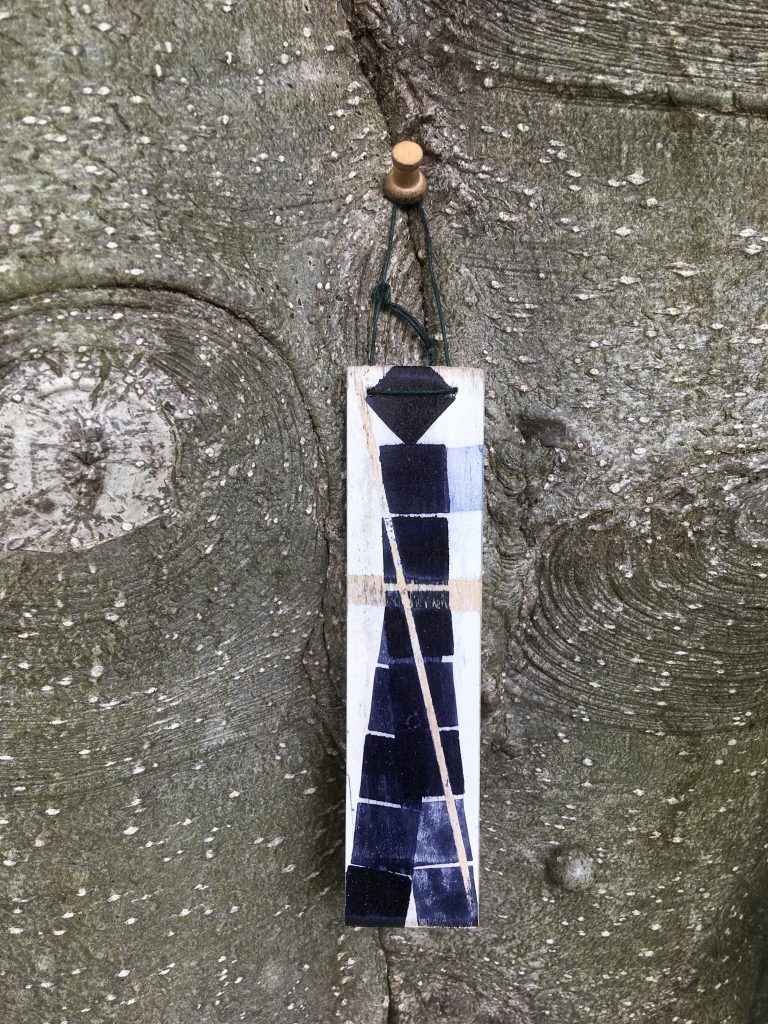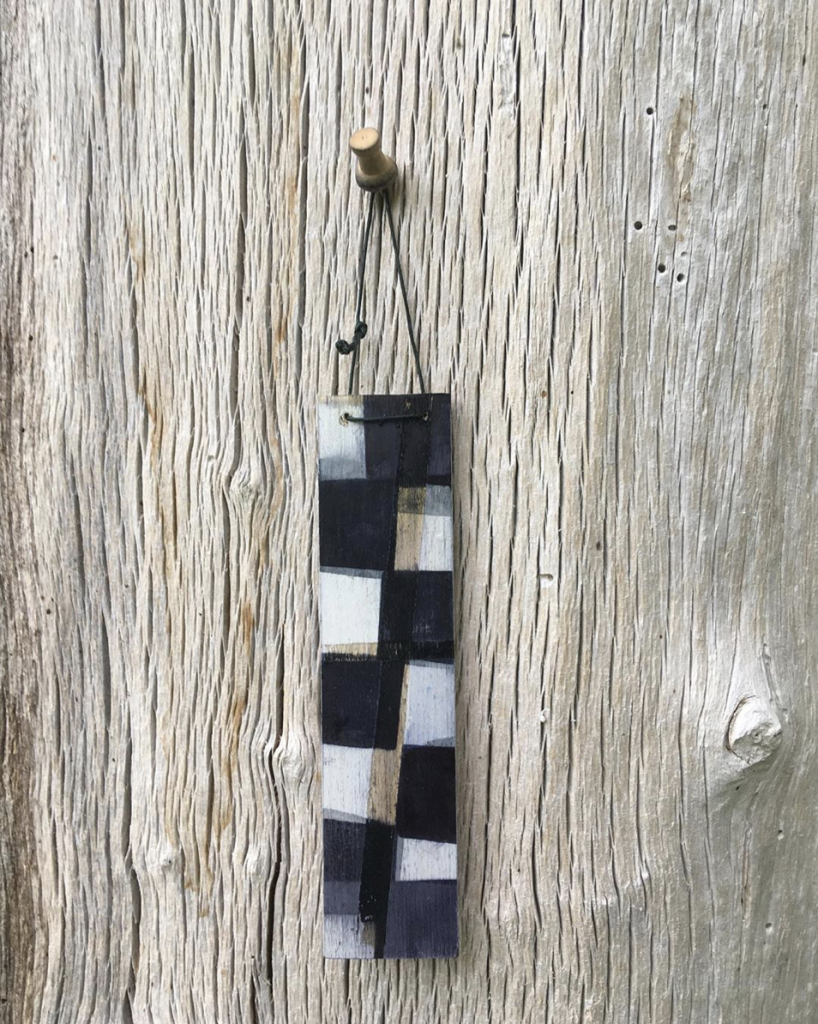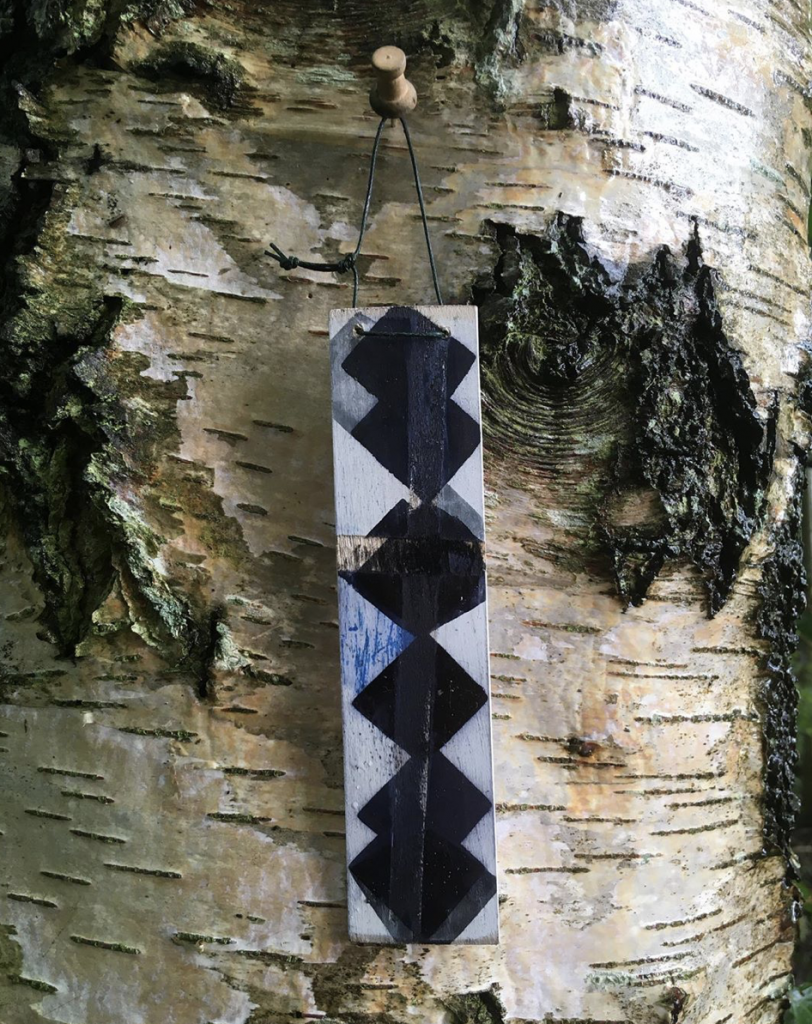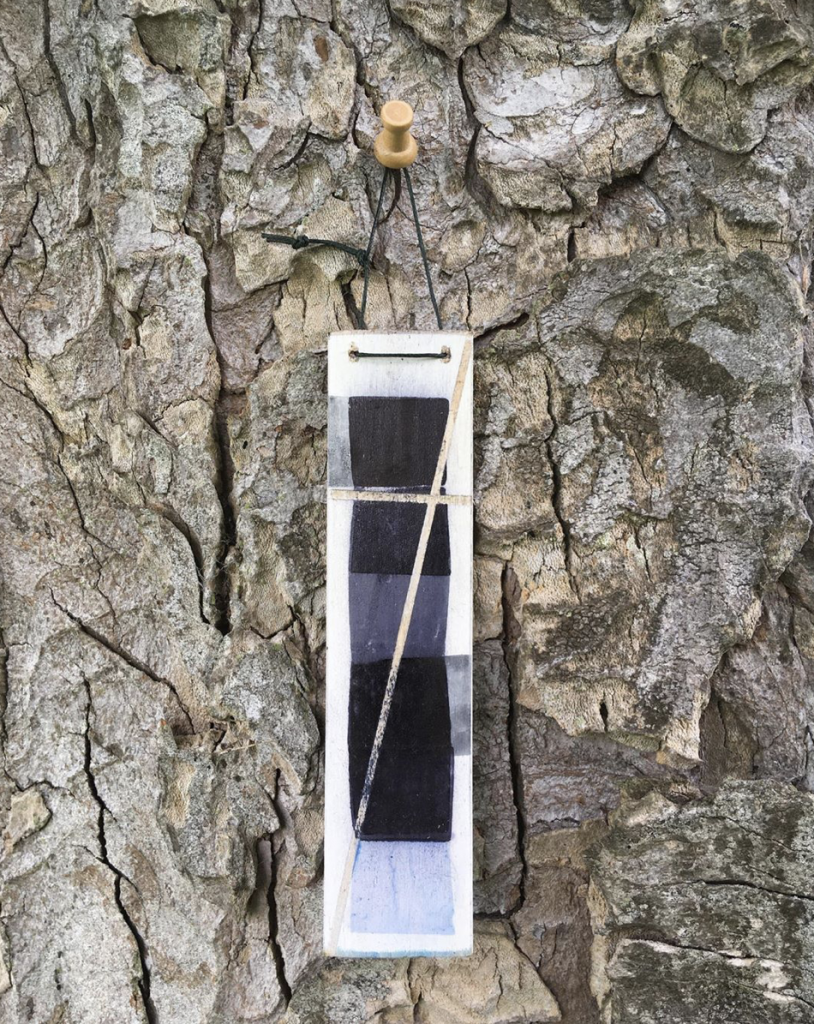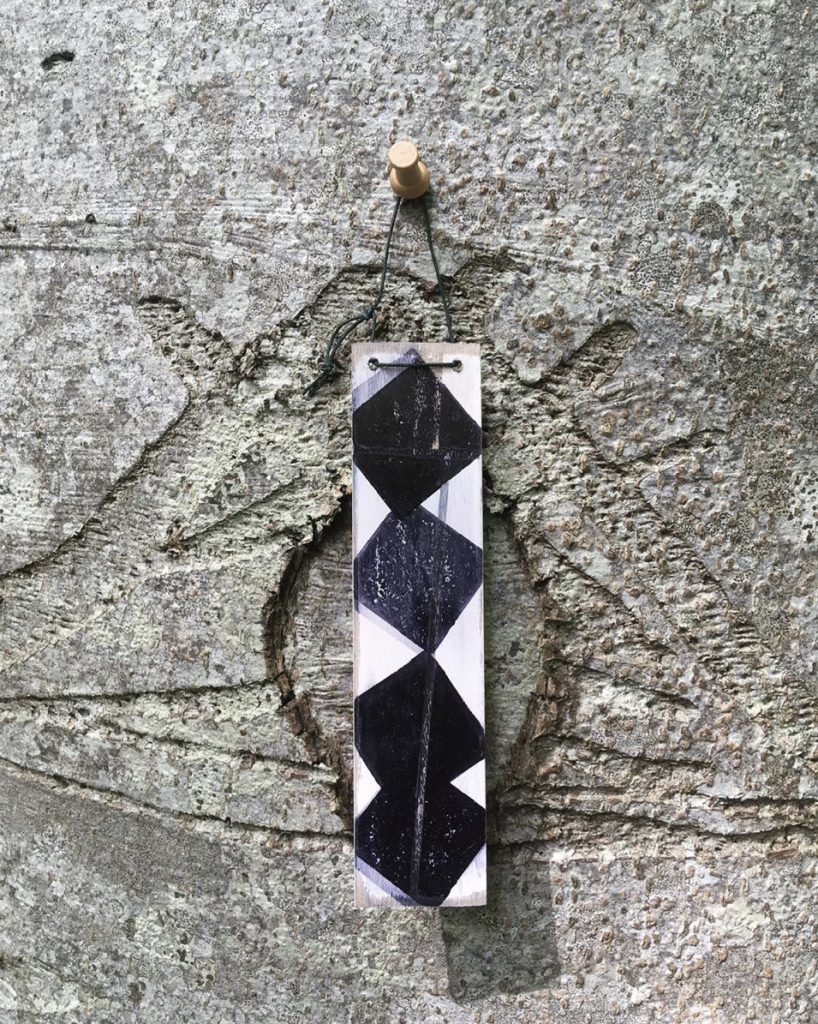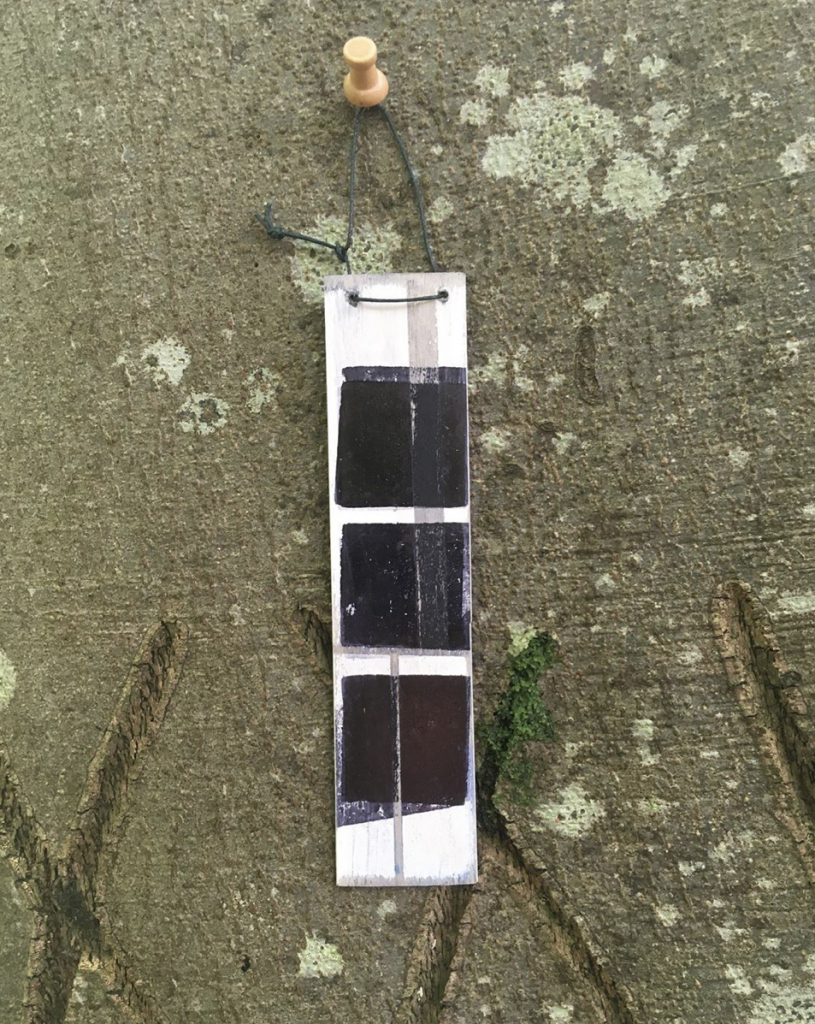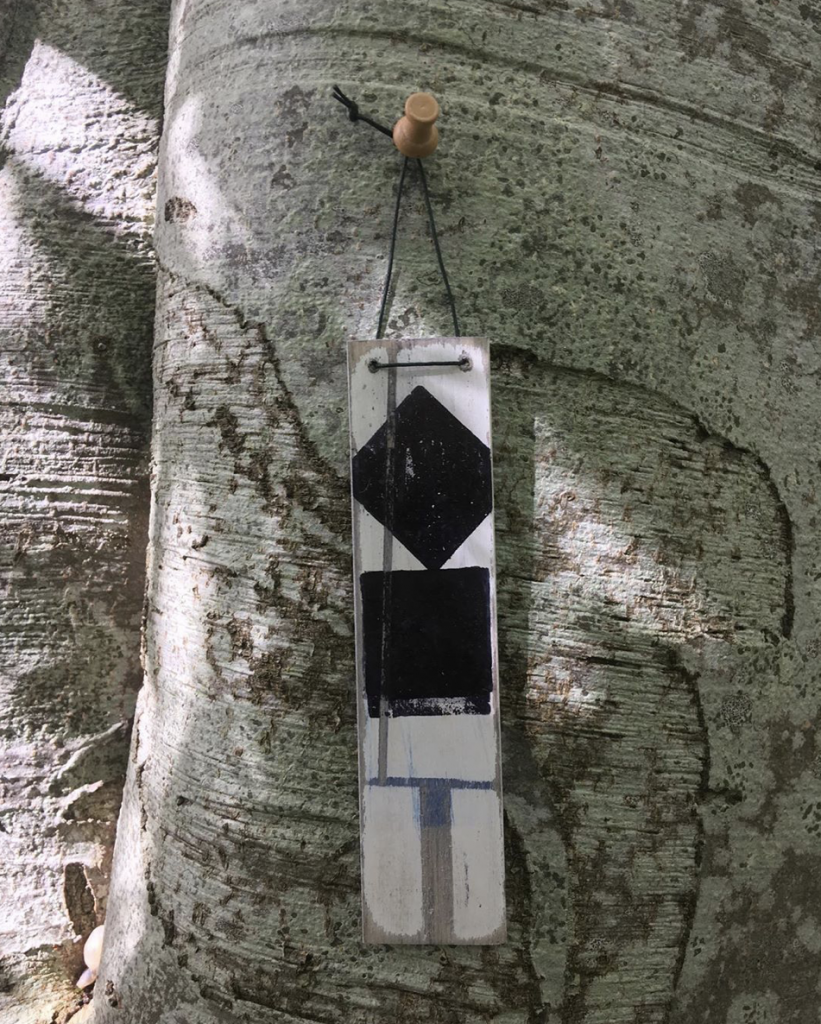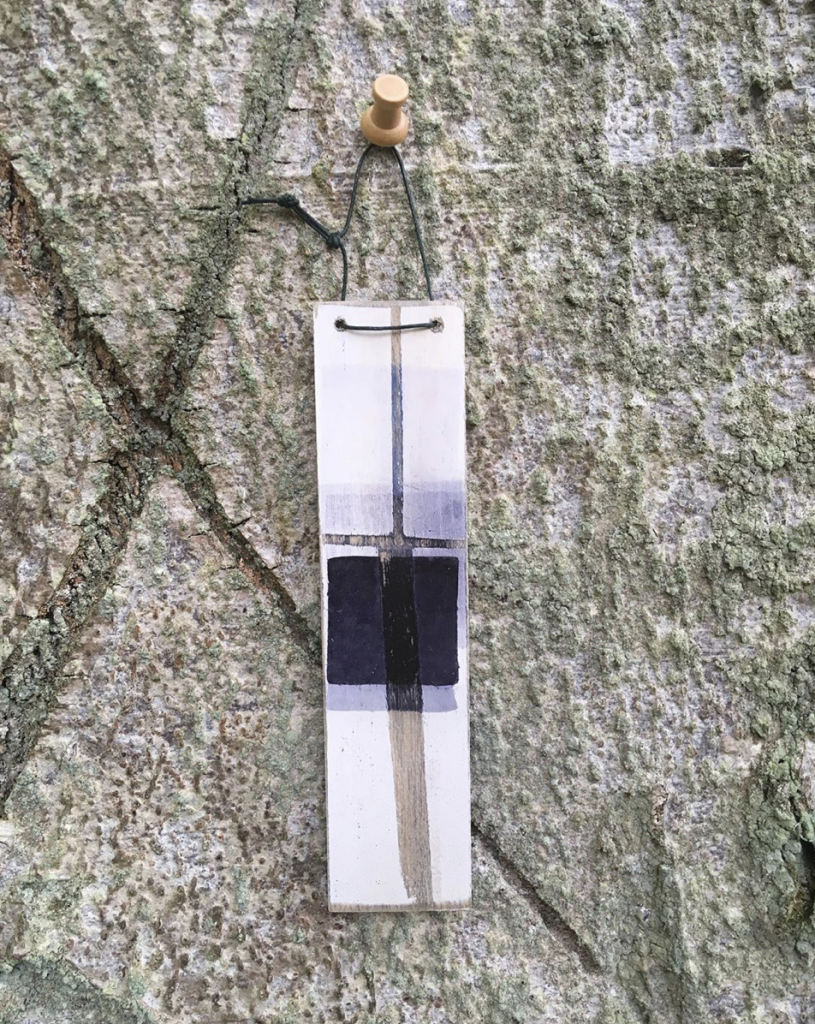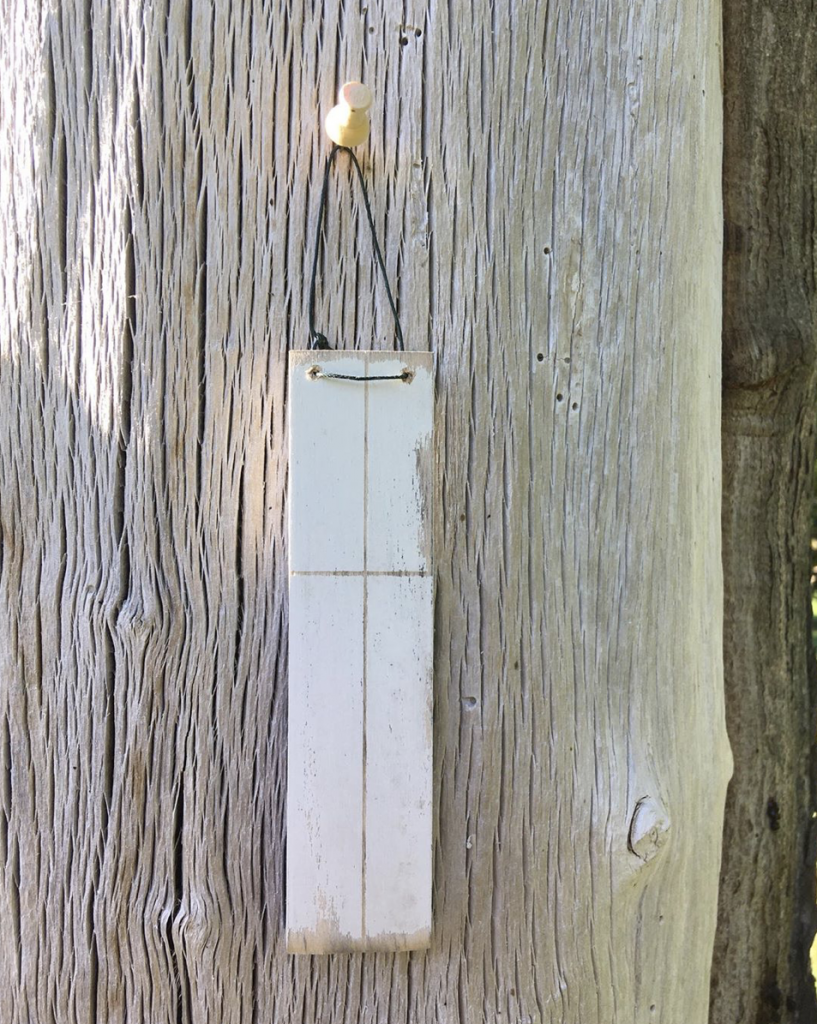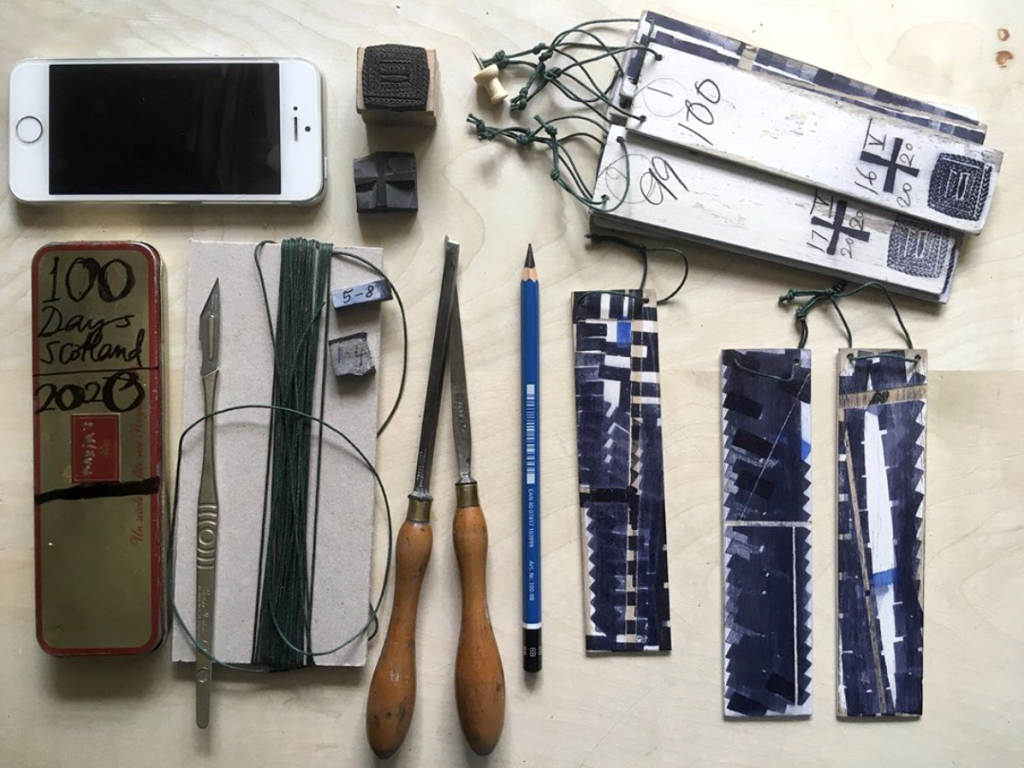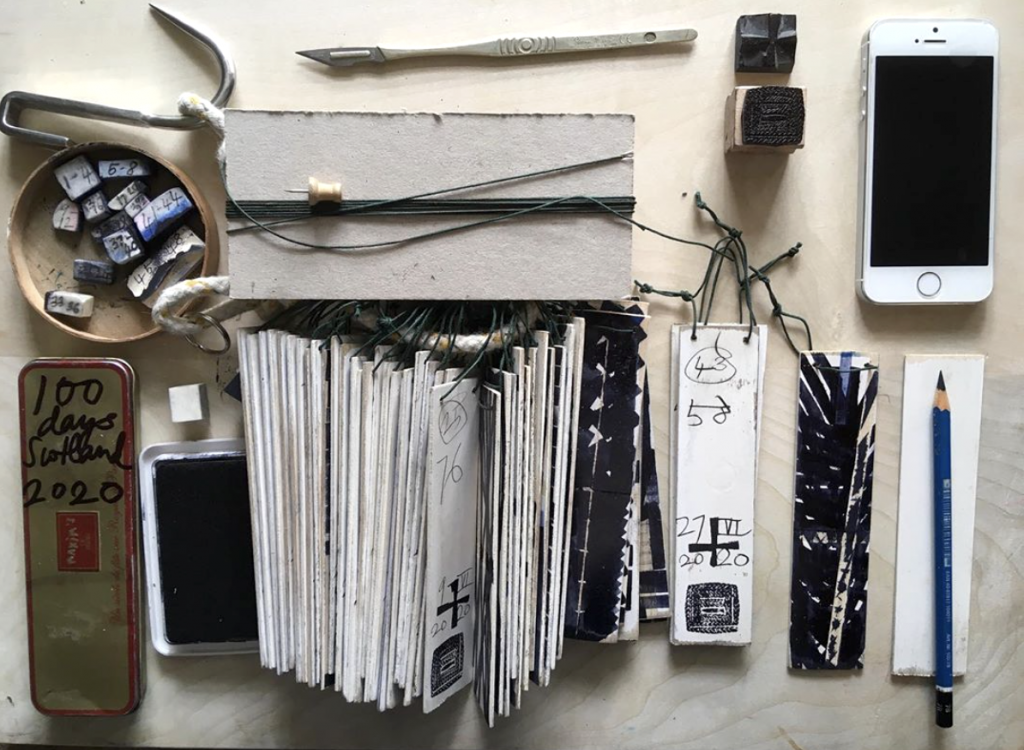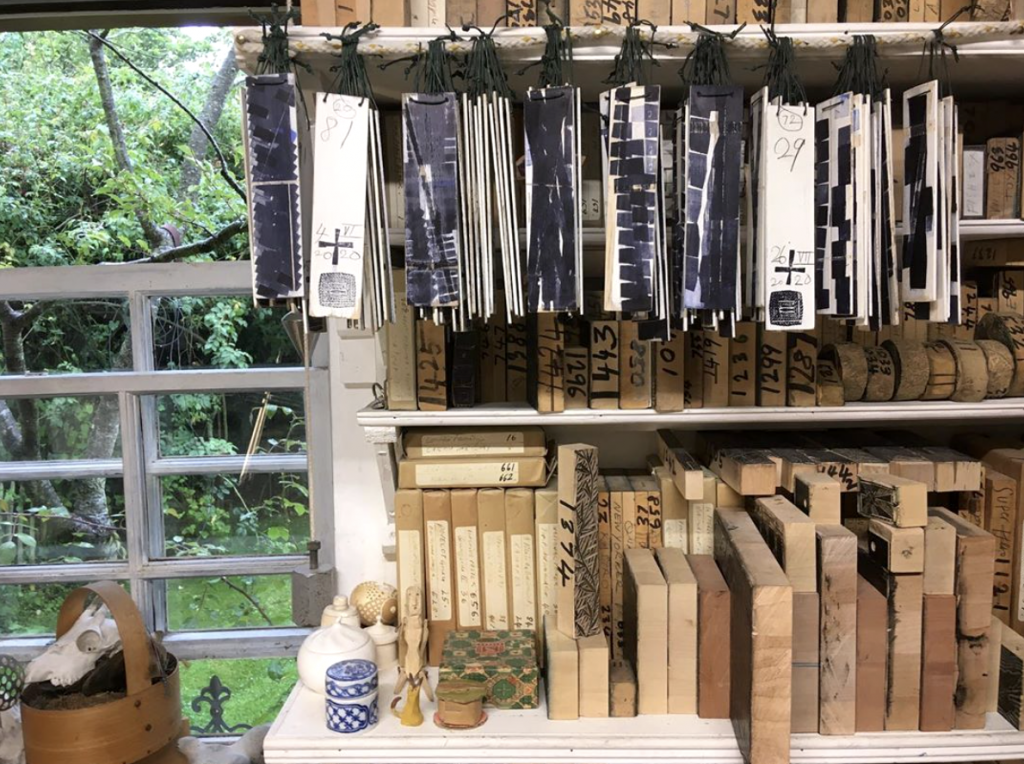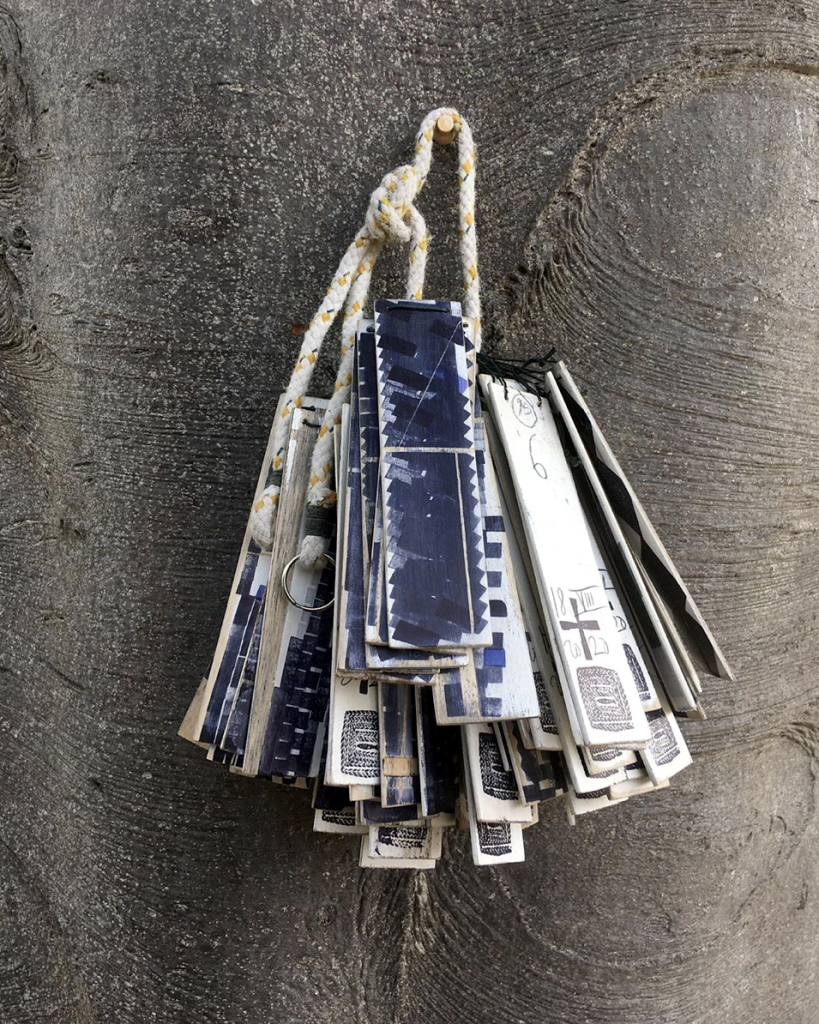#100
Earlier this year, on May 23rd, Jonathan Gibbs embarked on an ambitious series of small works, a hundred meditative variations, one every day for a hundred days and each one posted regularly on Instagram. He was inspired by the 100 Days Project, an initiative started by Emma Rogan in 2011 to repeat a simple creative task every day for the duration and to record each day’s efforts.
#99
I was intrigued by these little tablets pinned to the trees, I wanted to walk in these woods and follow the tree tags, the tree glyphs. Their marks seemed reflected in the bark of the trees, they’re way-signs, they’re a river through the woods. Their repetition suggests music and I think of Terry Riley and I’m swept along by the flow of images.
#98
#97
#96
#95
#94
#93
#92
#91
#90
I asked Jonathan if we might share them on Frames of Reference. He agreed and kindly supplied some words to accompany the images. And I realised this was the second time he’d done the 100 Days Project.
#89
This monotype series appears similar to the previous 100 Days Scotland 2019.
#88
However, this year’s 100 Days prints have been made during lockdown and the project has been more concerned with landscape, nature, and a sense of place.
#87
I have cut many small pieces of rubber/eraser to create the imagery, permanently impressed onto wood panels with archival ink. This is a black pigment, but not really black, and they are multiple combinations with each day having its requisite number of shapes.
#86
I have made a new stamp every four days, so there are 25 different rectangles over the span of one hundred. In one of the studio photographs these pieces are arranged in a fishing cast box.
#85
Before printing onto the wood, I carve a cross-like structure into the surface.
#84
This is a formal pictorial device and no symbolic meaning is intended.
#83
I have always liked folded maps, blueprints, cards, brochure-formats, letters, scripts, and sheets of paper in which the fold divides and defines the proportion of the whole.
#82
It is a ritual.
#81
Actually, I have made many paintings and drawings in which folding or dividing is the prime subject.
#80
Back to 100 Days 2020, the wood-panel is drilled at the top & string attached.
#79
The print is placed in a tin and I set off for a run or cycle ride.
#78
Or perhaps to walk down the hill for an icy immersion in Keith Water.
#77
En-route at some point, this portable artwork is pinned to a tree for its photograph.
#76
There has been a ritualistic aspect to this project, a rhythm of days, the season, weather and changes of light. A different tree-bark background has been used to exhibit each picture. This tells a story of where I live, and a few brief journeys further afield. During lockdown, these were necessitated by momentous family events.
#75
#74
#73
#72
#71
#70
The 2020 image size will be consistent during the passing of 100 days using a miniature, vertical, portrait format.
#69
The monotype prints are made on sawn pieces of wood from a re-cycled Venetian-blind.
#68
(With many thanks to Myrtle & Richard Pont of Pathhead, who donated the blind.)
#67
A sense of proportion is one of the crucial elements of art, I believe.
#66
Pure abstraction stands by itself, even though it can be reminiscent of things seen. In the 100 Days diary and Venetian-blind monotypes there are stacks; rows; ordered arrangements; grids; geometrical divisions and random scatterings. All of these are merely compositional devices in which the positive is balanced against negative spaces, intervals, and proportions of form. In this process, I am aware of musical analogies between sound and the visual image.
#65
For both 100 Days 2019 & 20, I wanted to make a century of varied monotype images.
#64
These have been entirely improvised.
#63
They follow or contradict the linear structure of the surface.
#62
It is a simple concept; almost a game, but a serious game.
#61
All the images have been made on the spur of the moment, by chance and intuition.
#60
#59
#58
#57
#56
#55
As an artist I have been making purely abstract work since 1971, when I set out as a student of painting.
#54
Before, during and since that date I have also continued to draw from life – the figure, objects, interiors & landscape.
#53
Alongside predominately abstract painting, I make drawings, prints, illustrations and various other graphic works using a fertile flow of representational imagery.
#52
Such modes of making pictures and objects have run in parallel, separately, closely related threads throughout my artistic development.
#51
During sabbatical research in 2018 at the University of Edinburgh, I used an old diving board to make a woodcut. This was composed long-ways, in a horizontal landscape format.
#50
(With thanks to Fiona Martynoga of Traquair, who gave me the diving-board.)
#49
Diving-boards & venetian-blinds are made from timbers suited to their purposes.
#48
A pitch pine board will endure years of bouncing, thumping, running, jumping, drenching, sun & rain, chlorine, frost & snow etc., (outside pool), and of course diving.
#47
Slatted blinds are made of Basswood.
#46
This is a timber to withstand a lifetime of pulling up & down, peeking-through, cigarette-smoke, air-freshener & fly-spray, rattling, central heating/not-central heating, angle adjustments etc. Throughout, the slats remain flat and stable.
#45
Of course, this fulfils the simple function of keeping the light out; or keeping the light in.
#44
#43
#42
#41
#40
To conclude, 100 Days 2019 & 2020 are connected on both method and concept.
#39
Diaries are useful manufactured objects, as are diving-boards and Venetian-blinds.
#38
I have found it an inspiration to re-use these things for the purposes of art.
#37
Nevertheless, I am reminded of Oscar Wilde’s quote that ‘all art is quite useless’.
#36
#35
#34
#33
#32
#31
#30
#29
#28
#27
#26
#25
#24
#23
#22
#21
#20
#19
#18
#17
#16
#15
If ever there are final requests when stranded in deepest jungle or desert island, I would ask for Sandro Boticelli’s ‘Birth of Venus’, if this can be arranged.
#14
Or even ‘The Hunters in the Snow’ by Pieter Bruegel the Elder.
#13
Either masterpiece would add considerably to the quality of my isolated life.
#12
After all, they are made of canvas and wood.
#11
However, a fishing rod, penknife and saucepan would be useful, too.
#10
#9
#8
#7
#6
#5
#4
#3
#2
#1
#0
※
Jonathan Gibbs / The Rowley Gallery


